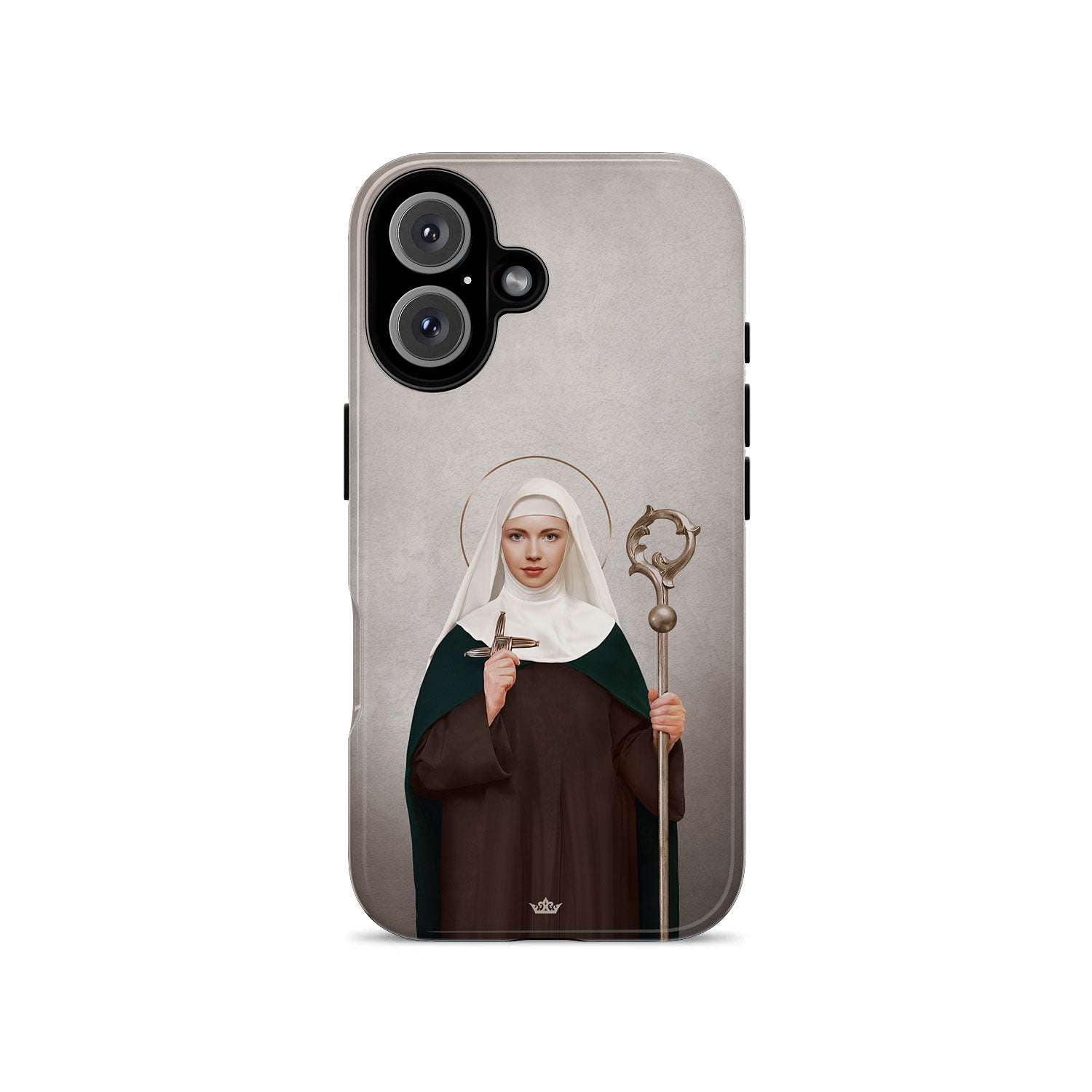
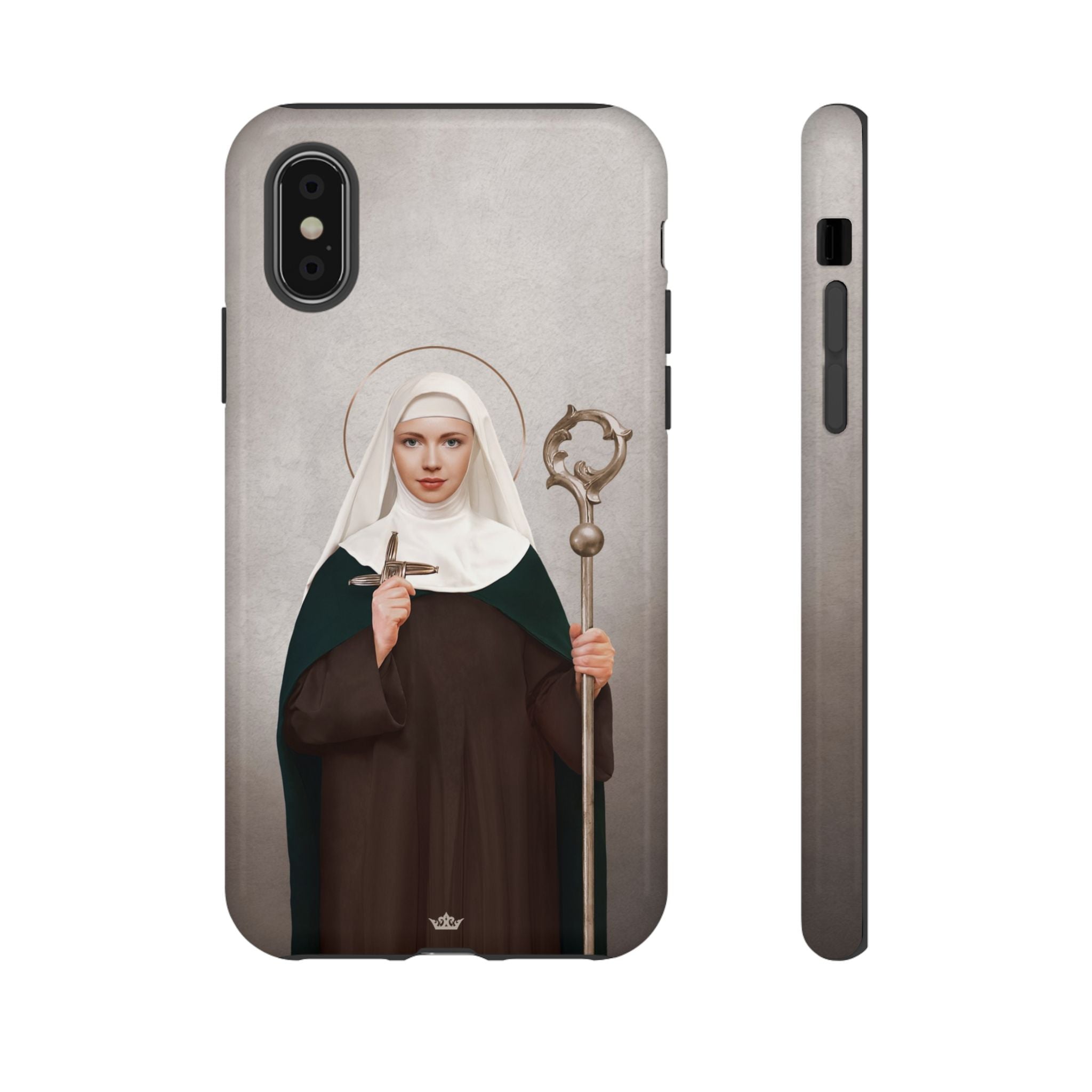
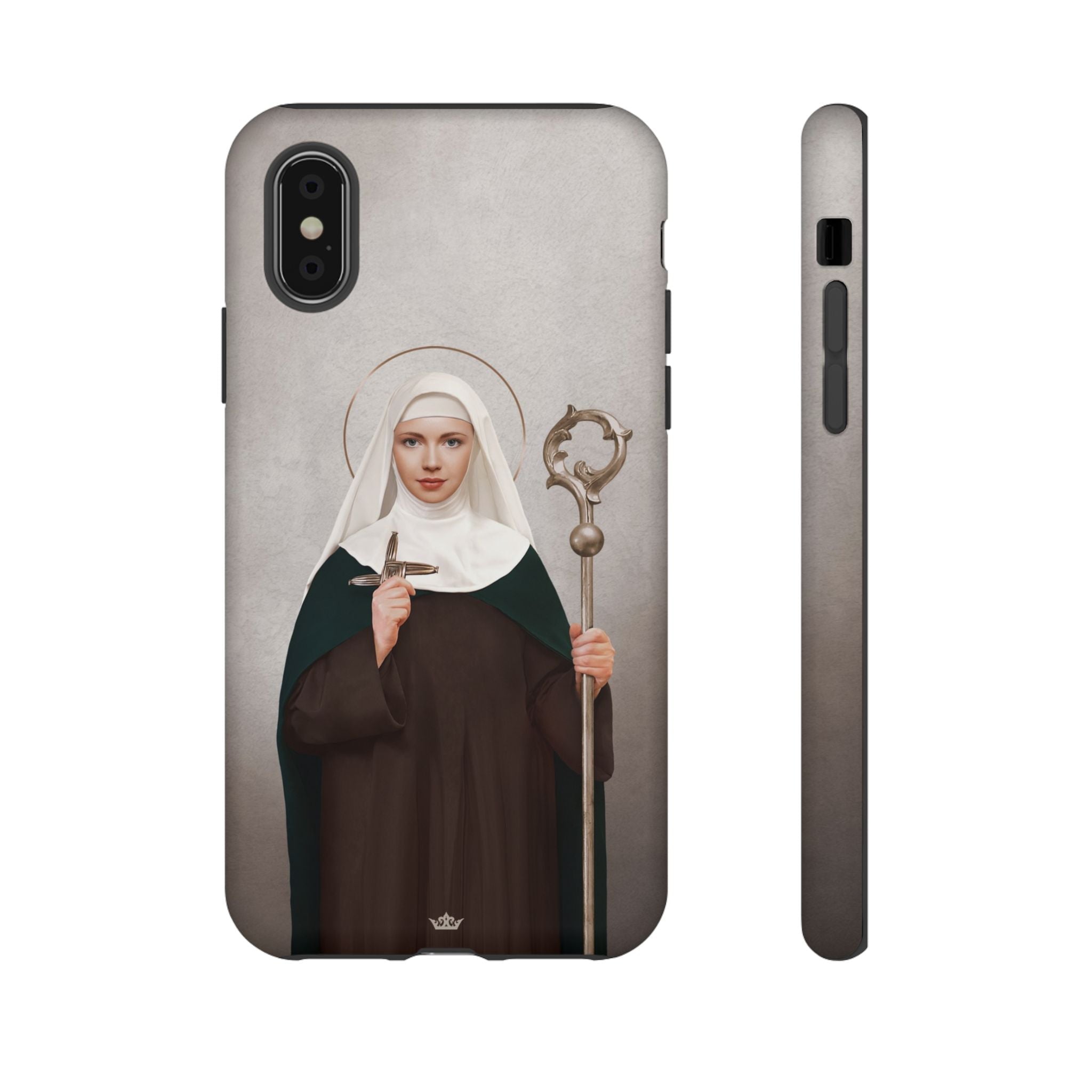


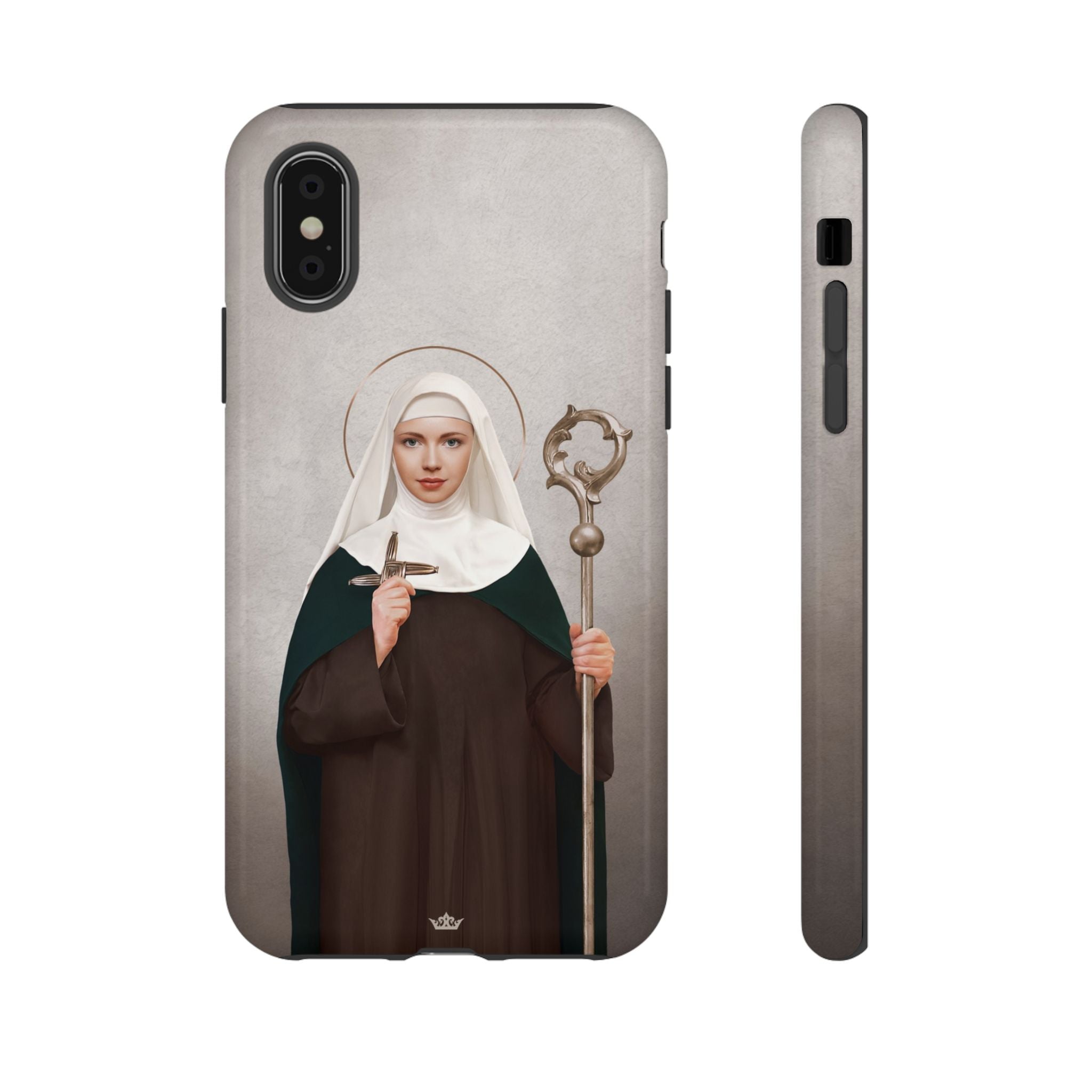
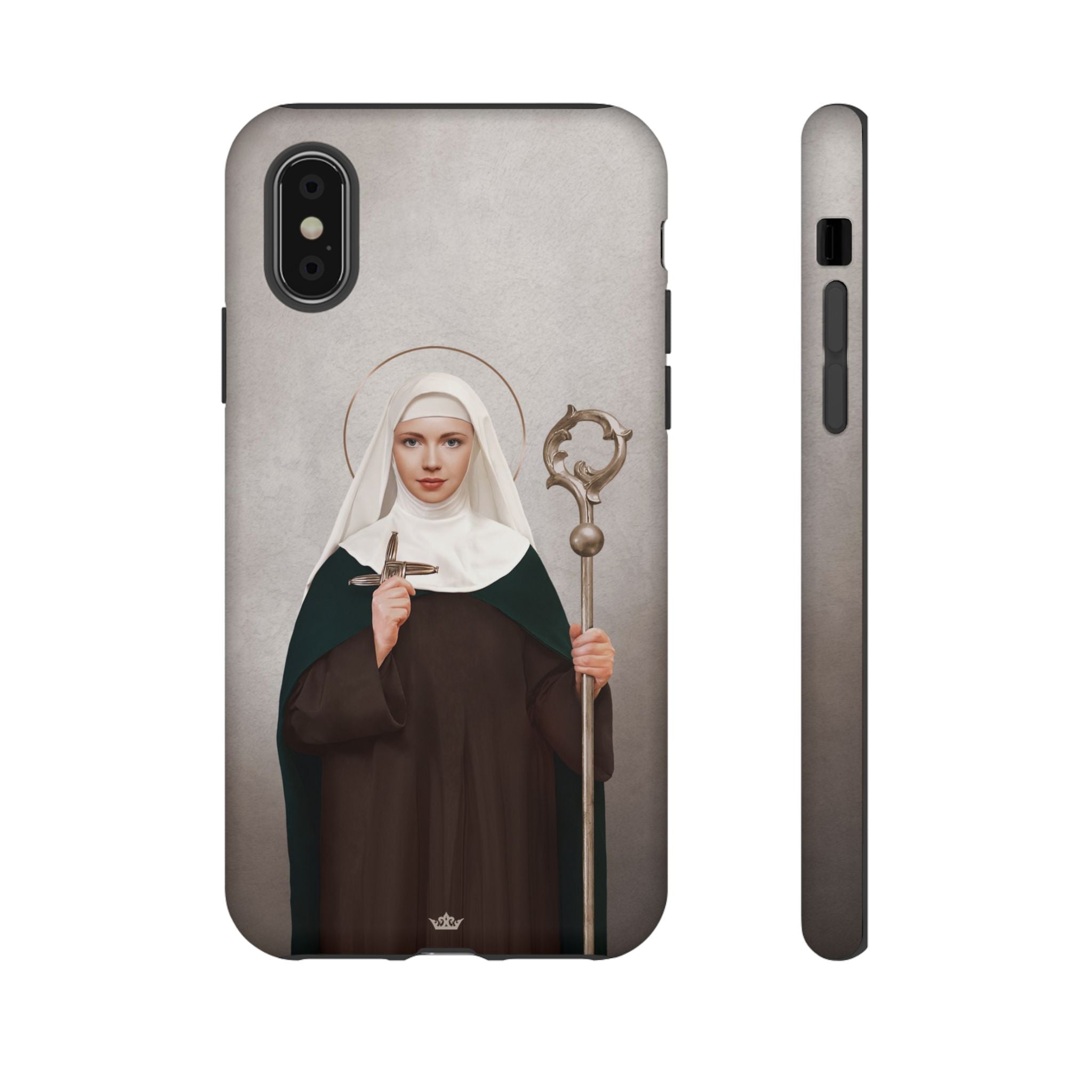

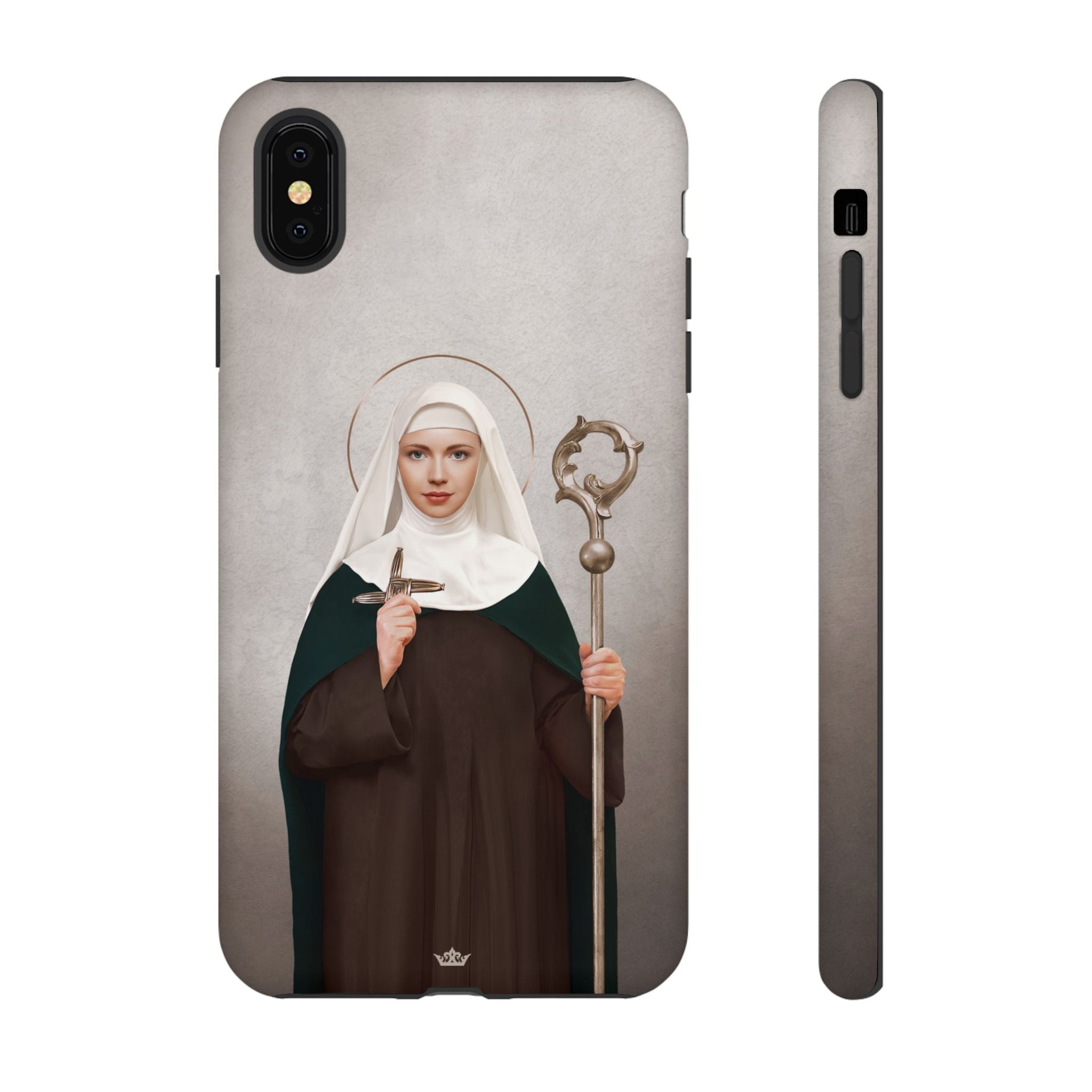
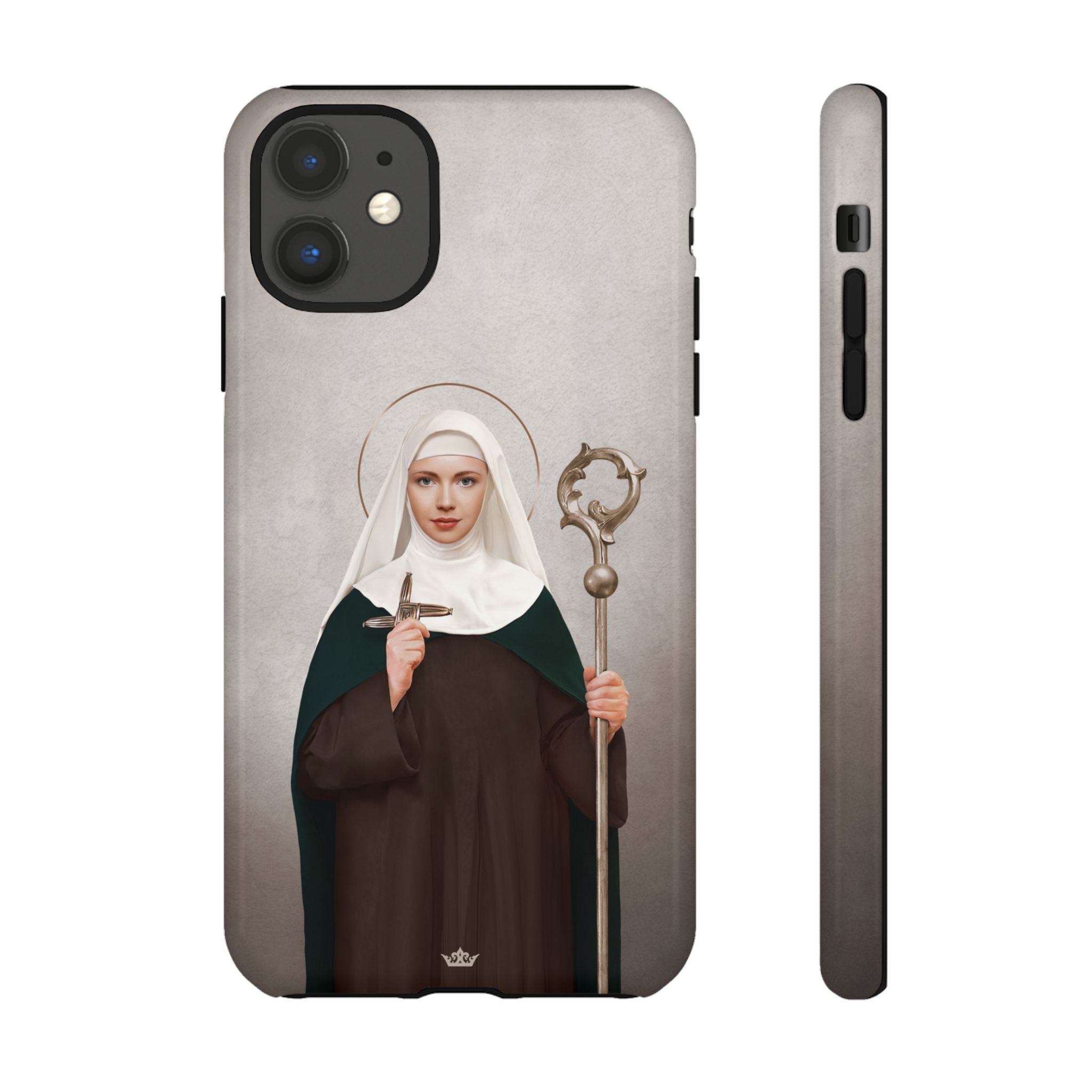
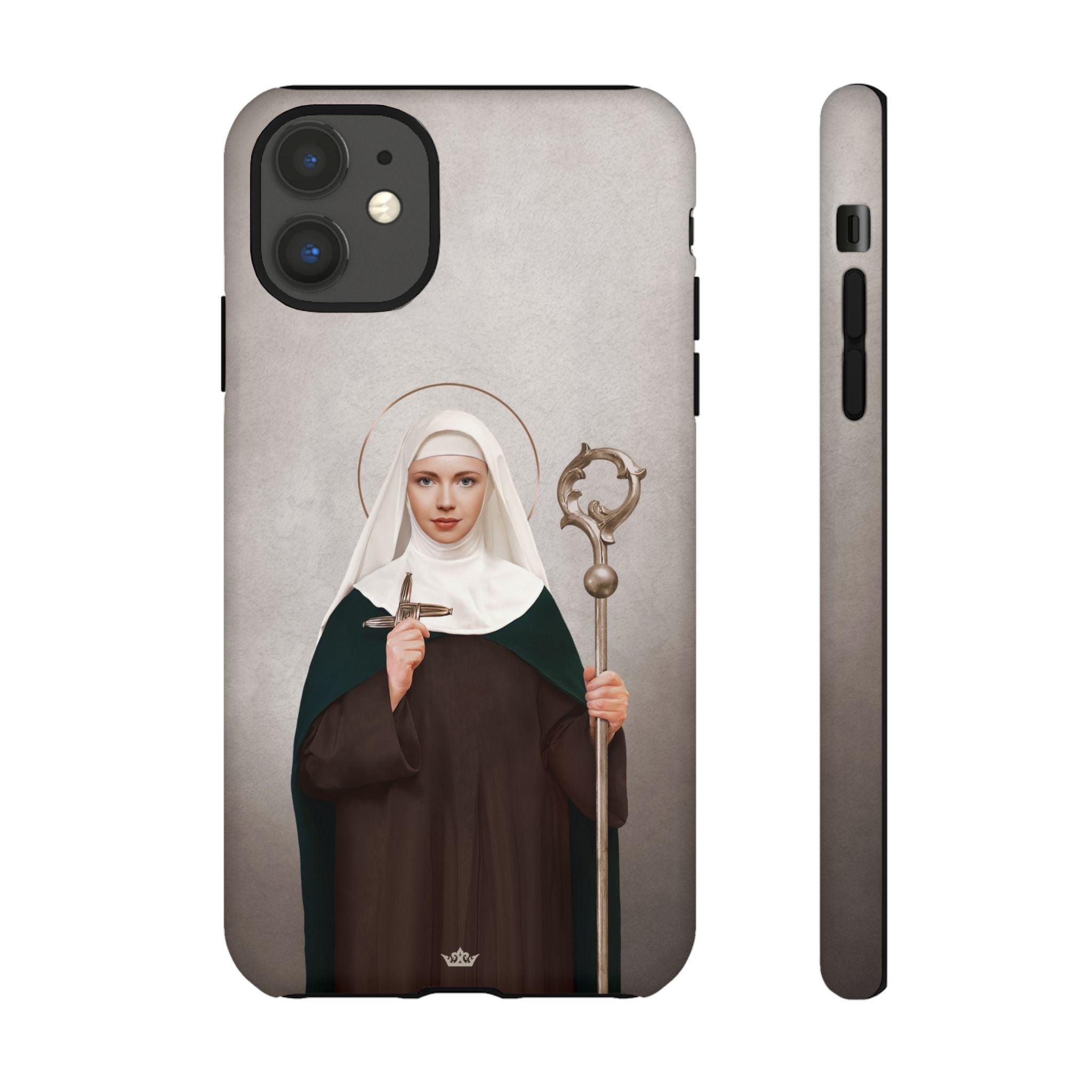
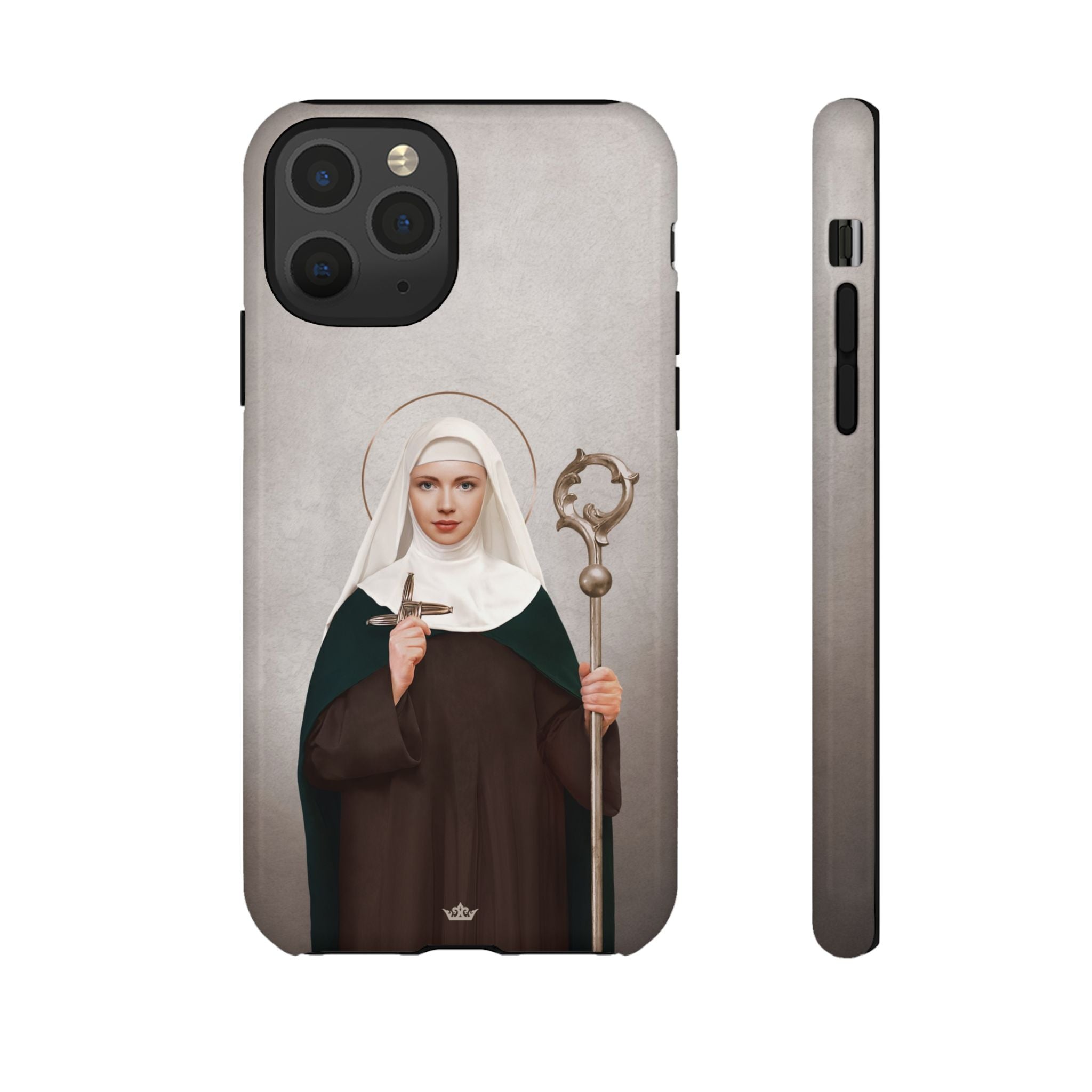
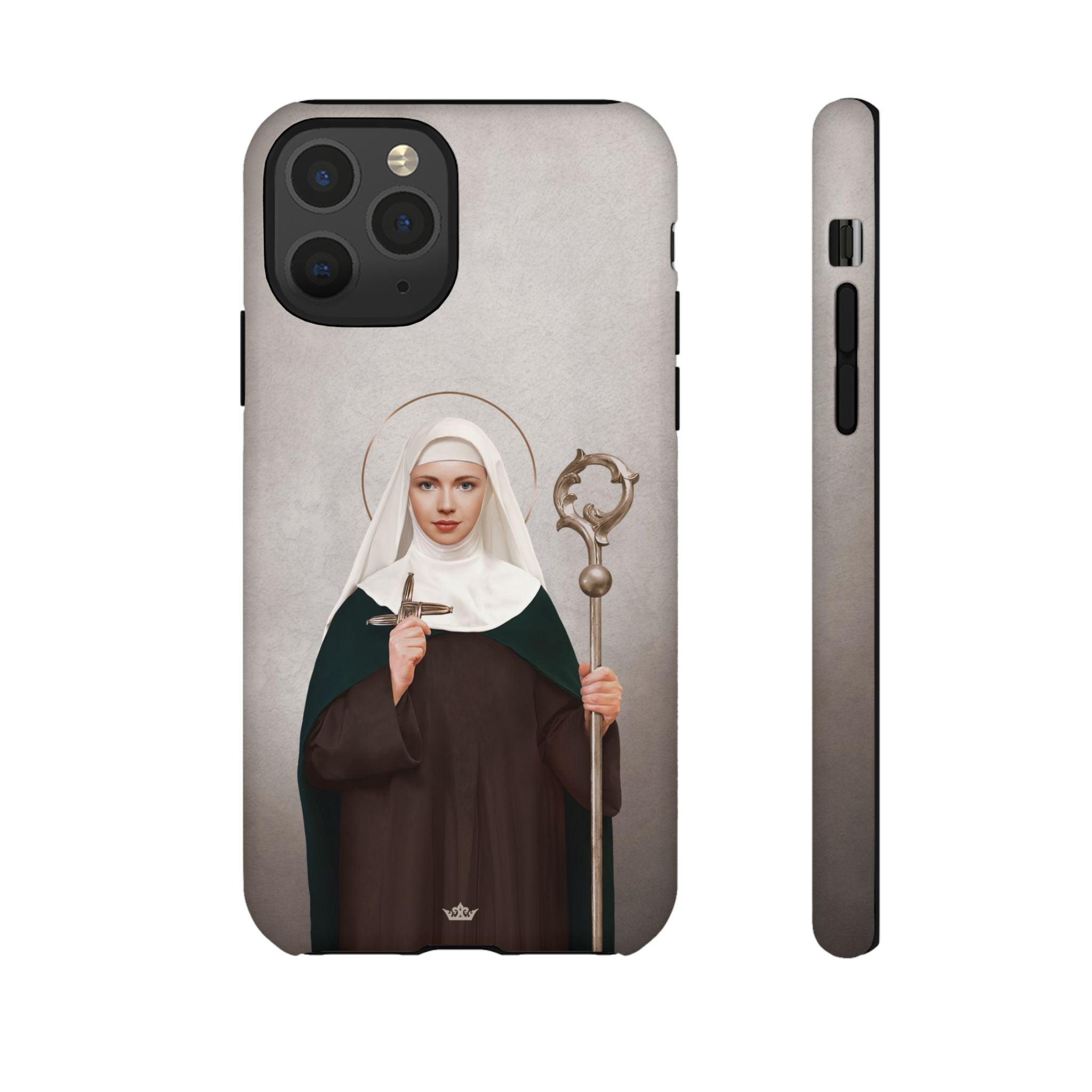
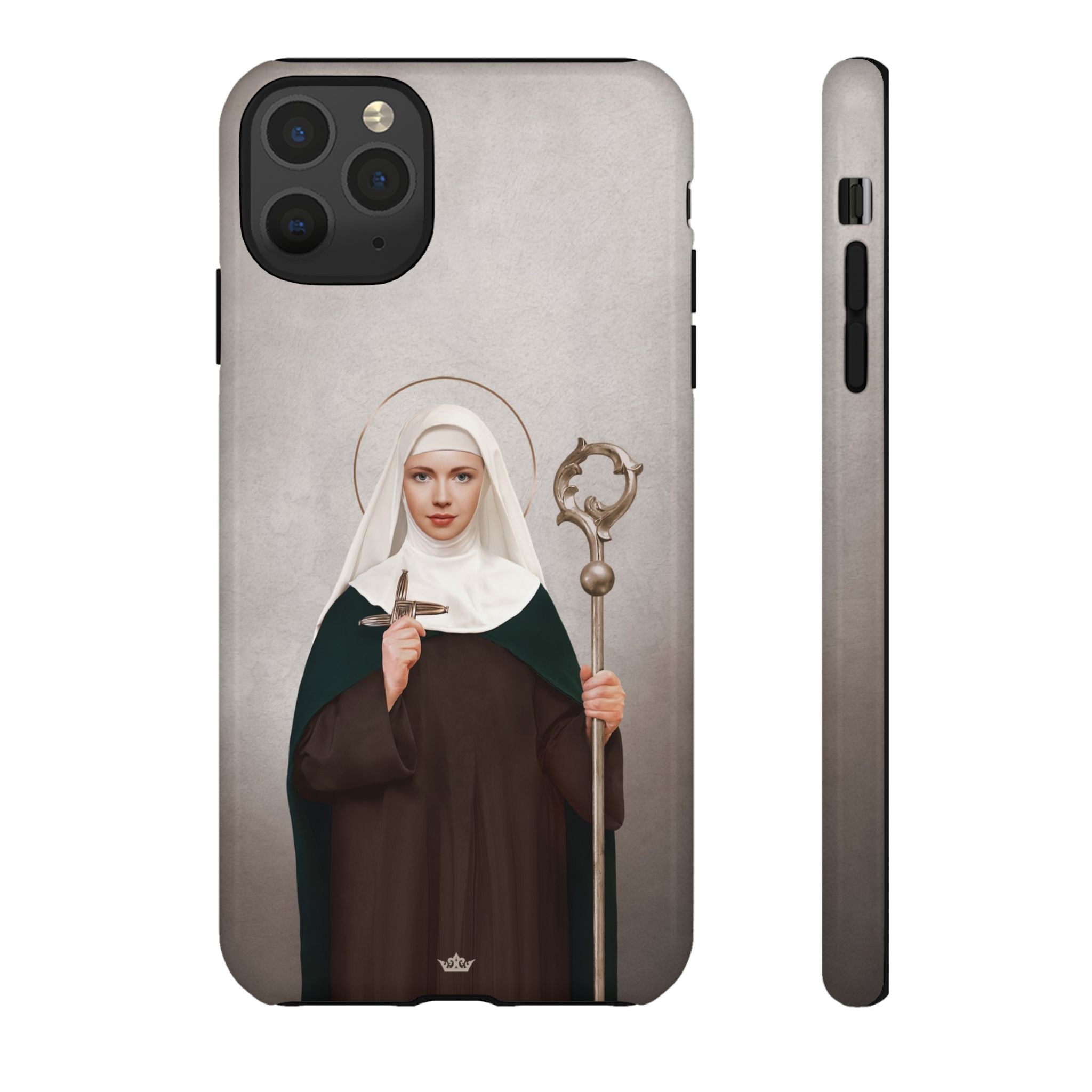
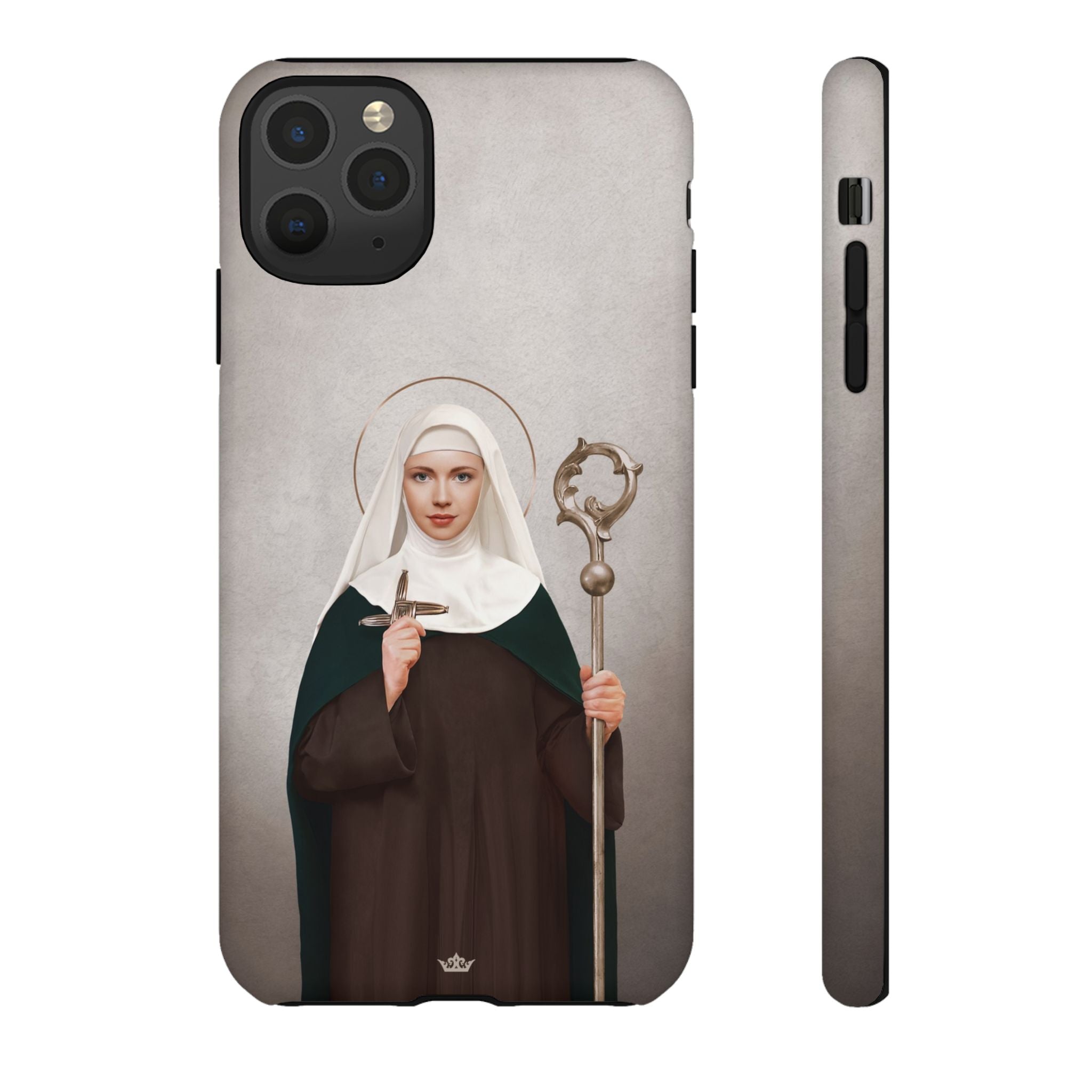


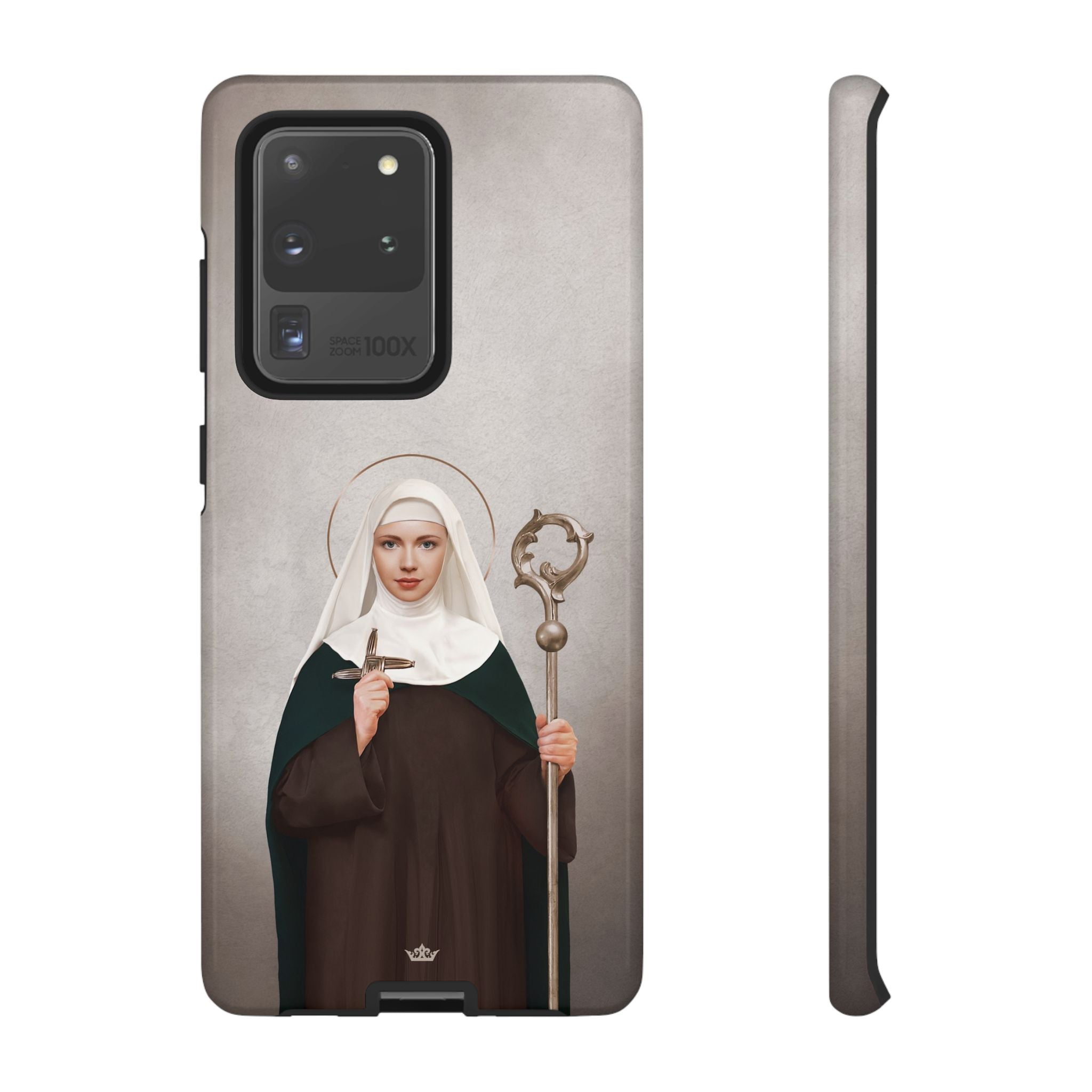
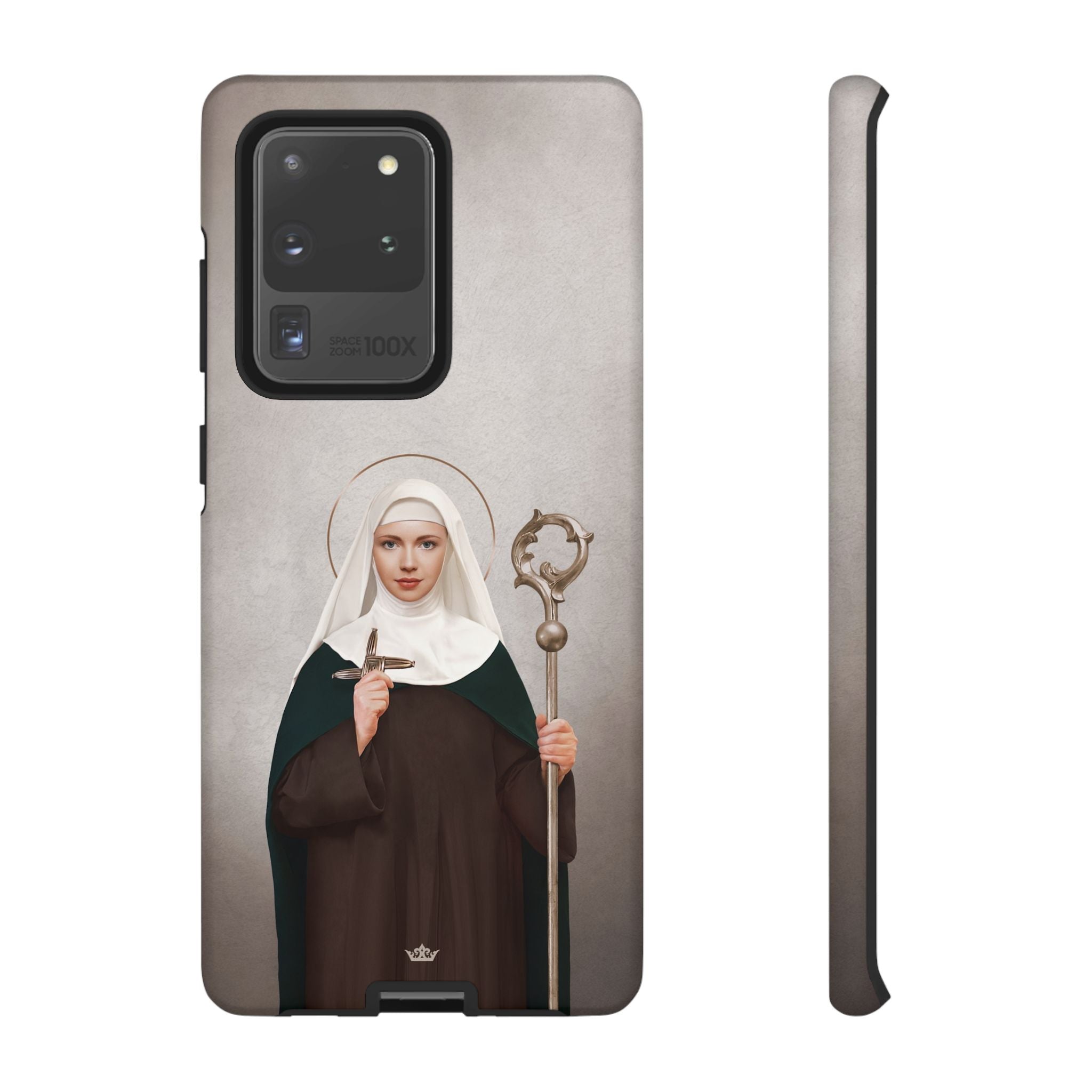

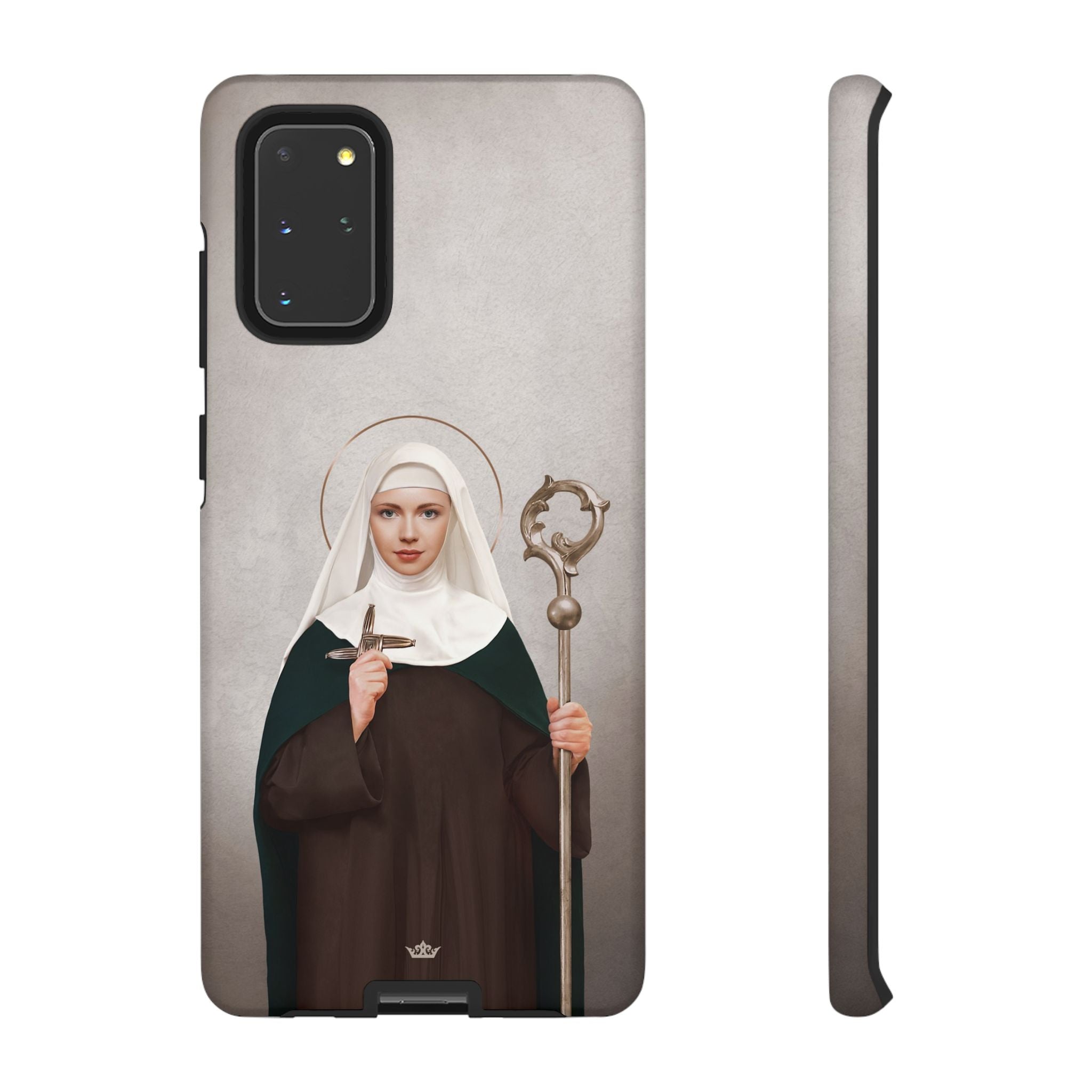
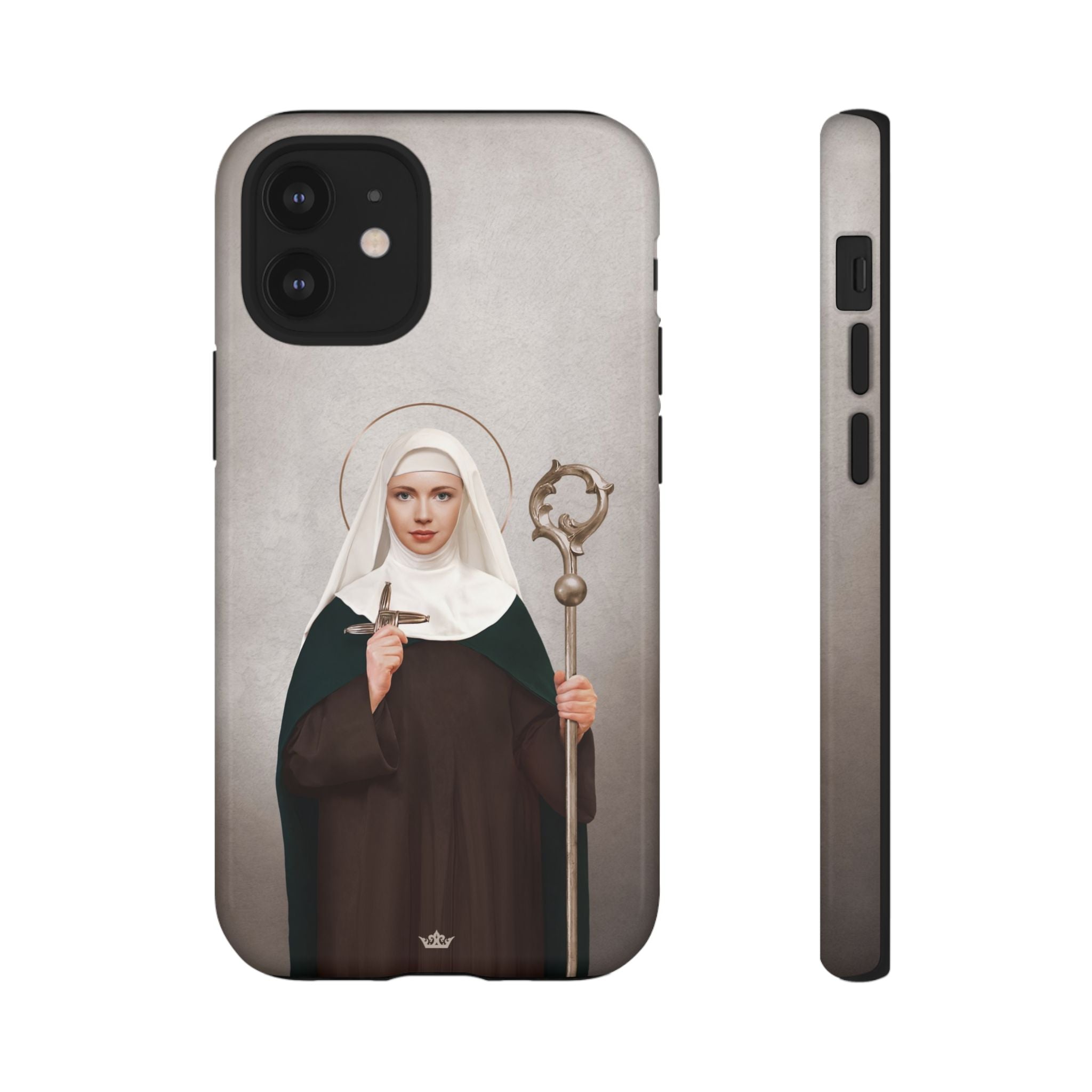
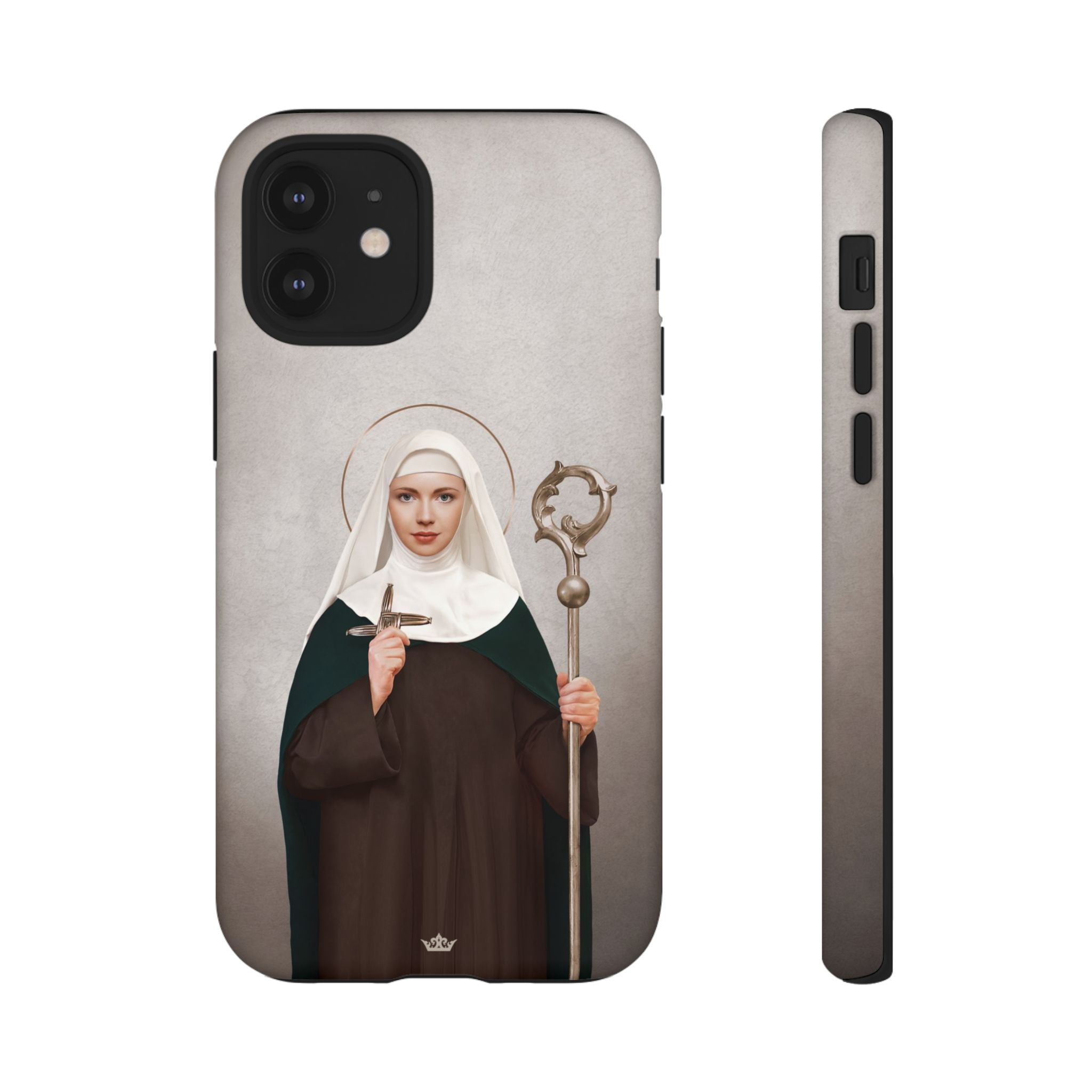
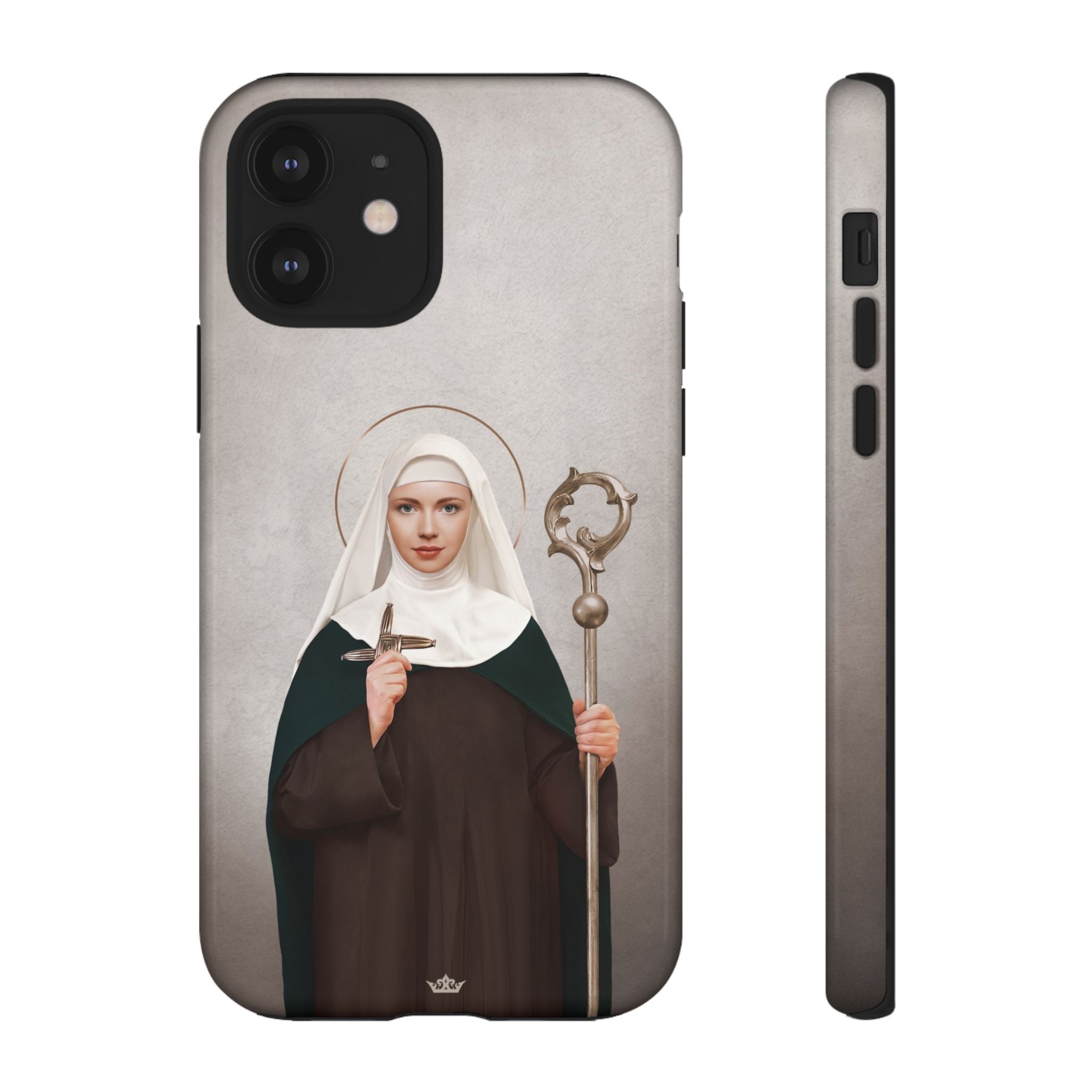
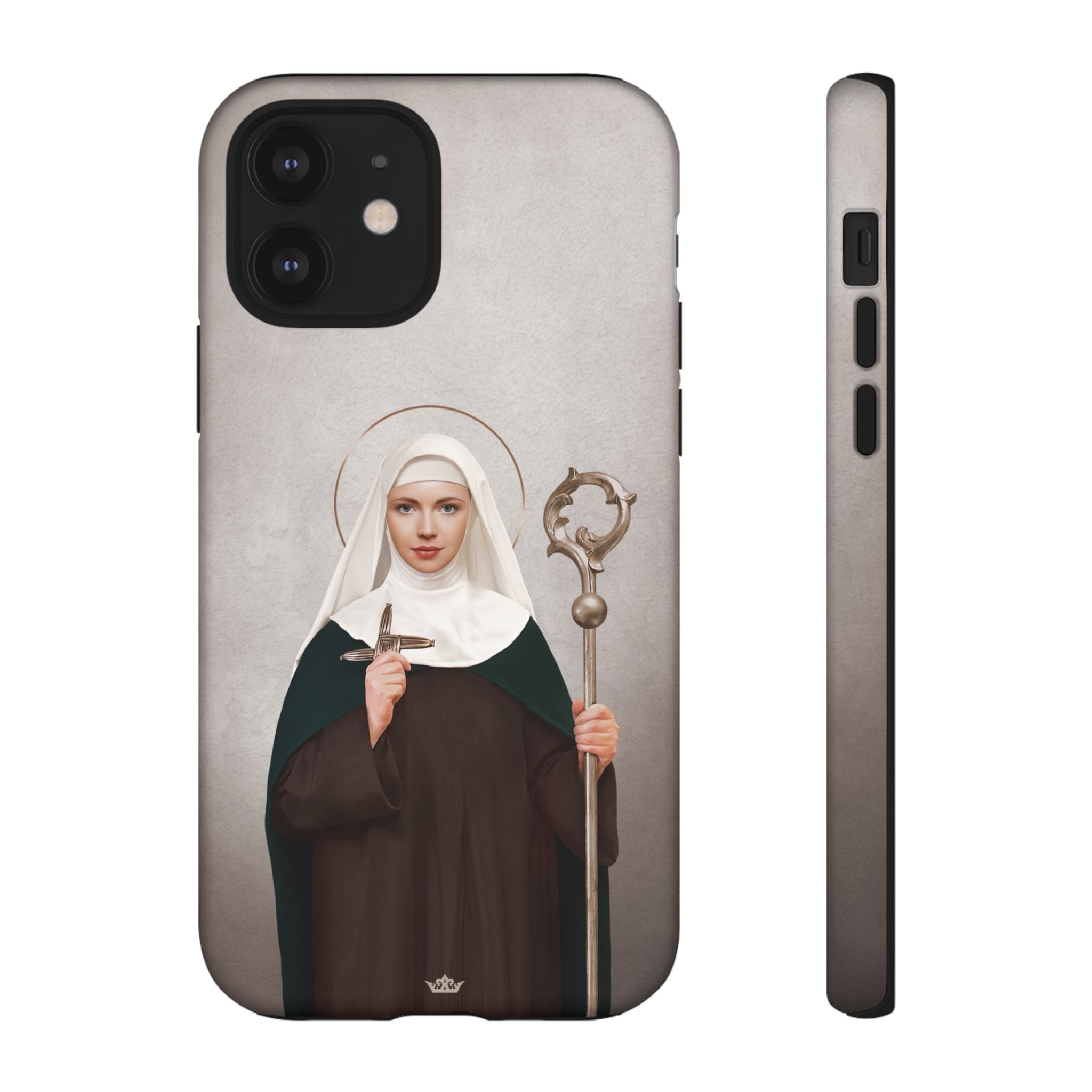
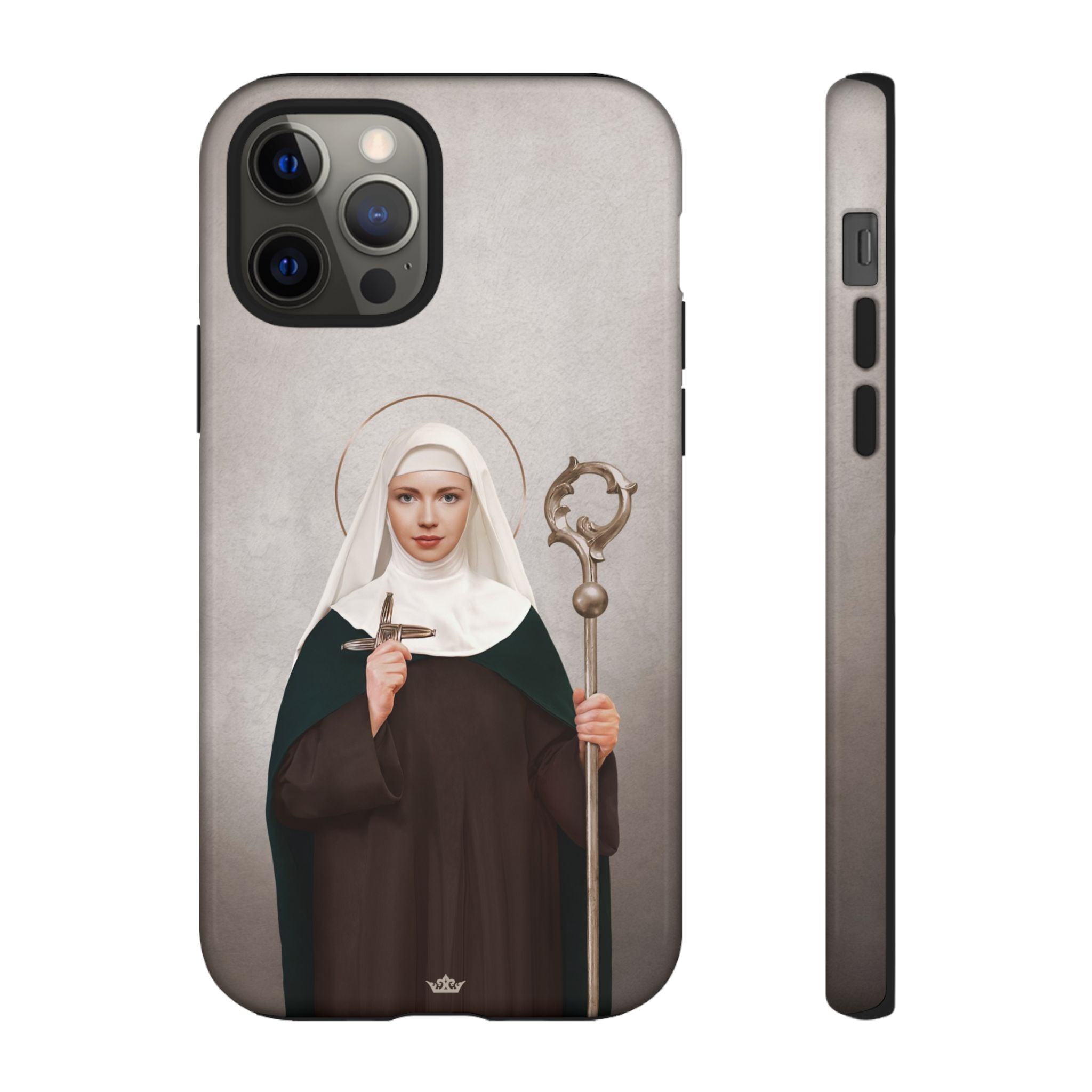
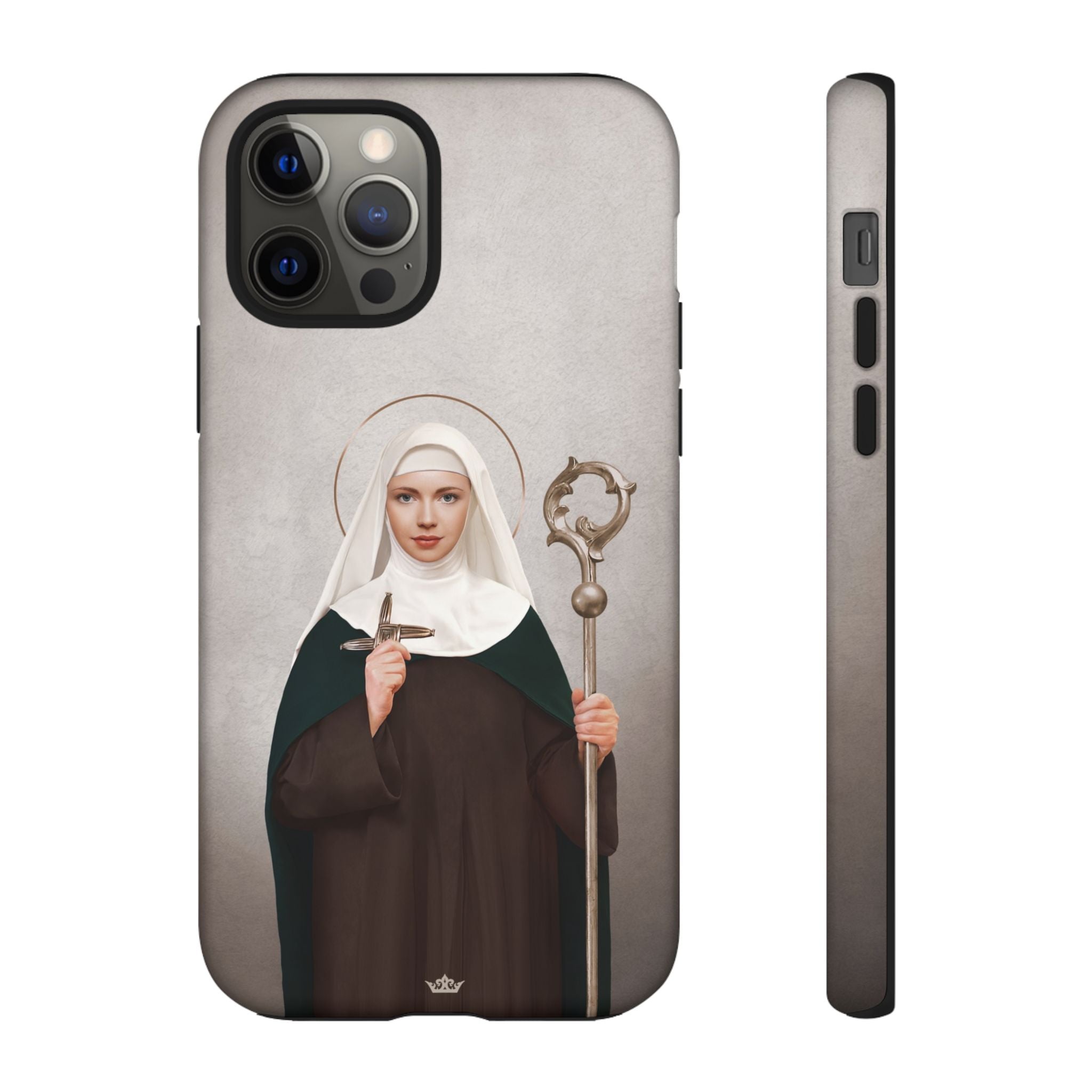
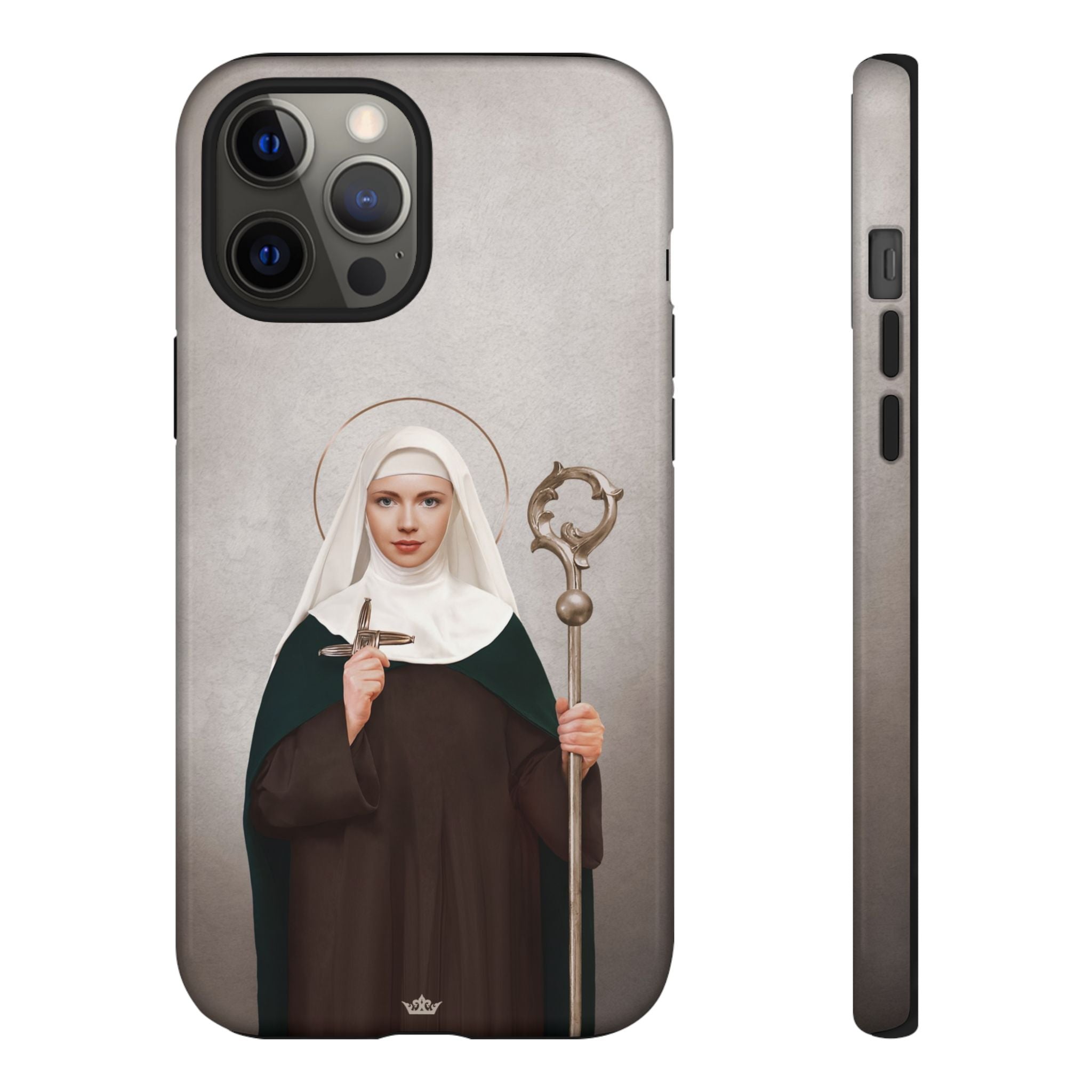
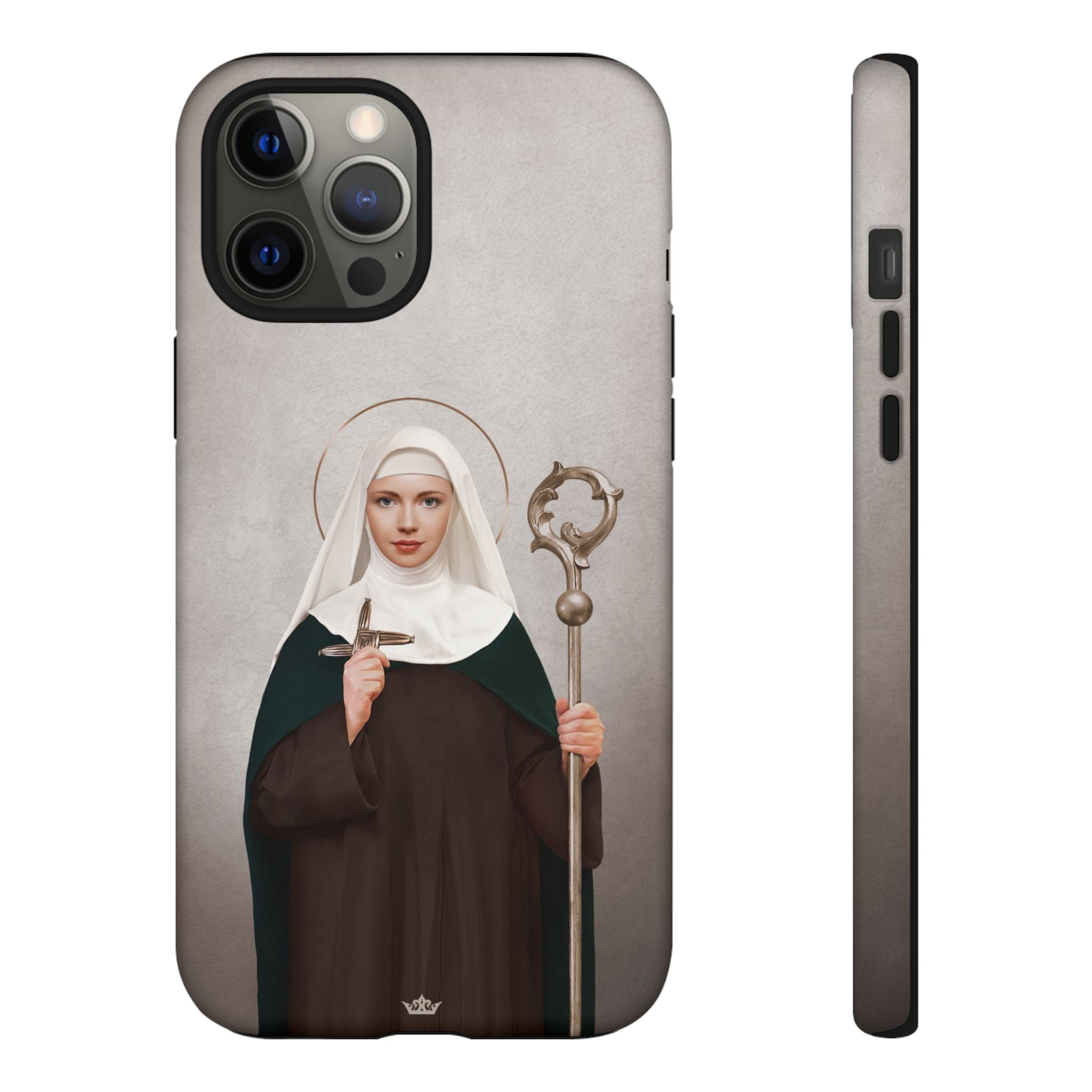
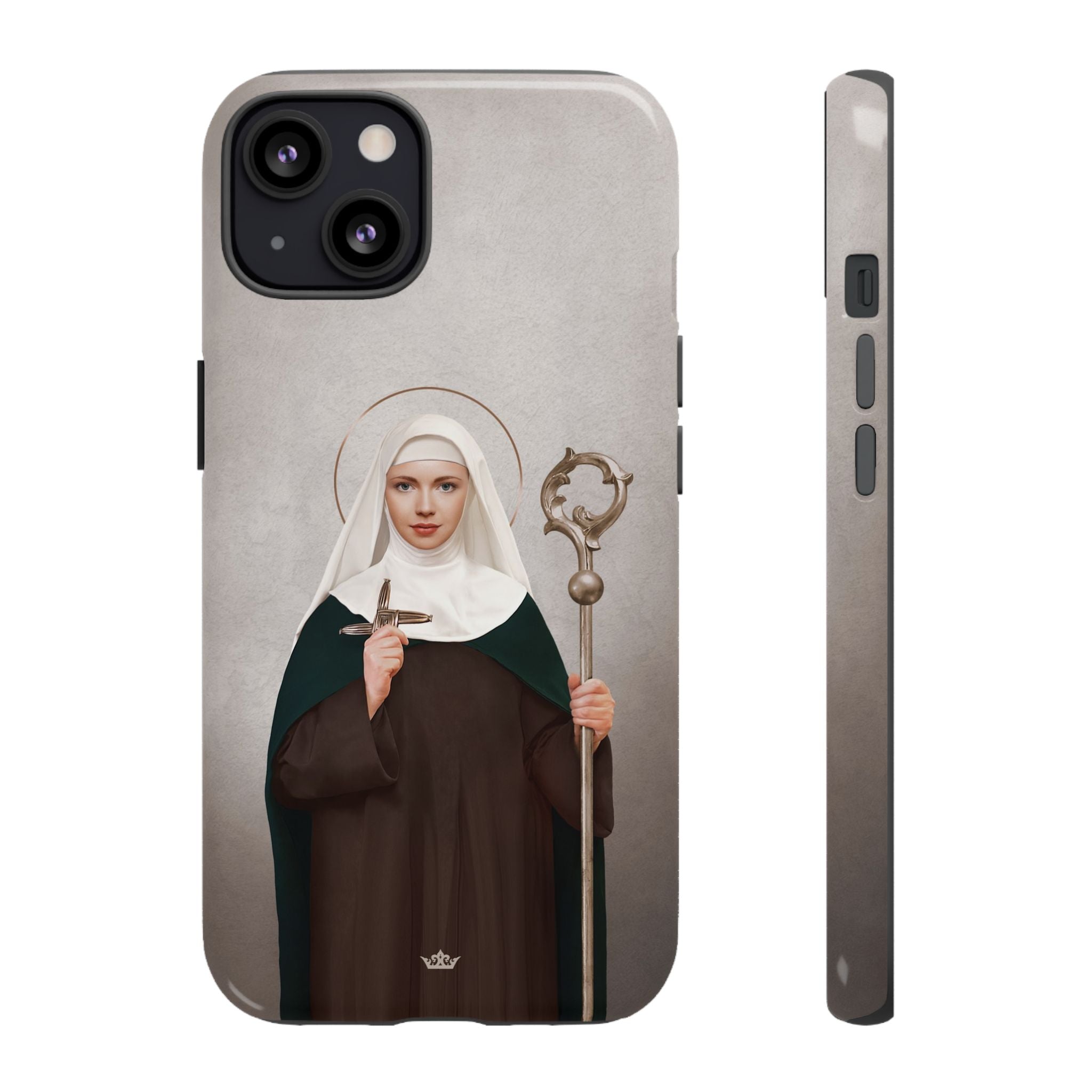
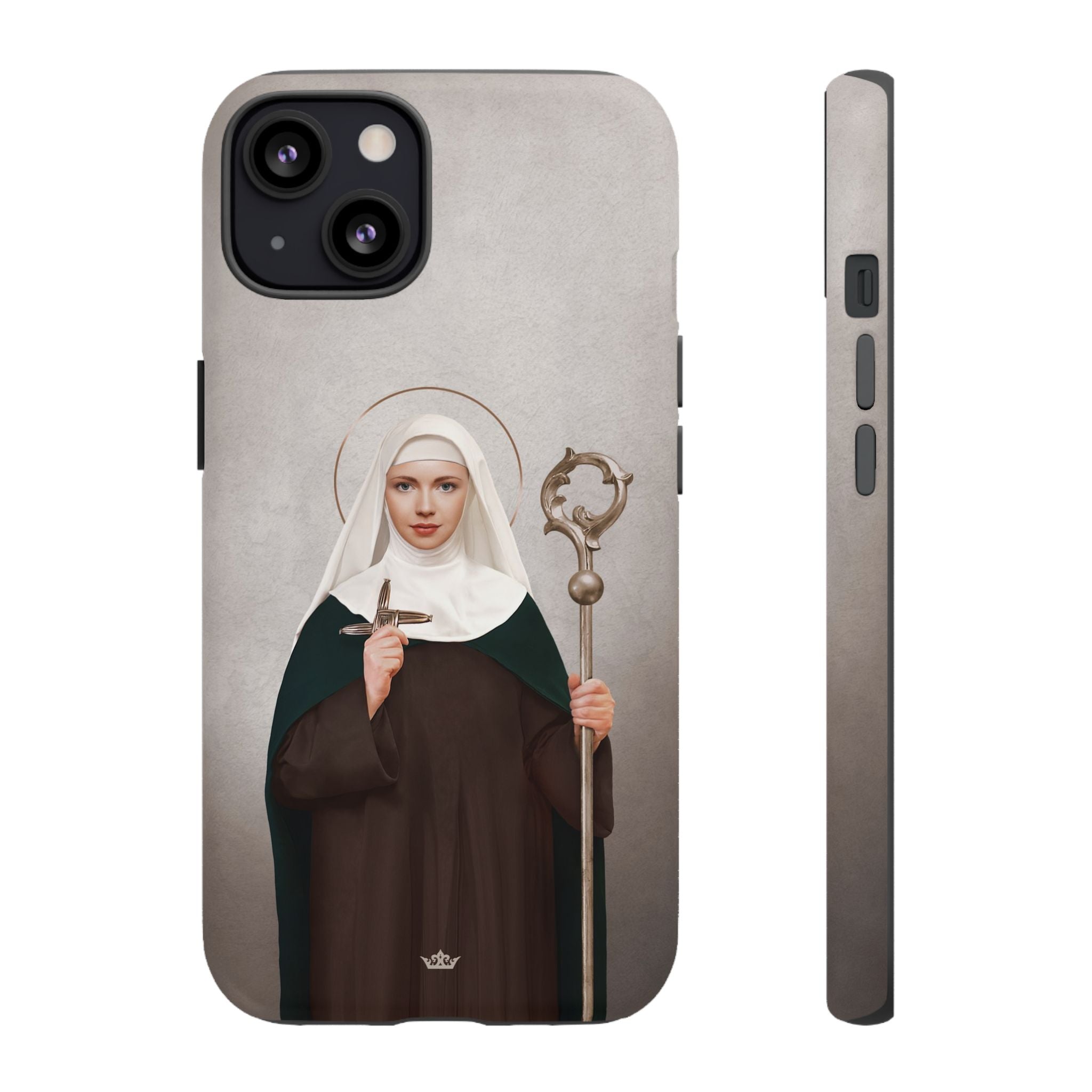
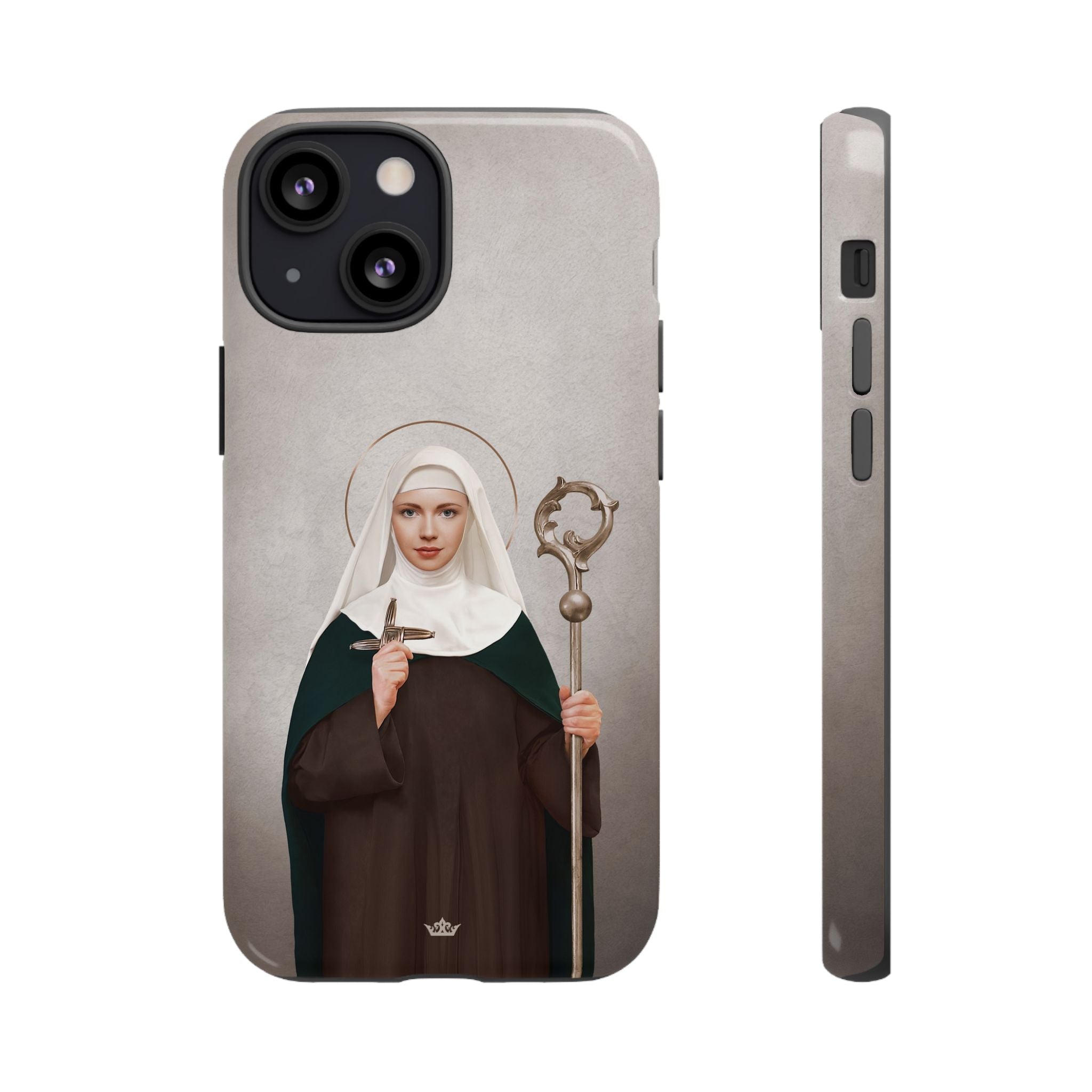
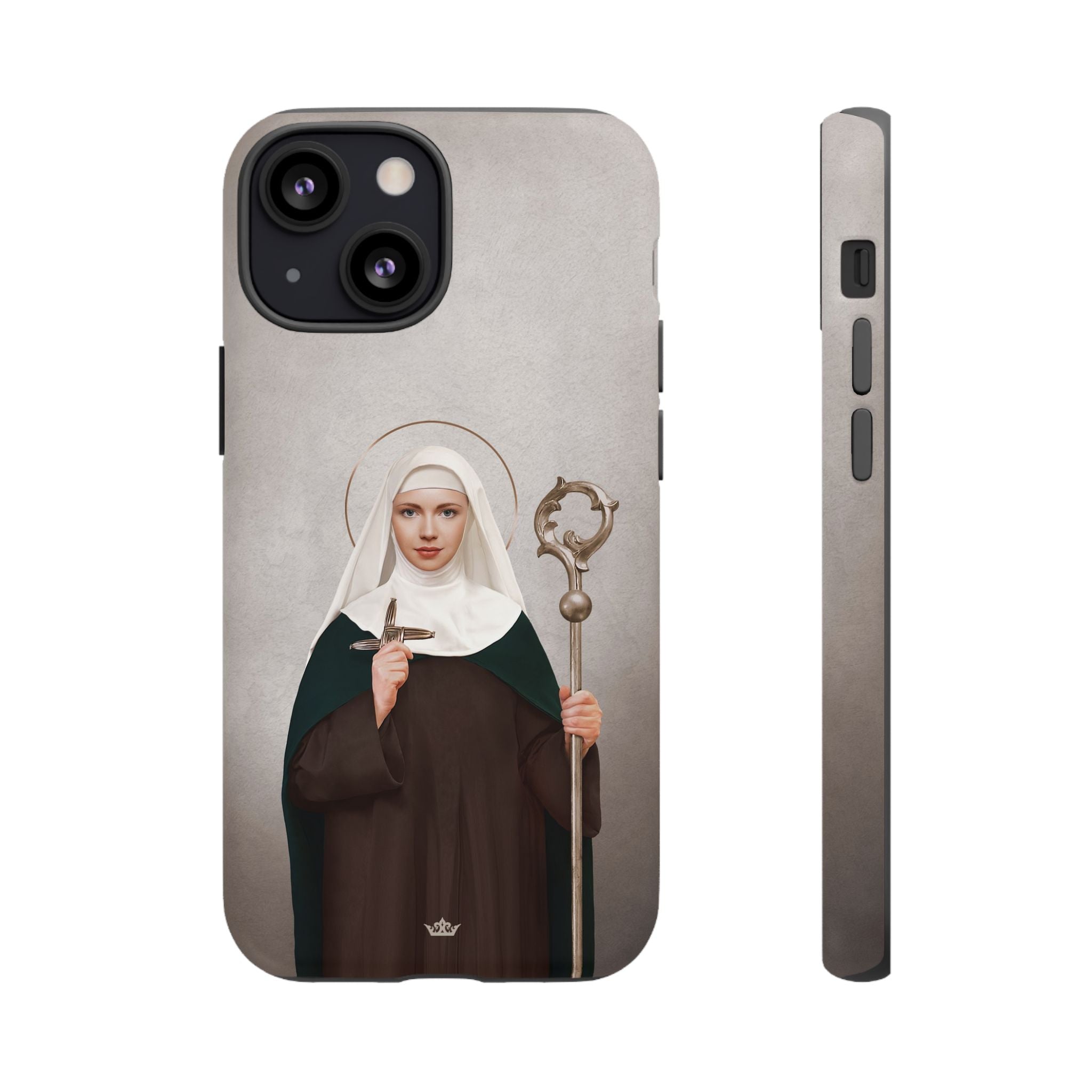
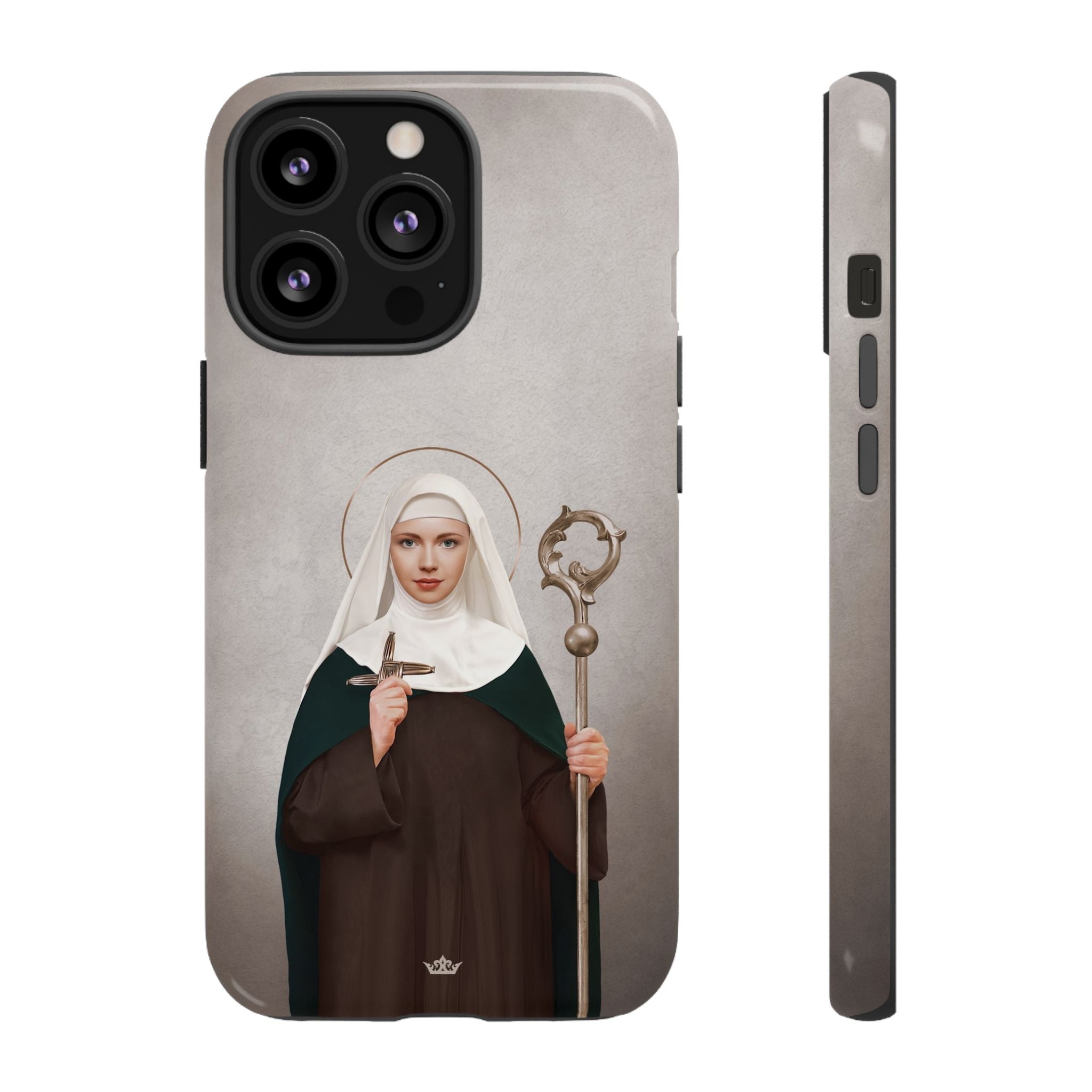
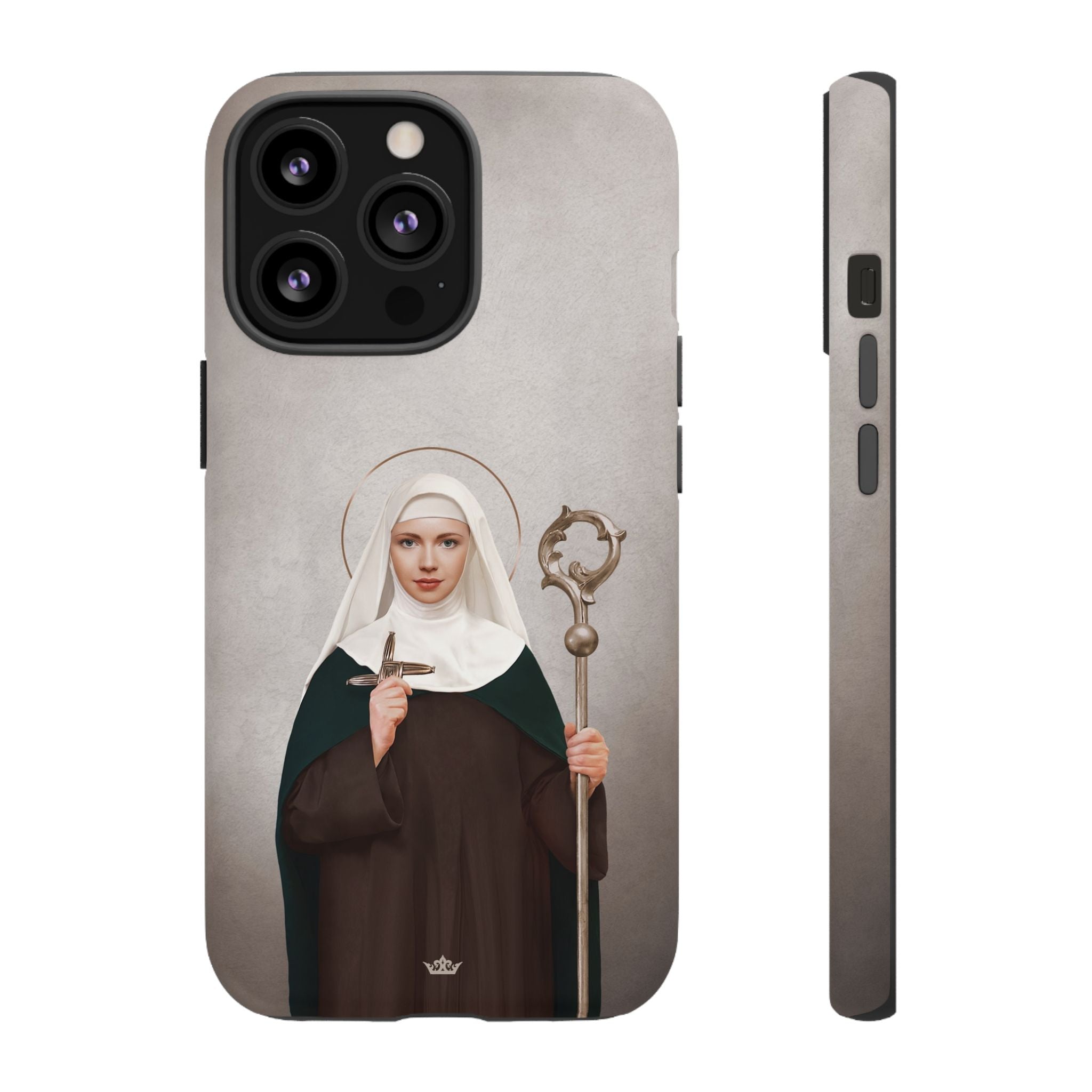
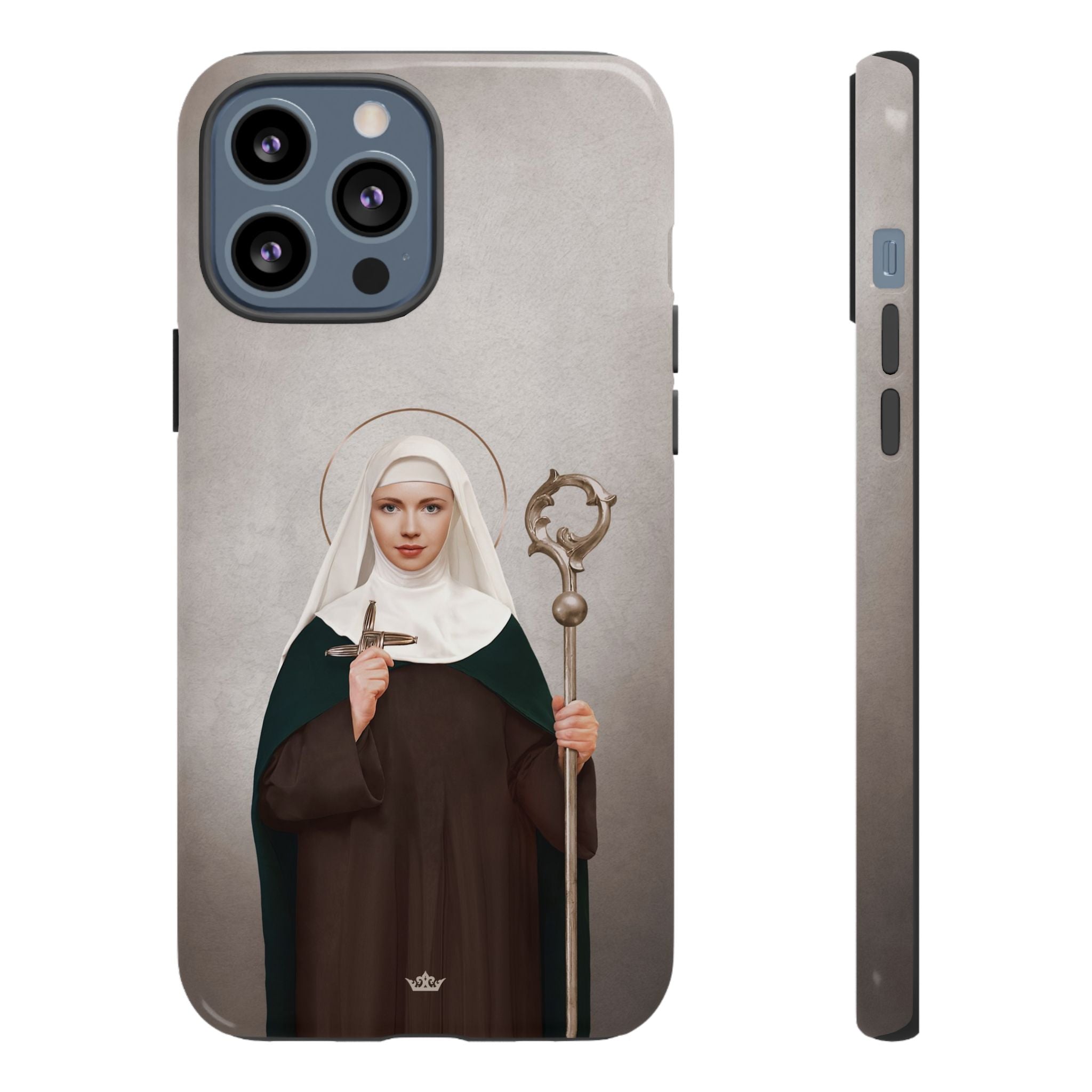


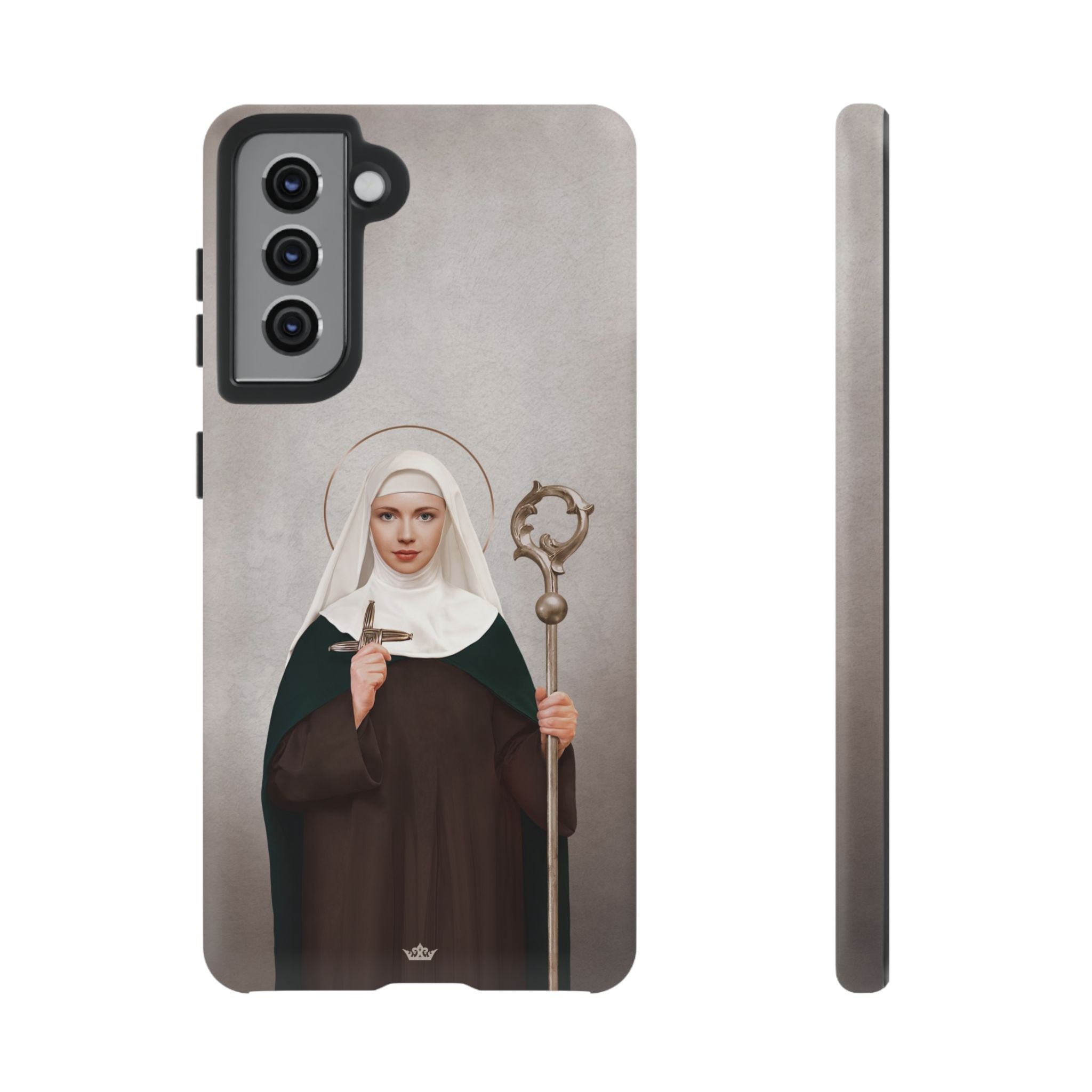
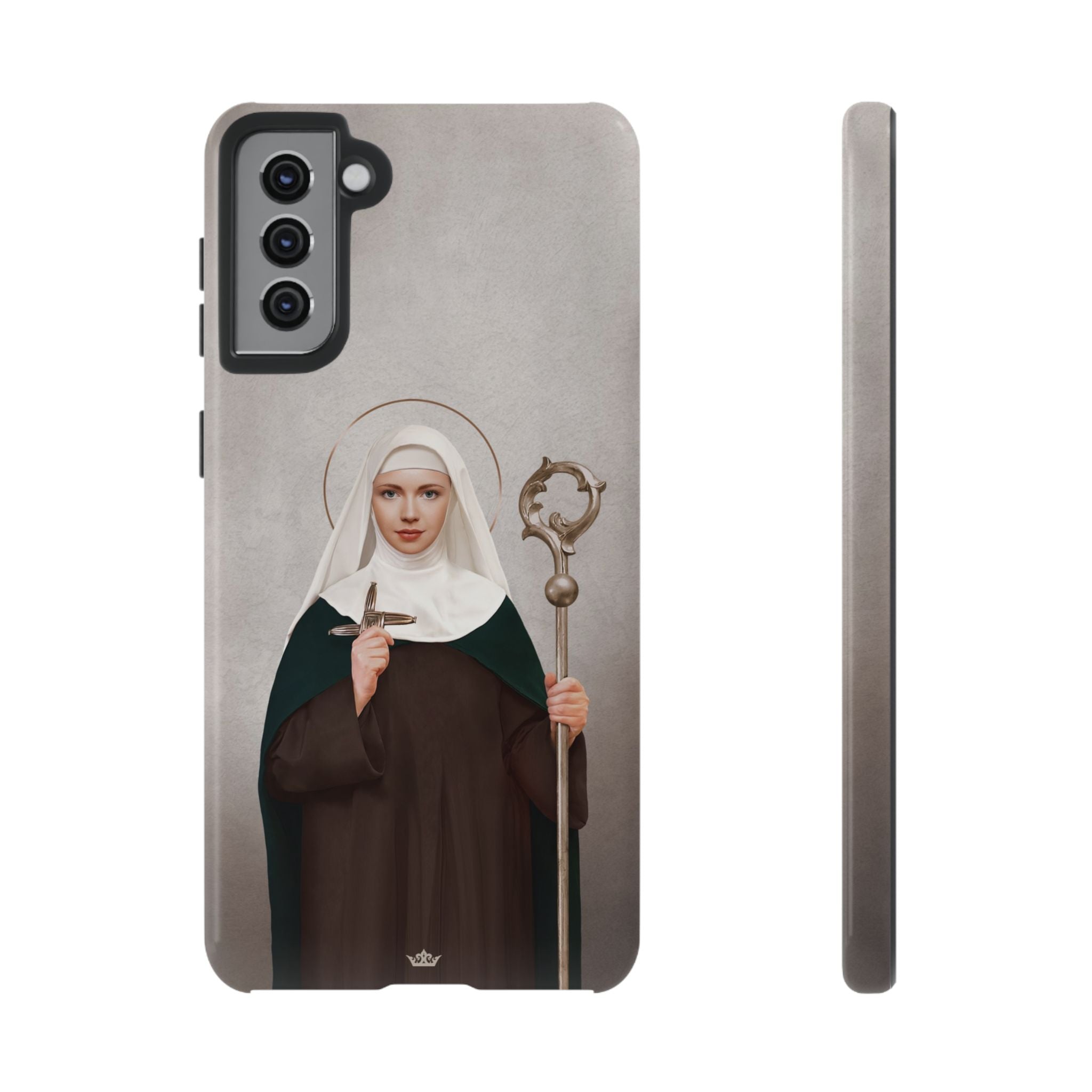

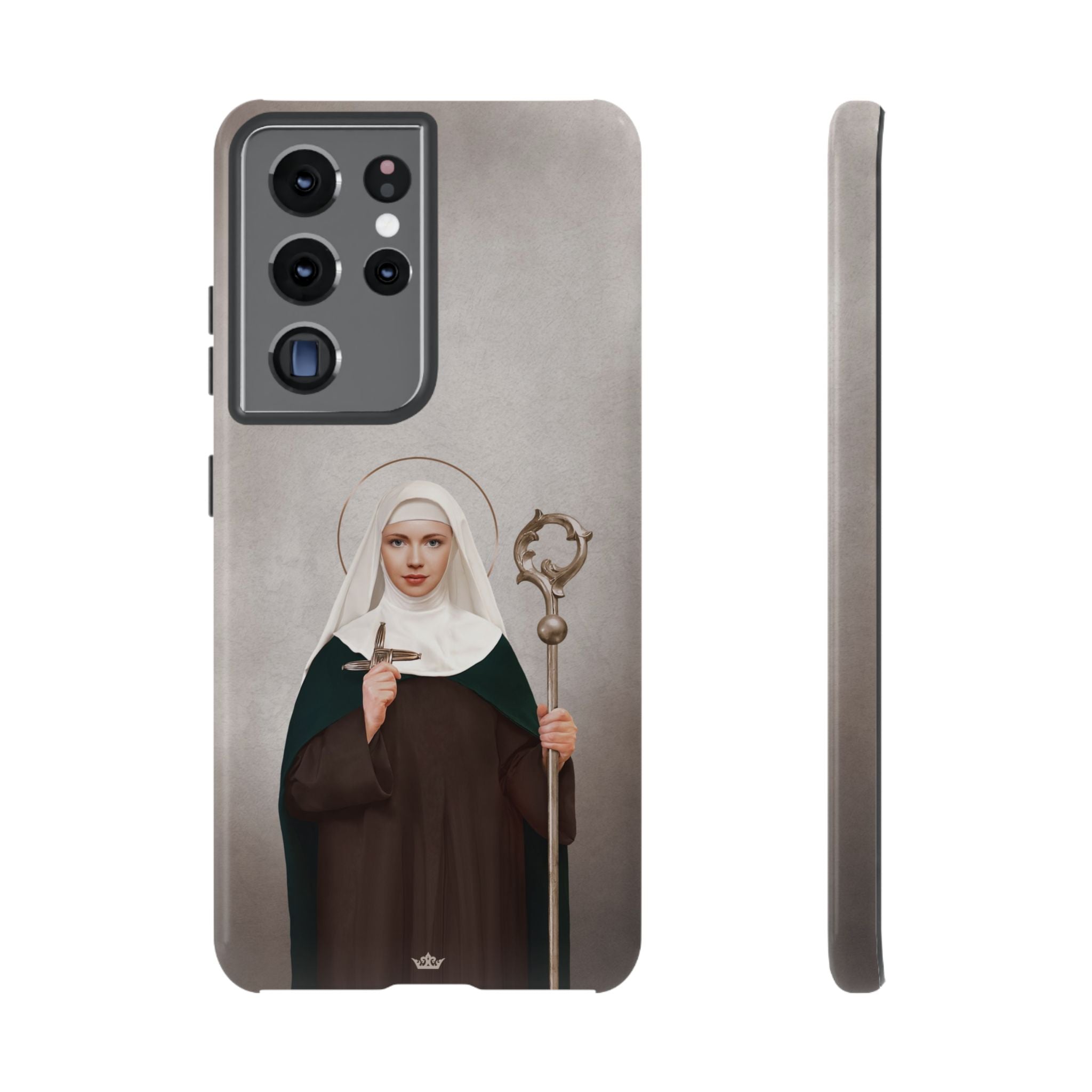
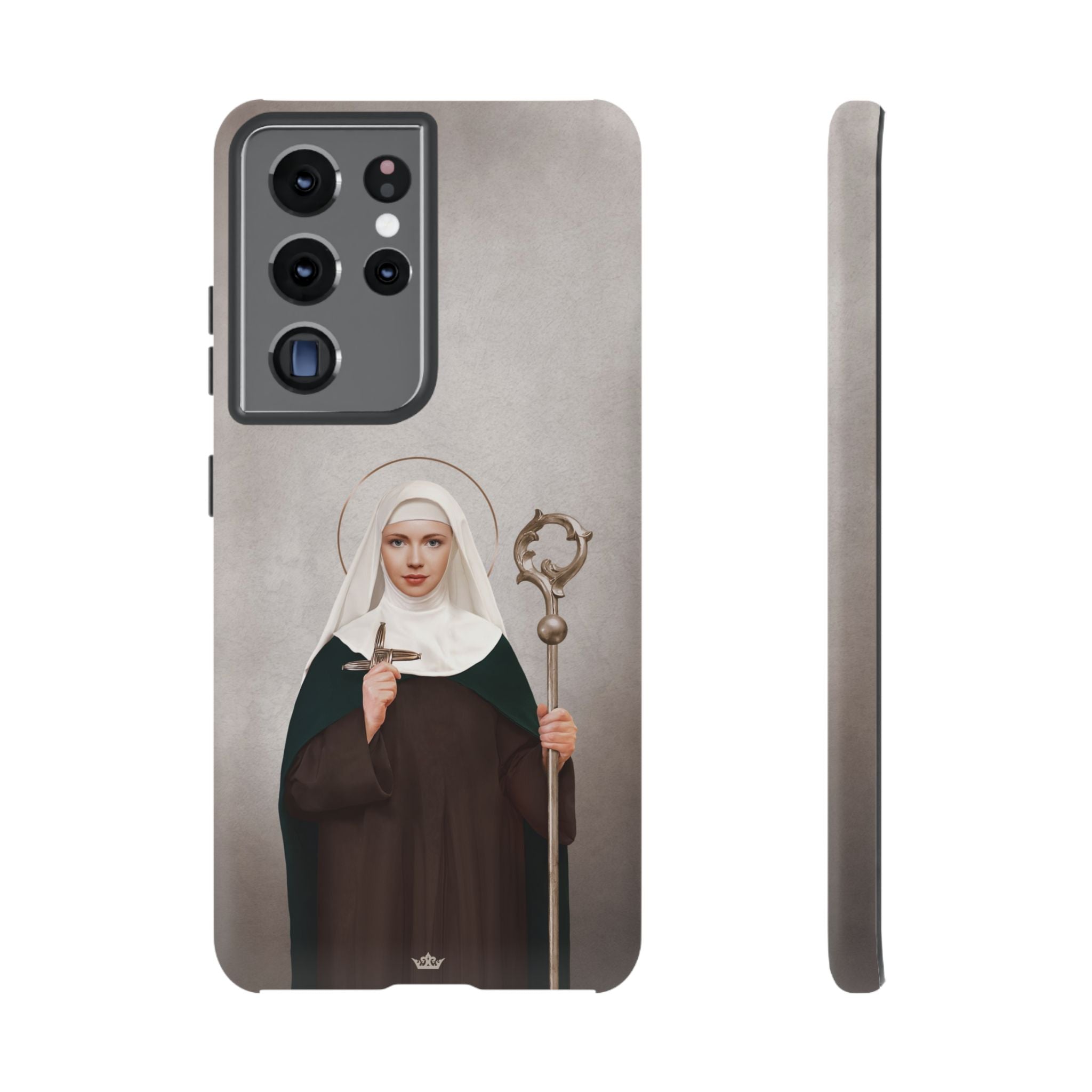
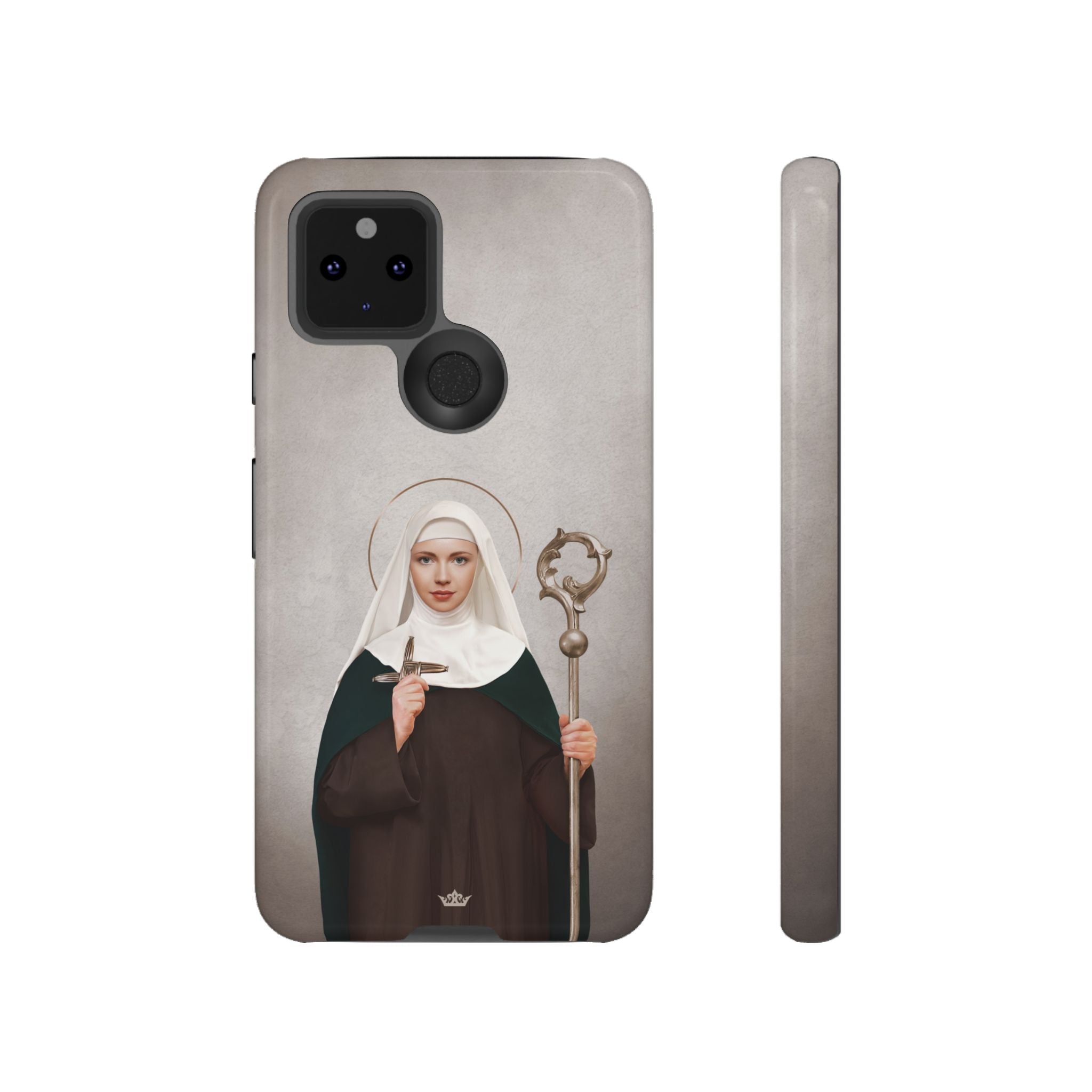
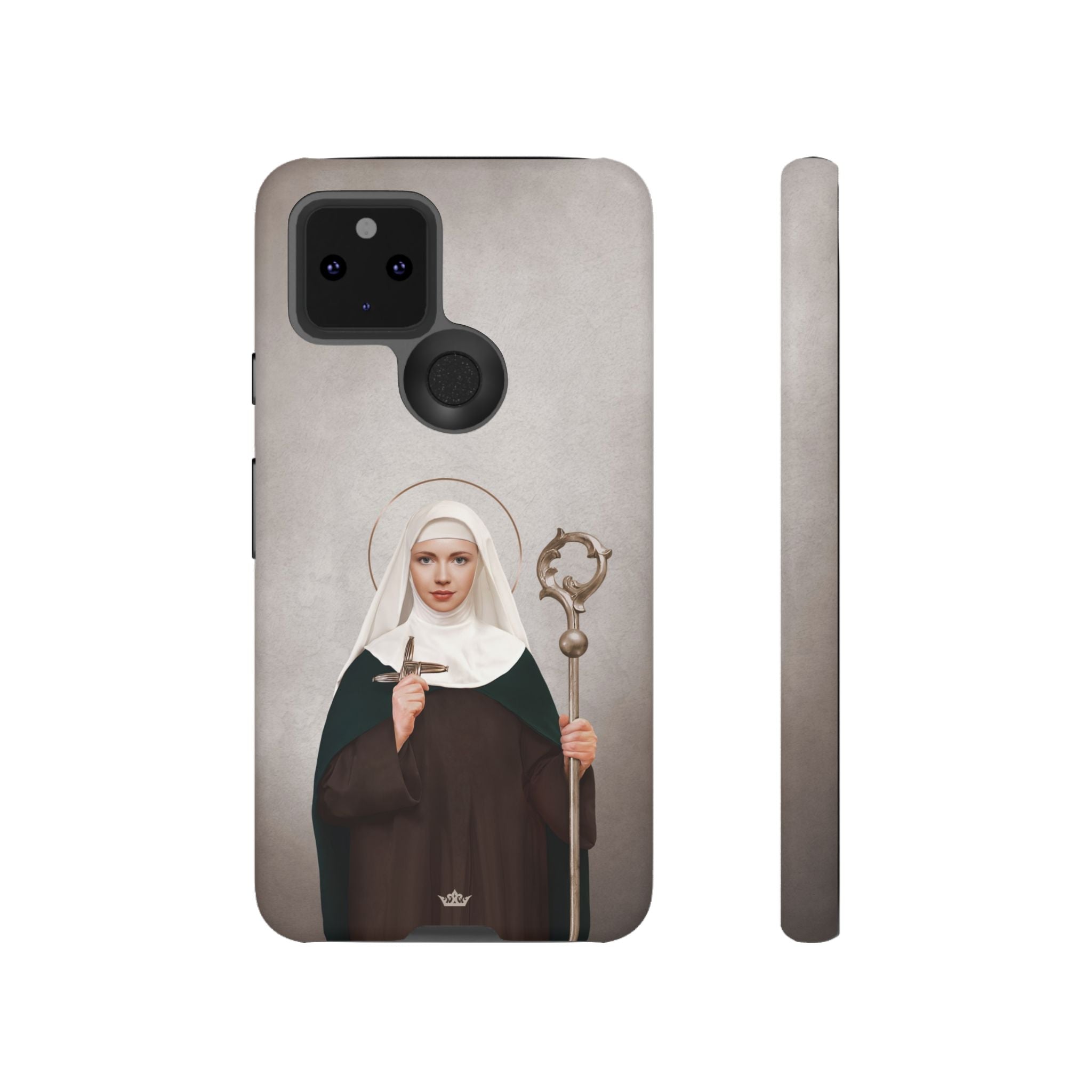
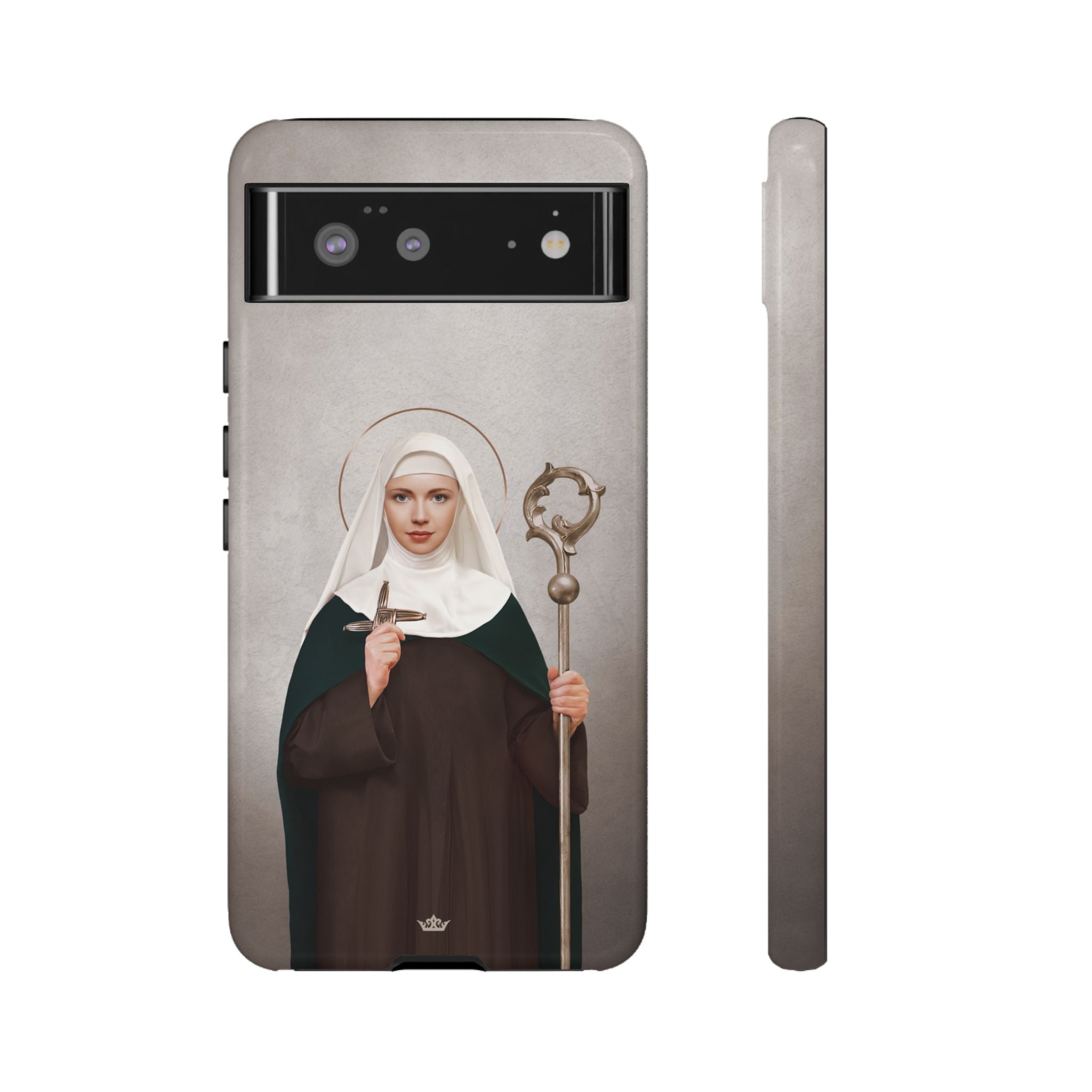
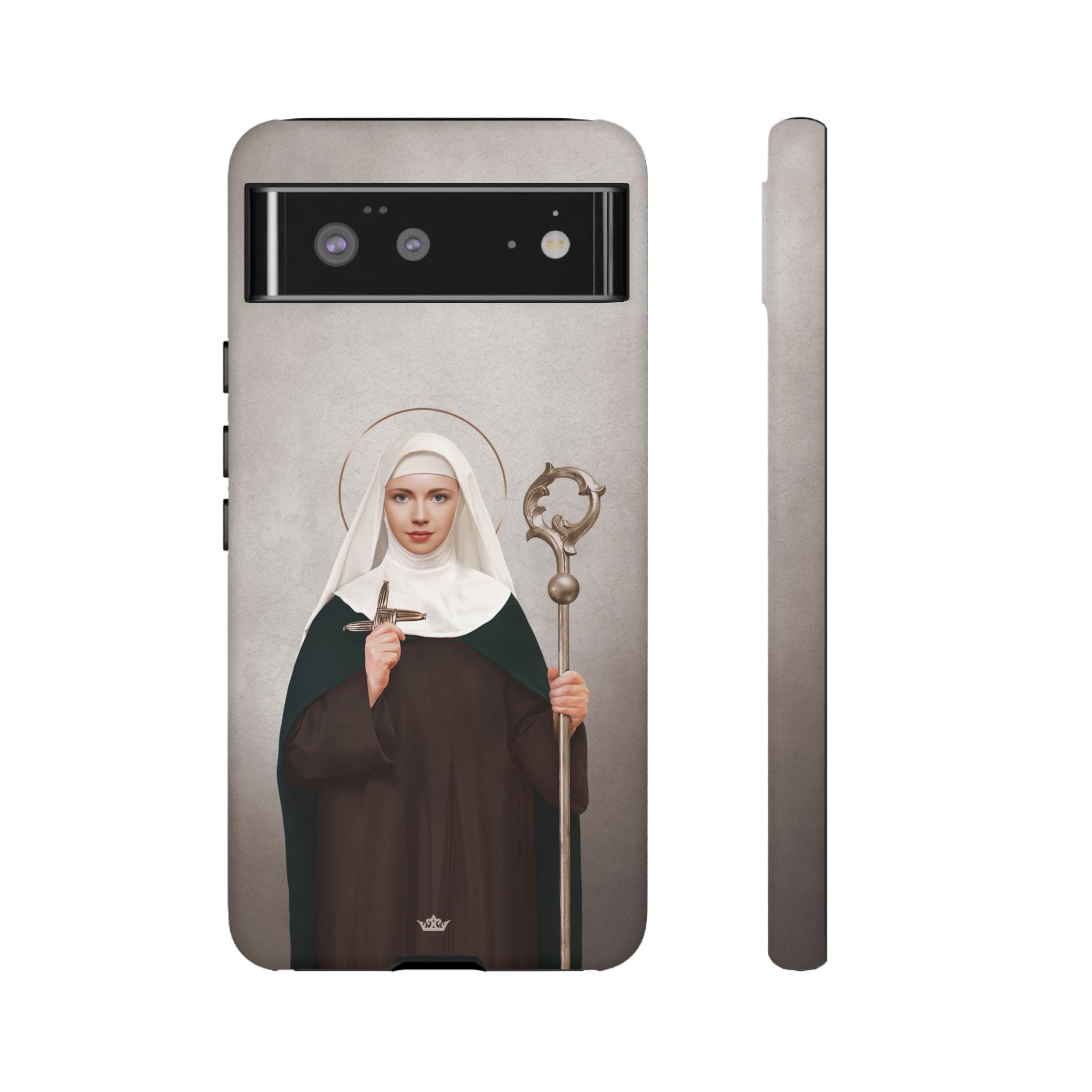
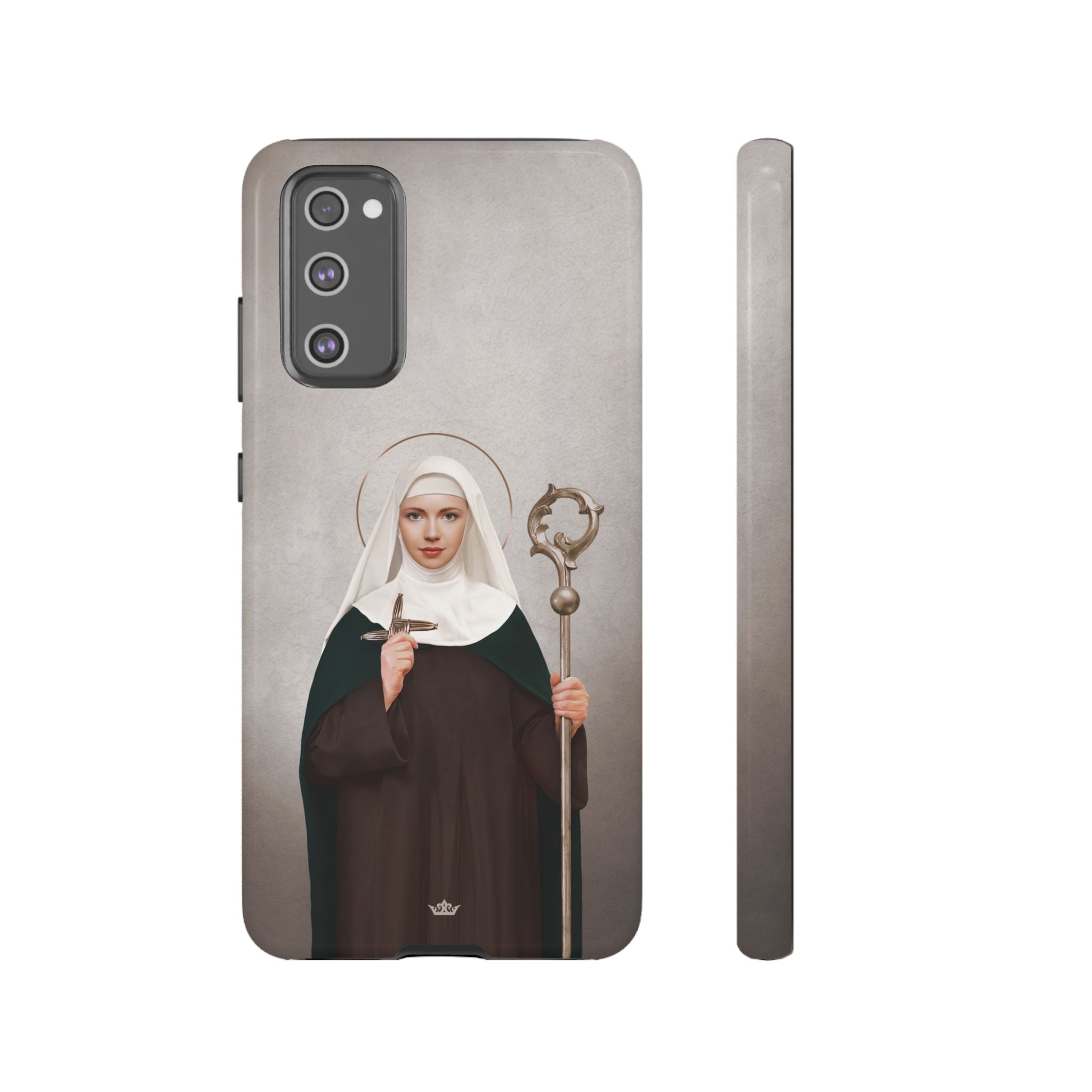
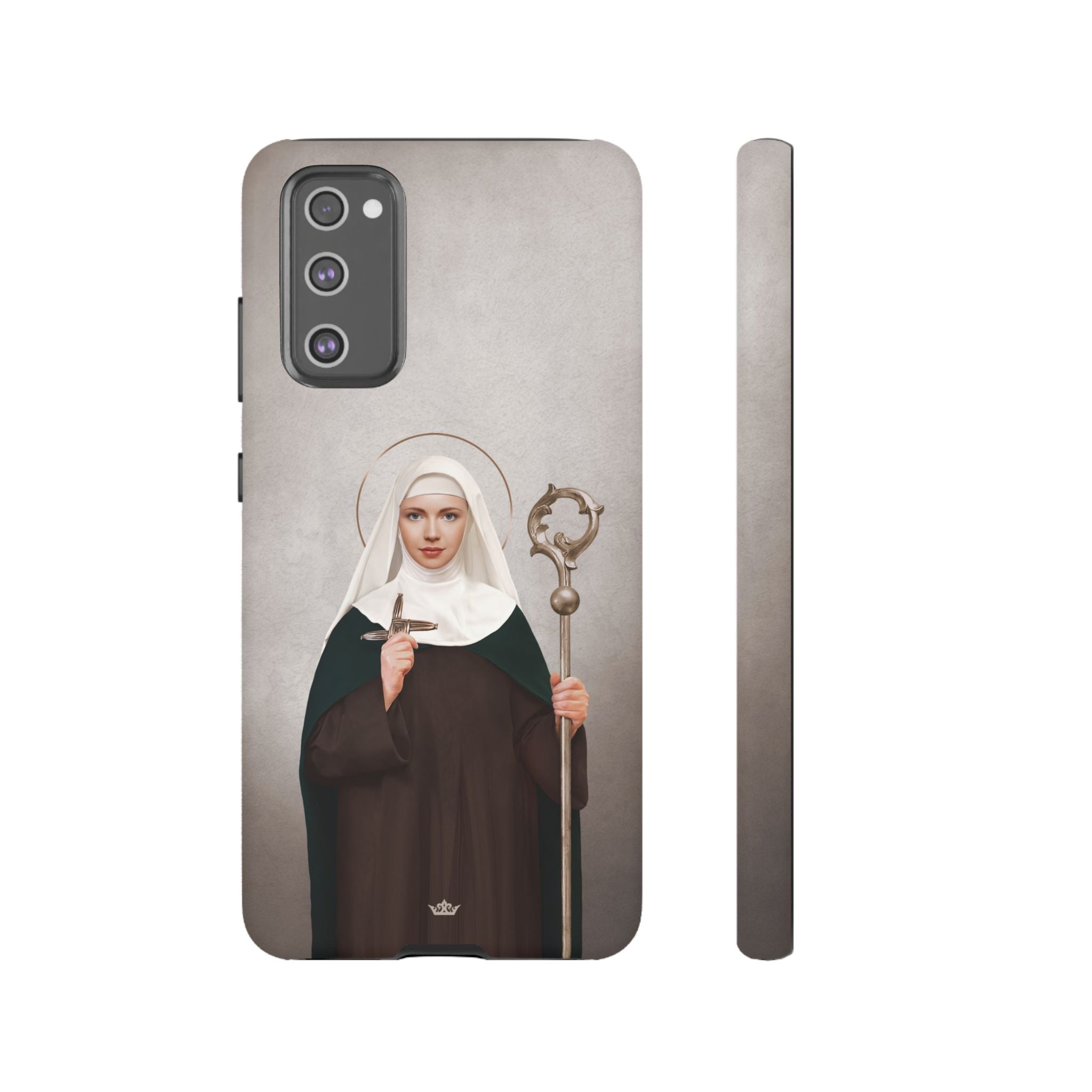
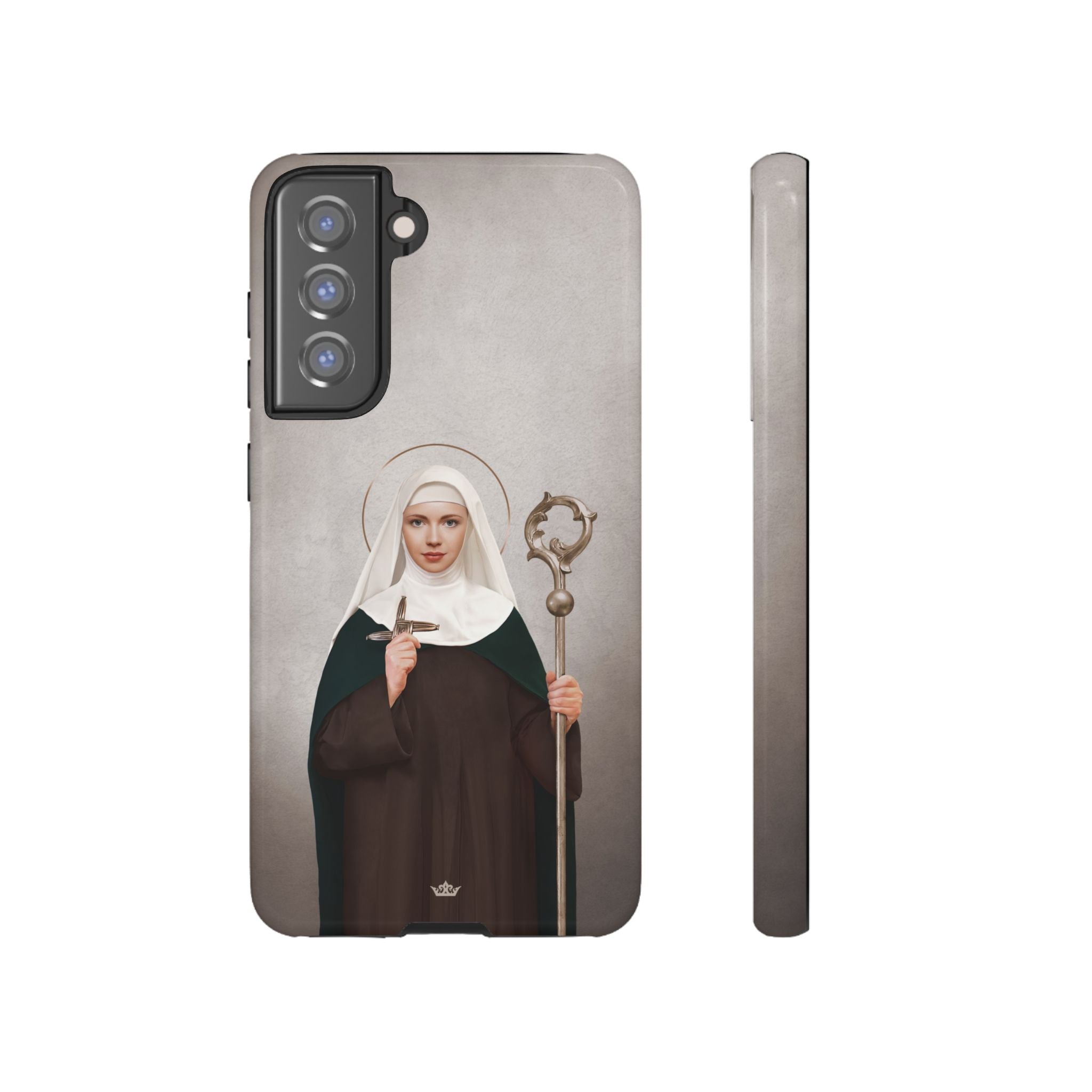
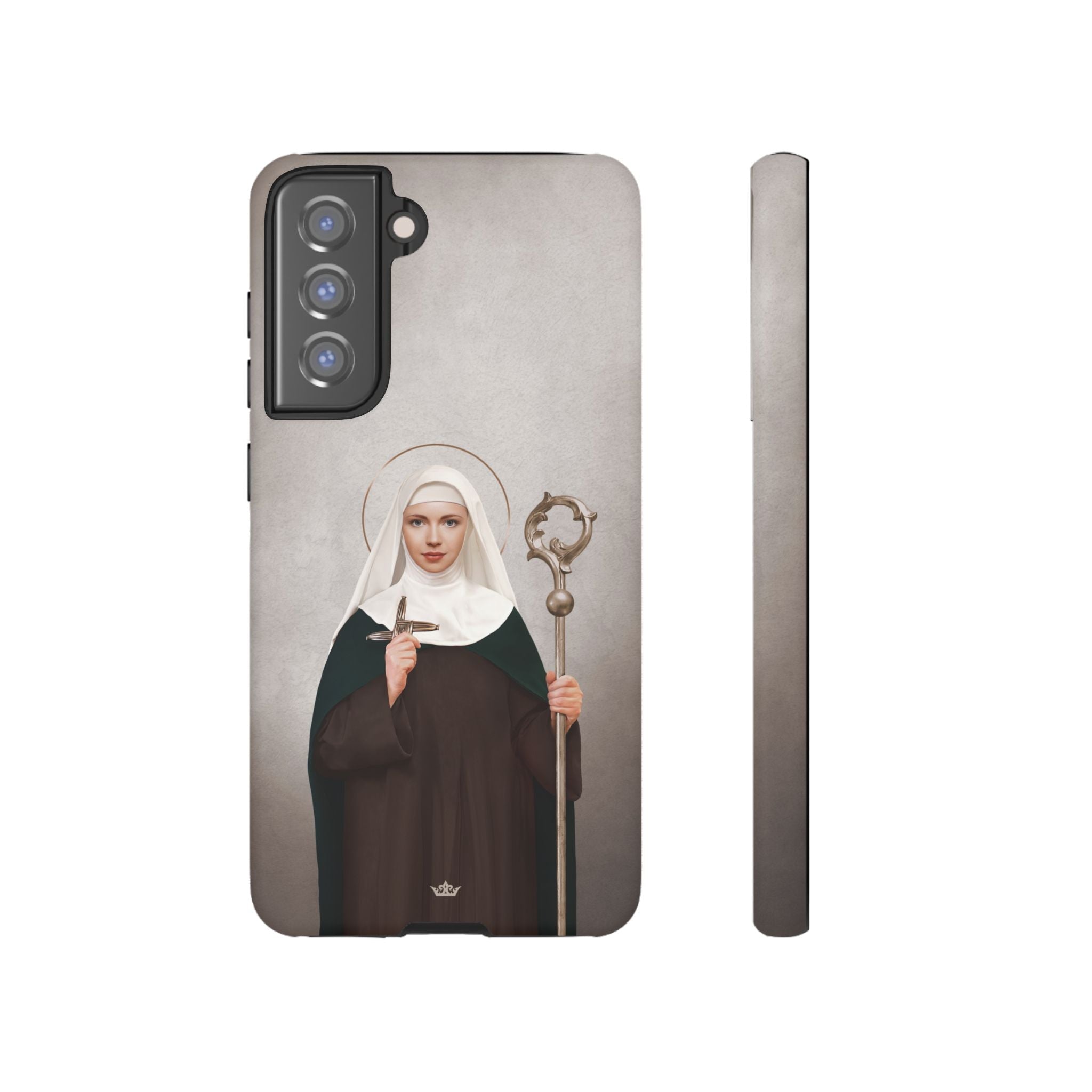
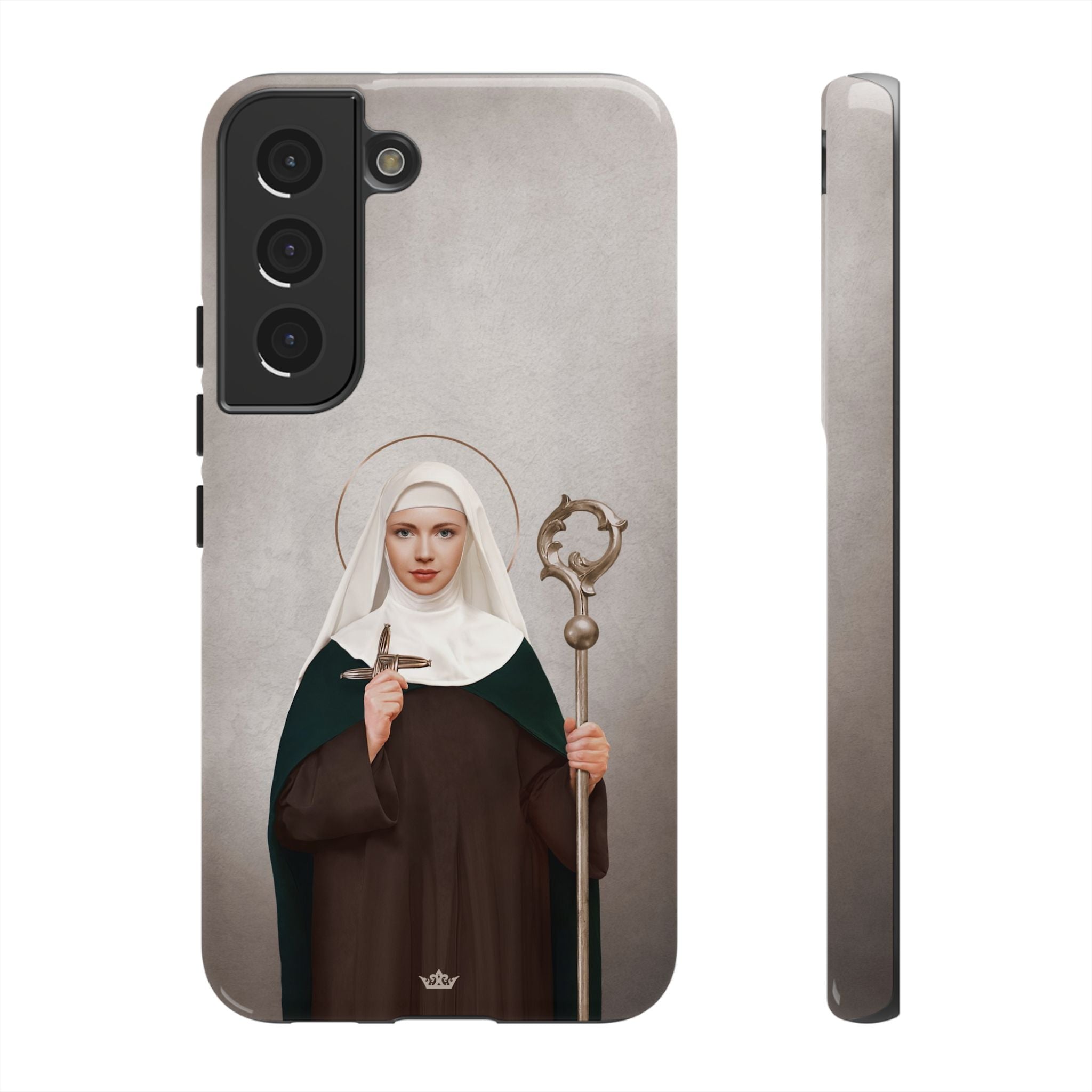
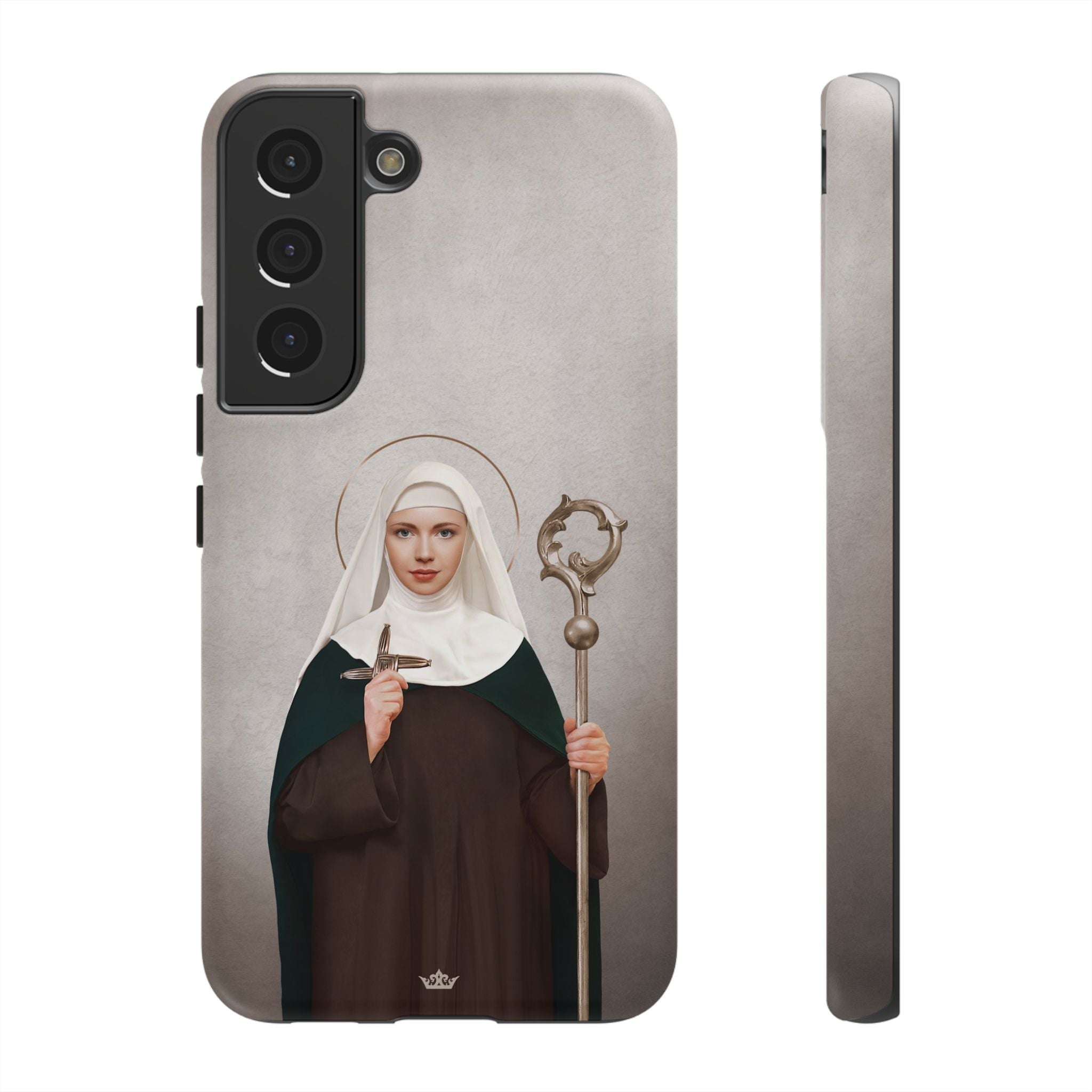
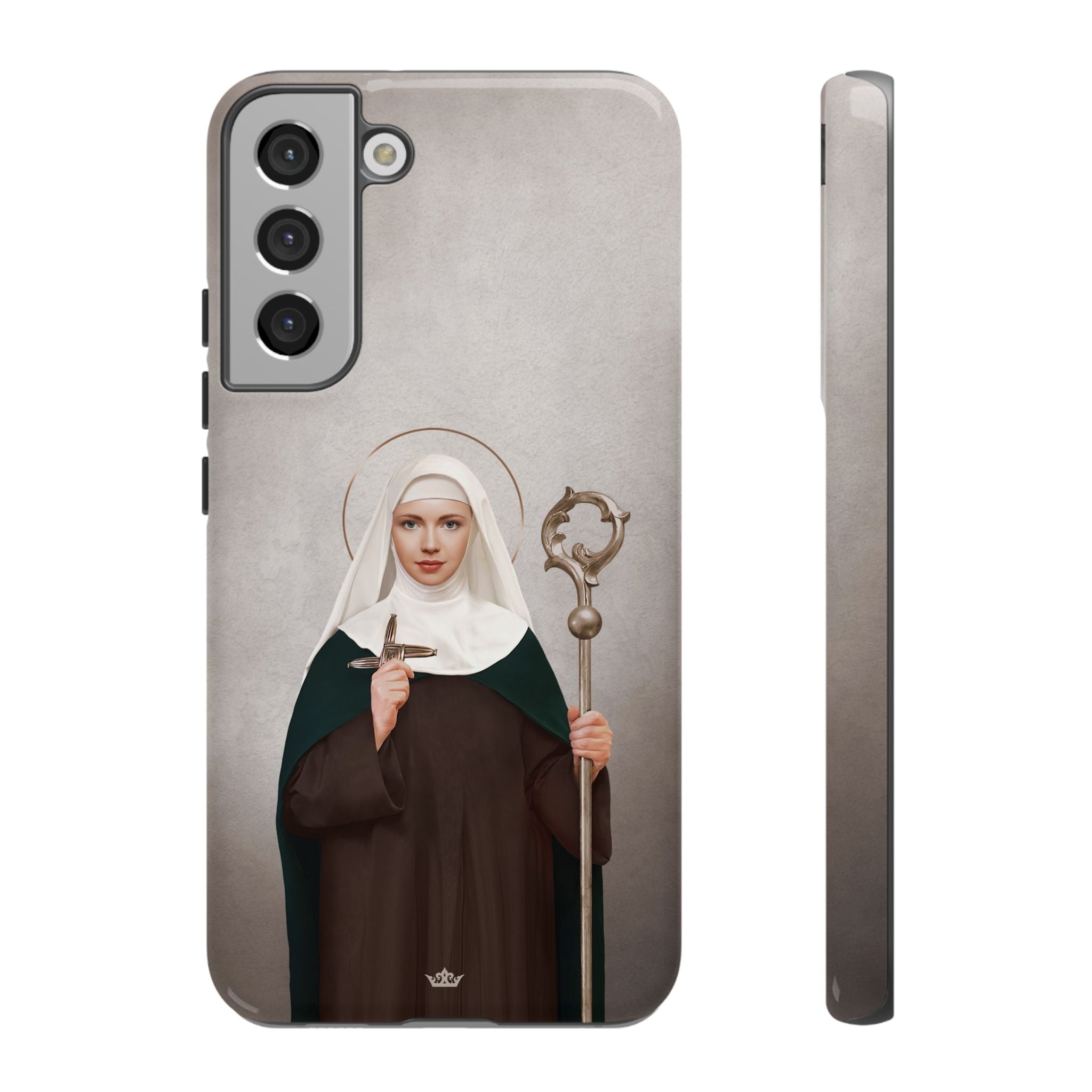
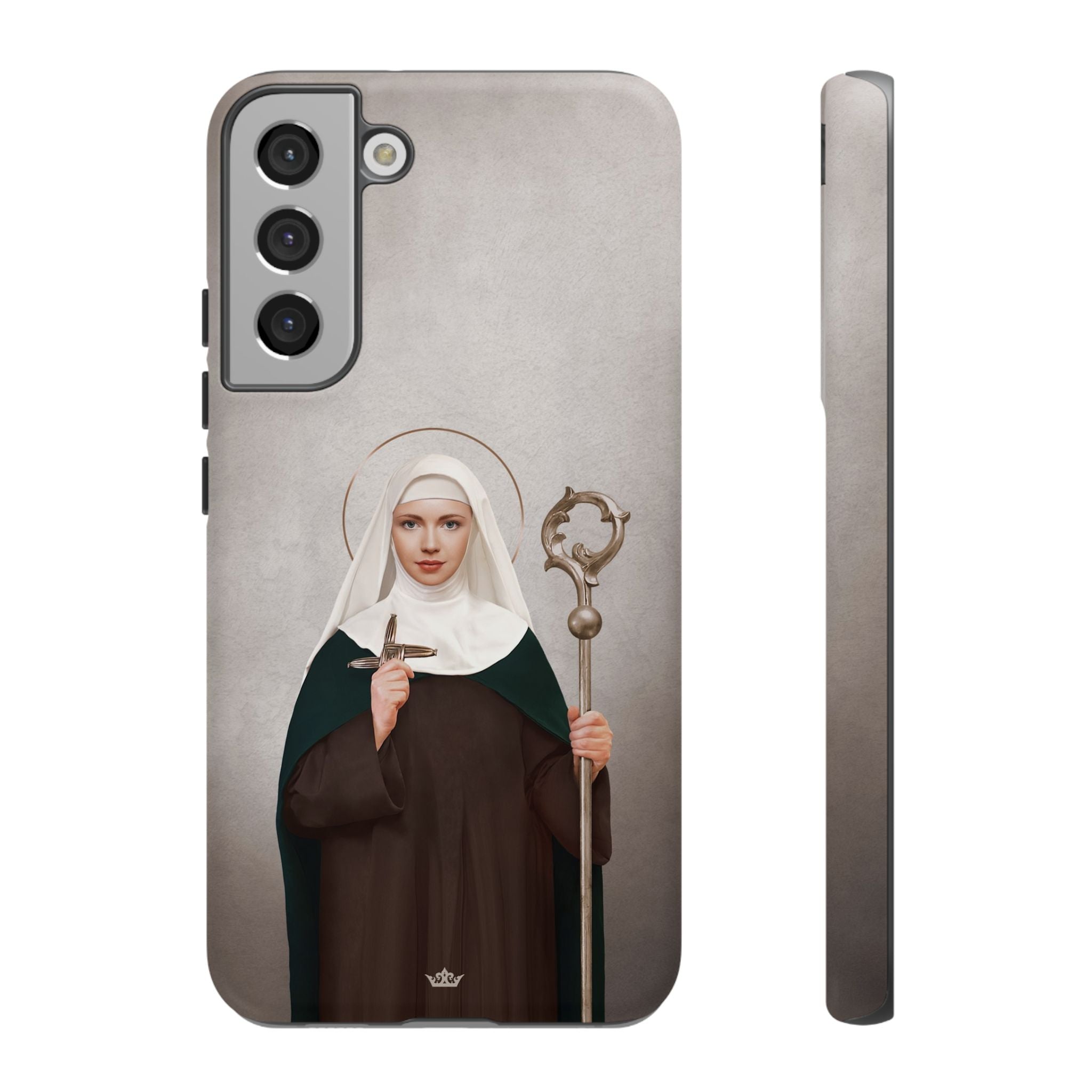
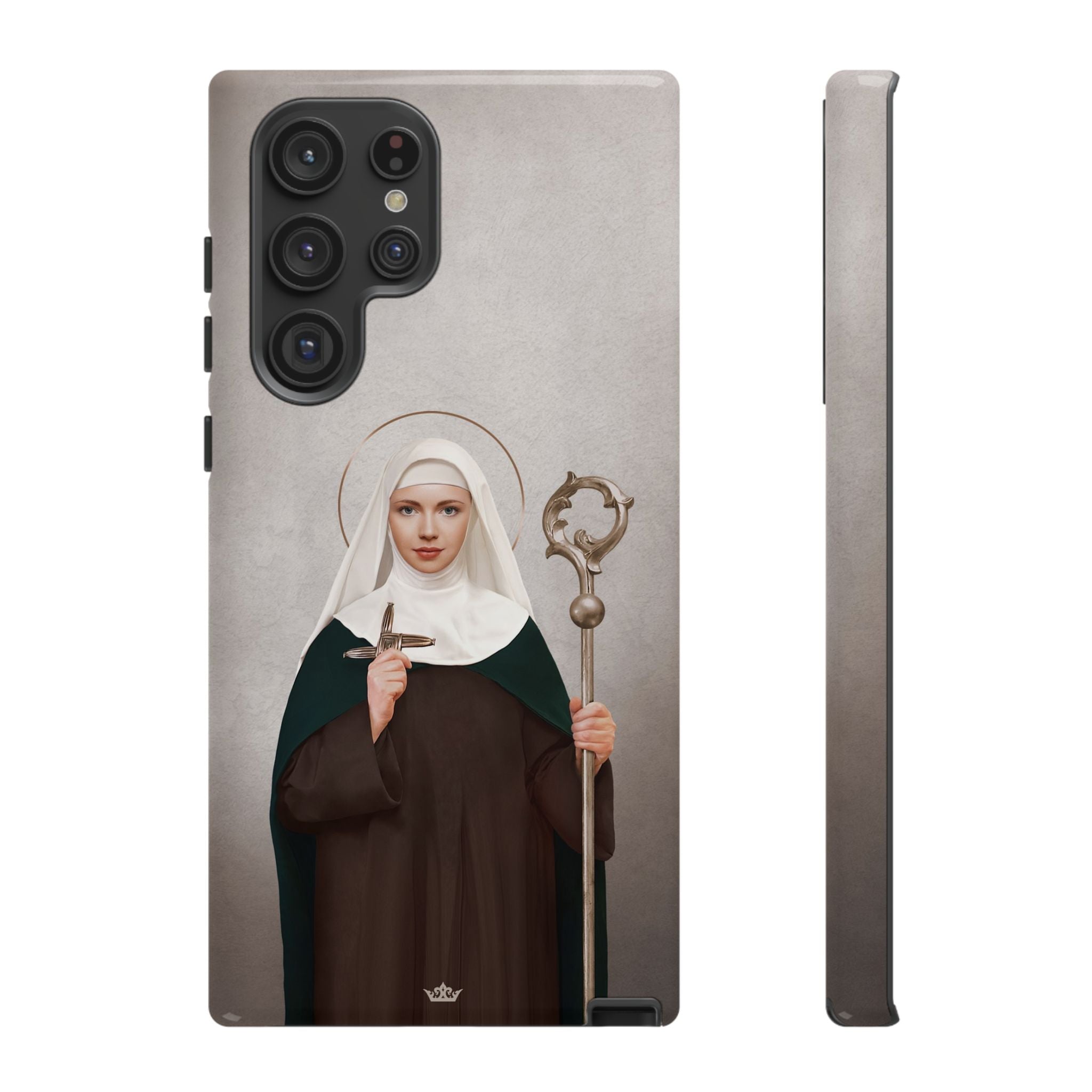
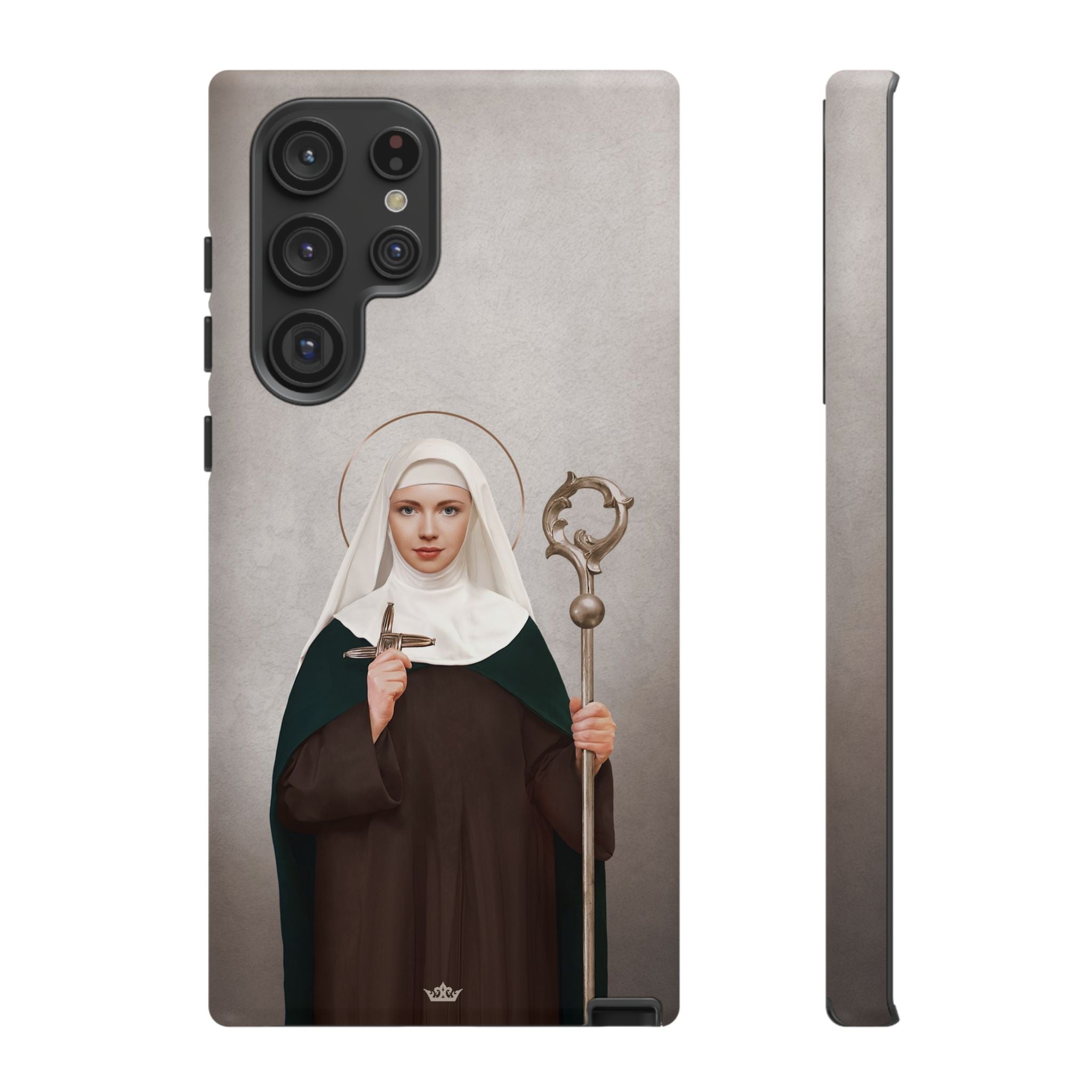
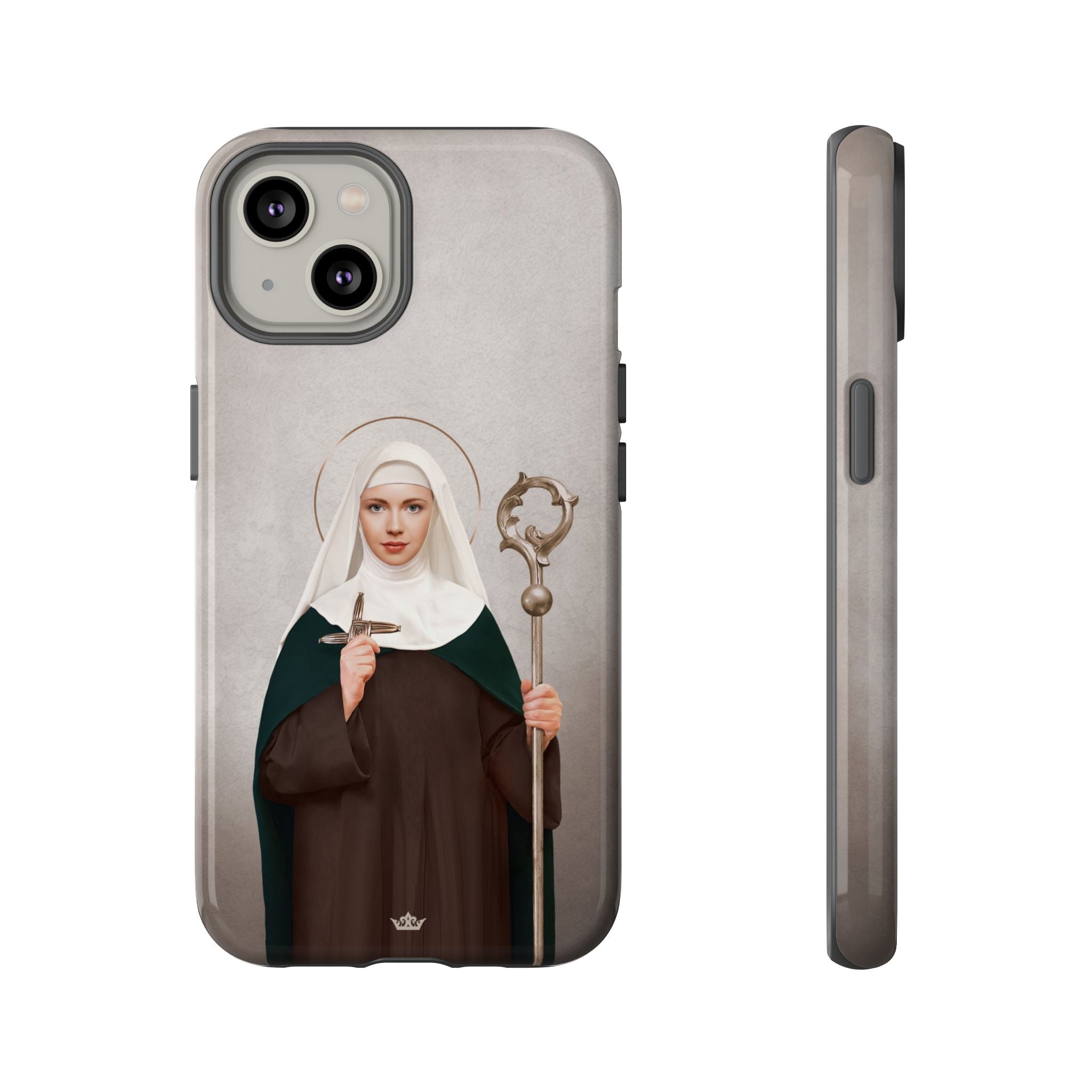
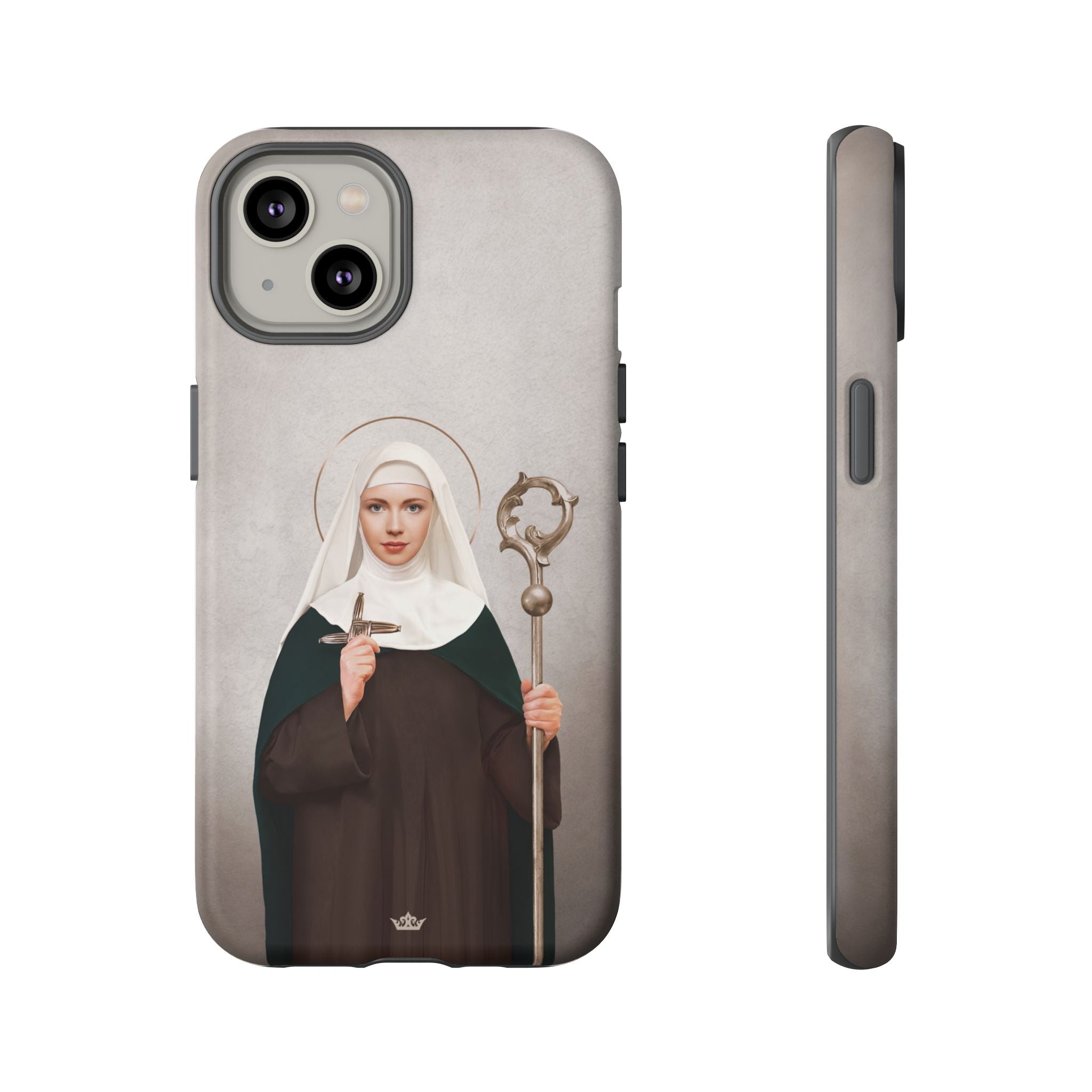
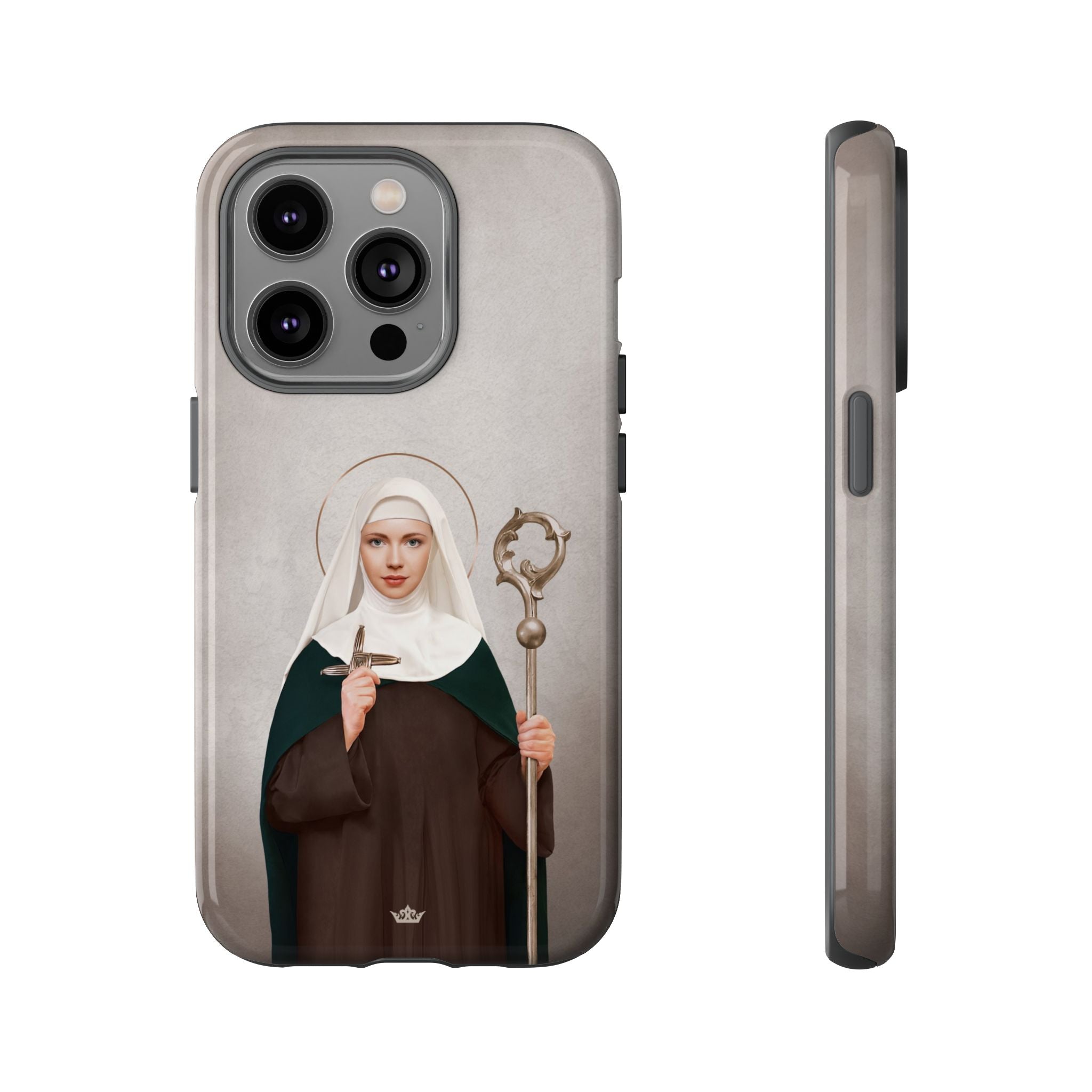
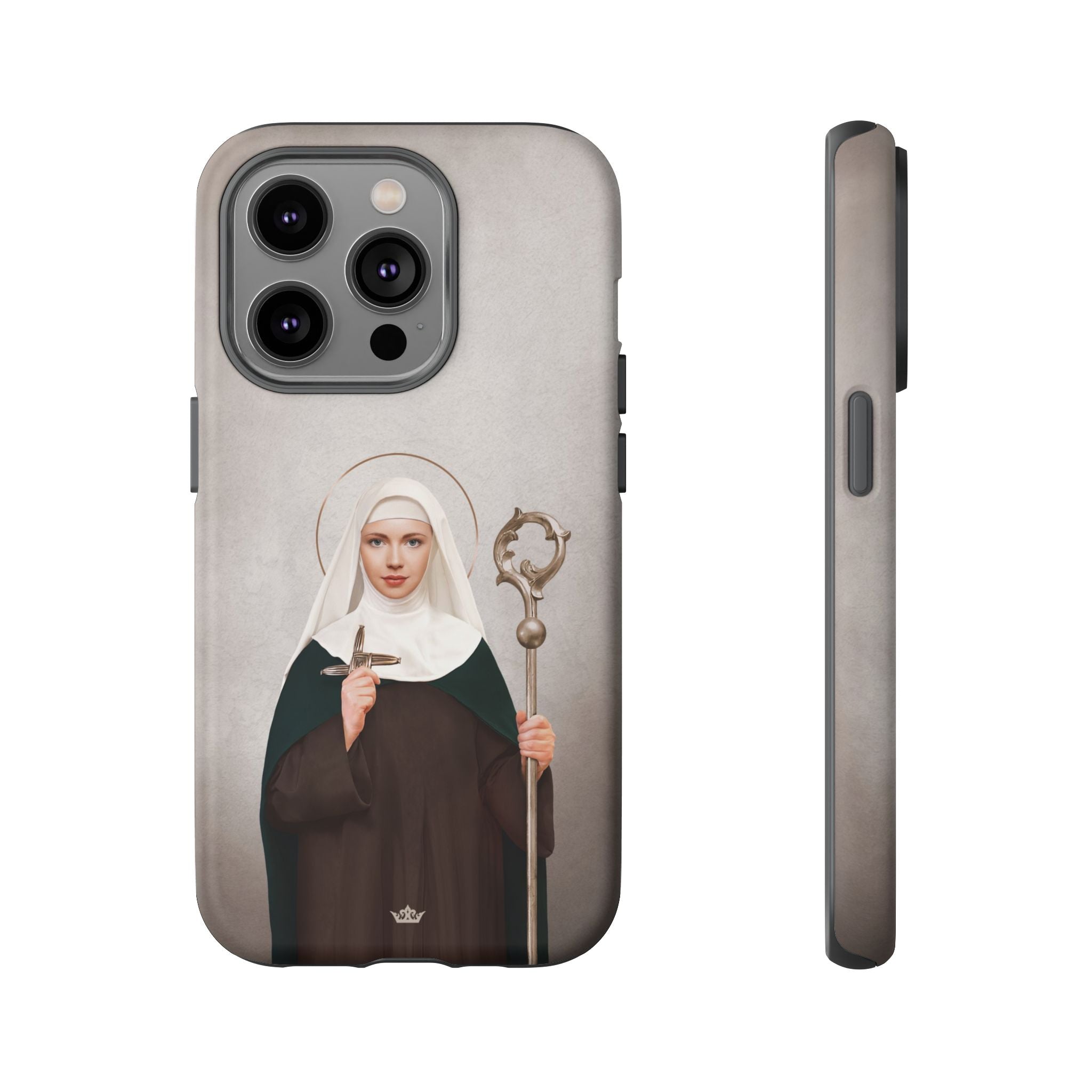
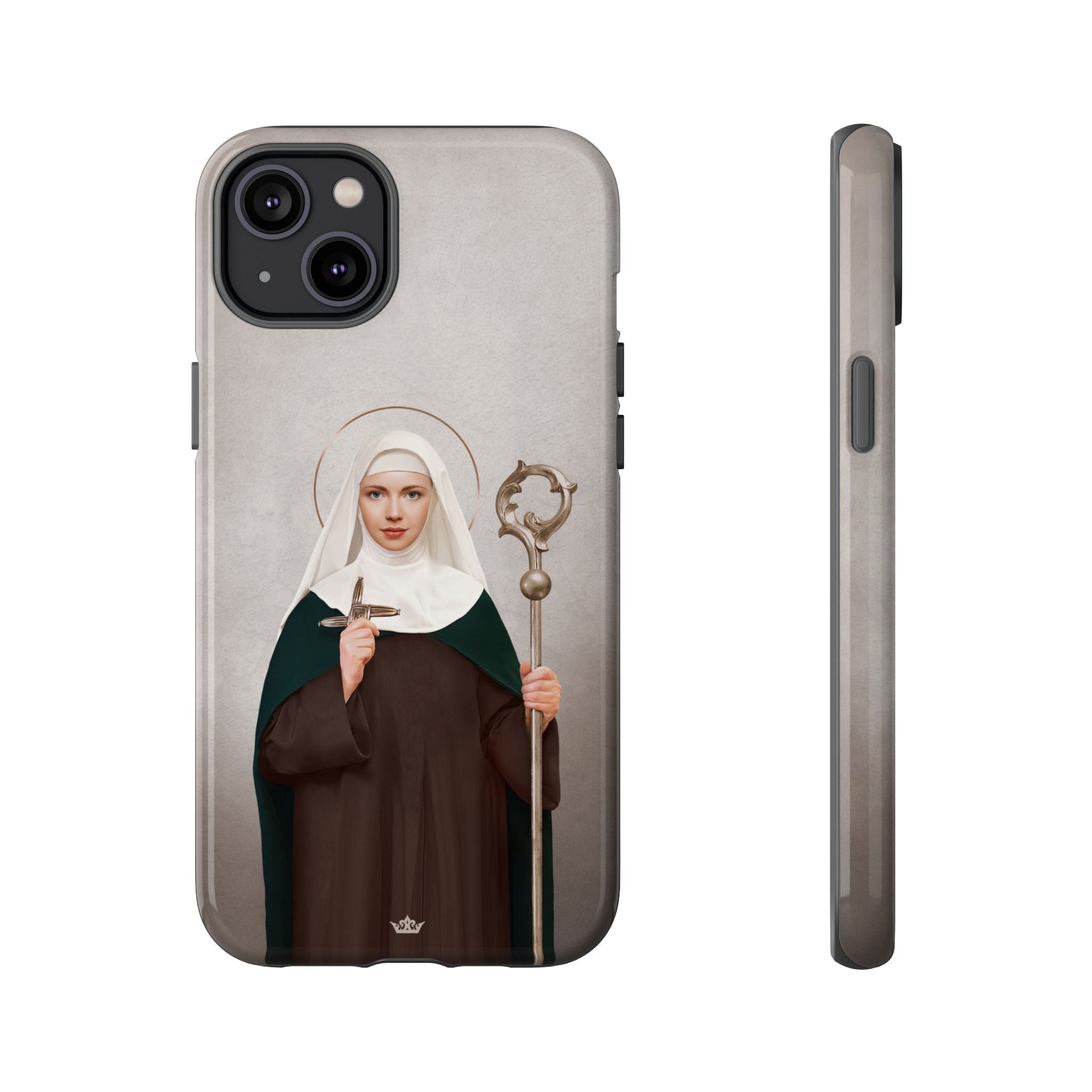
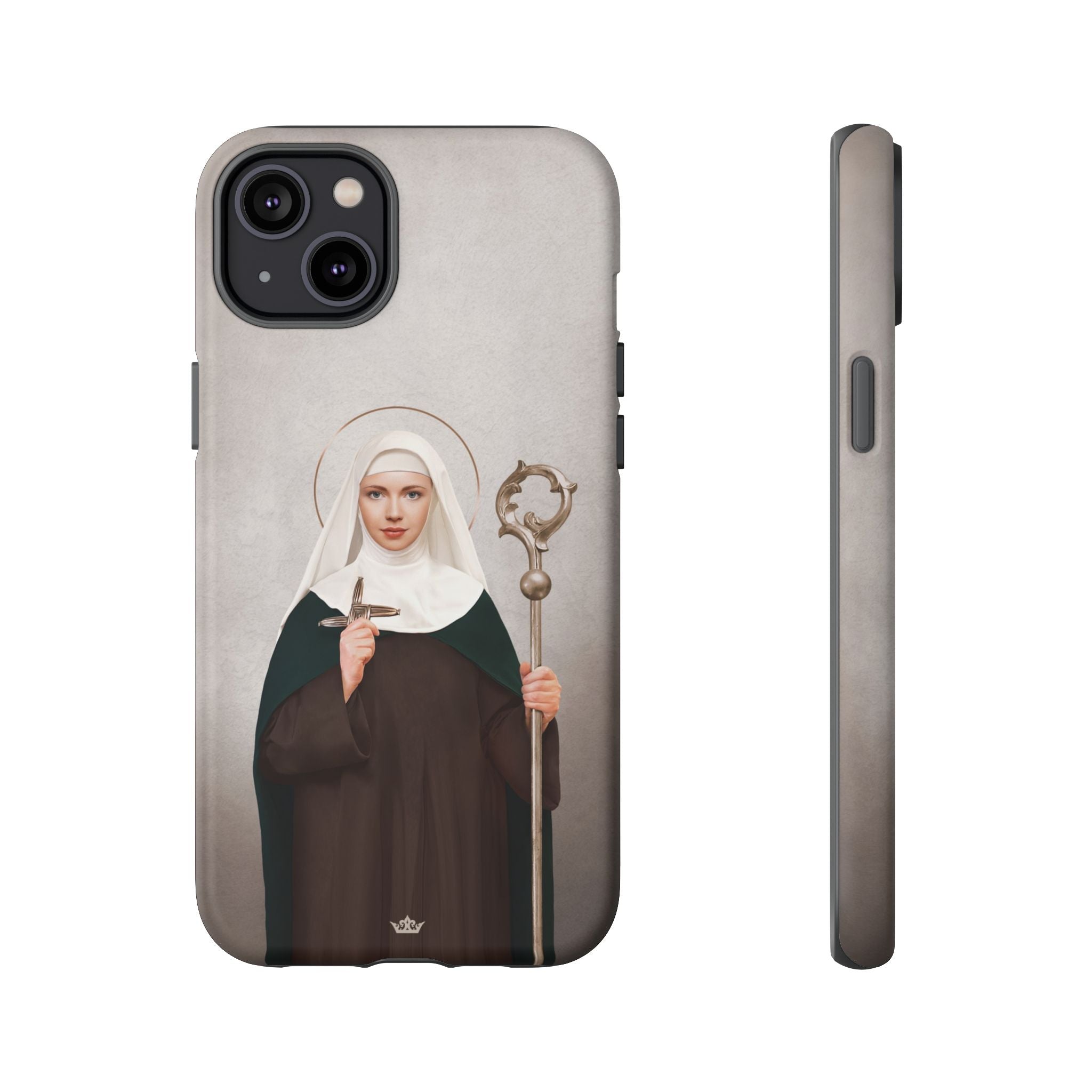
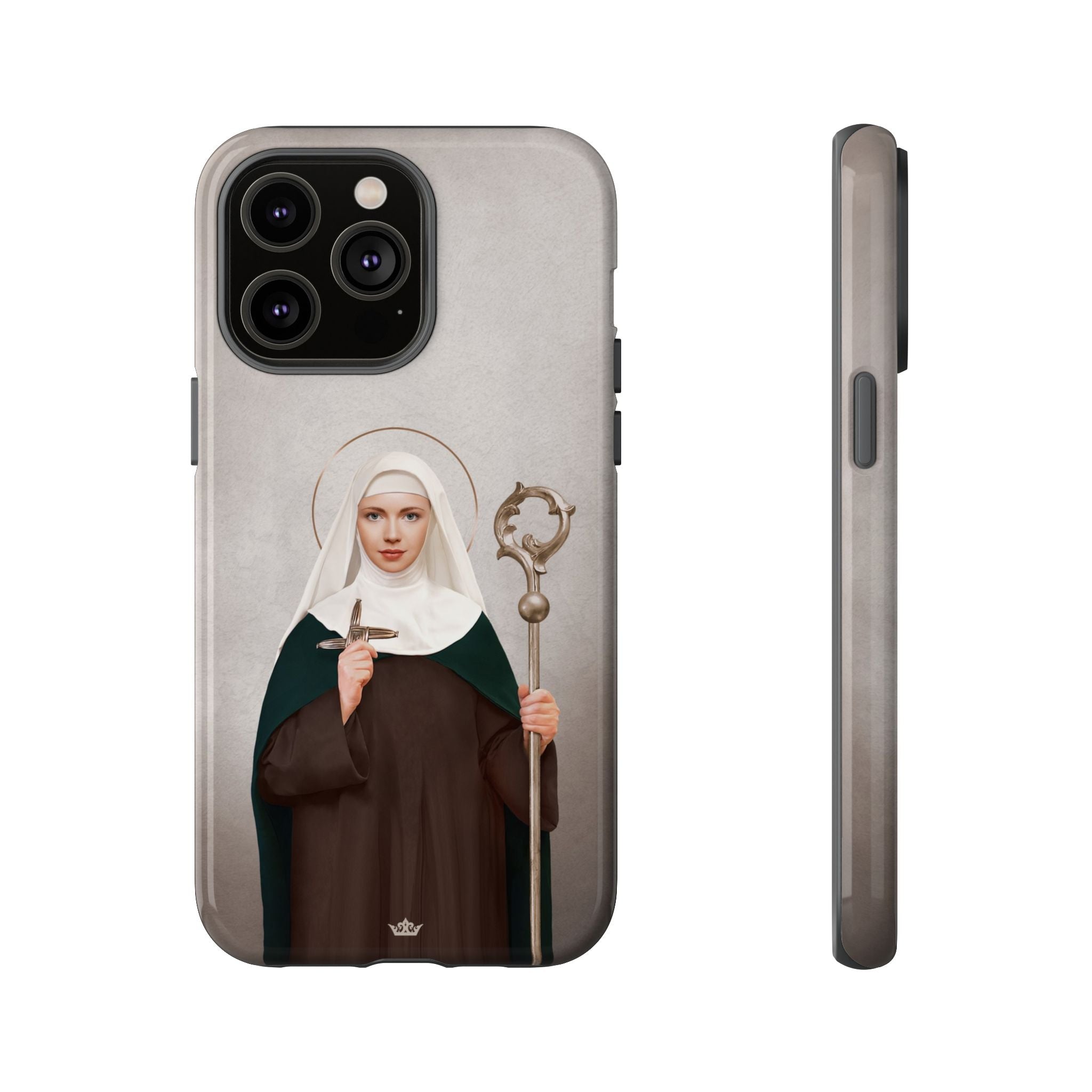
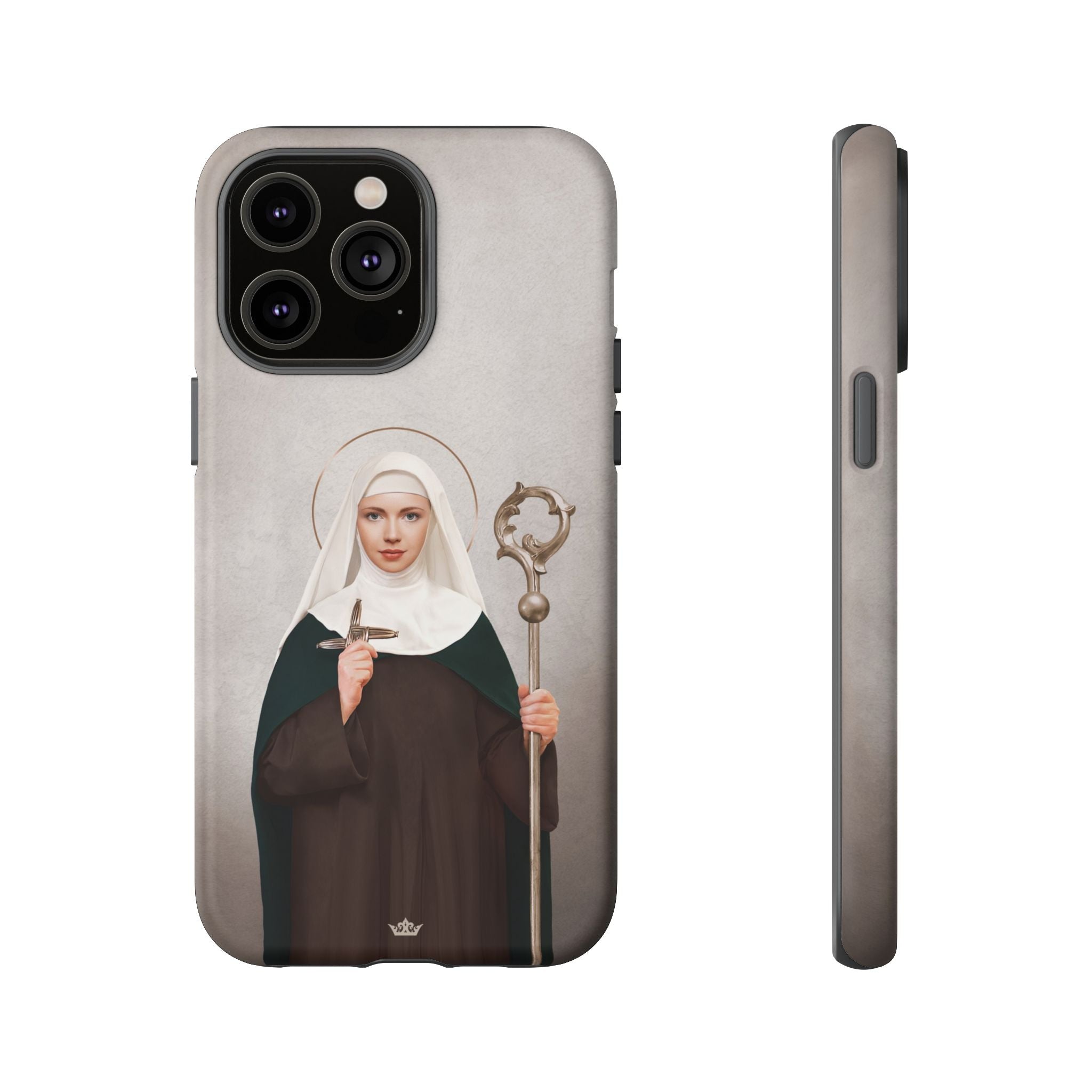
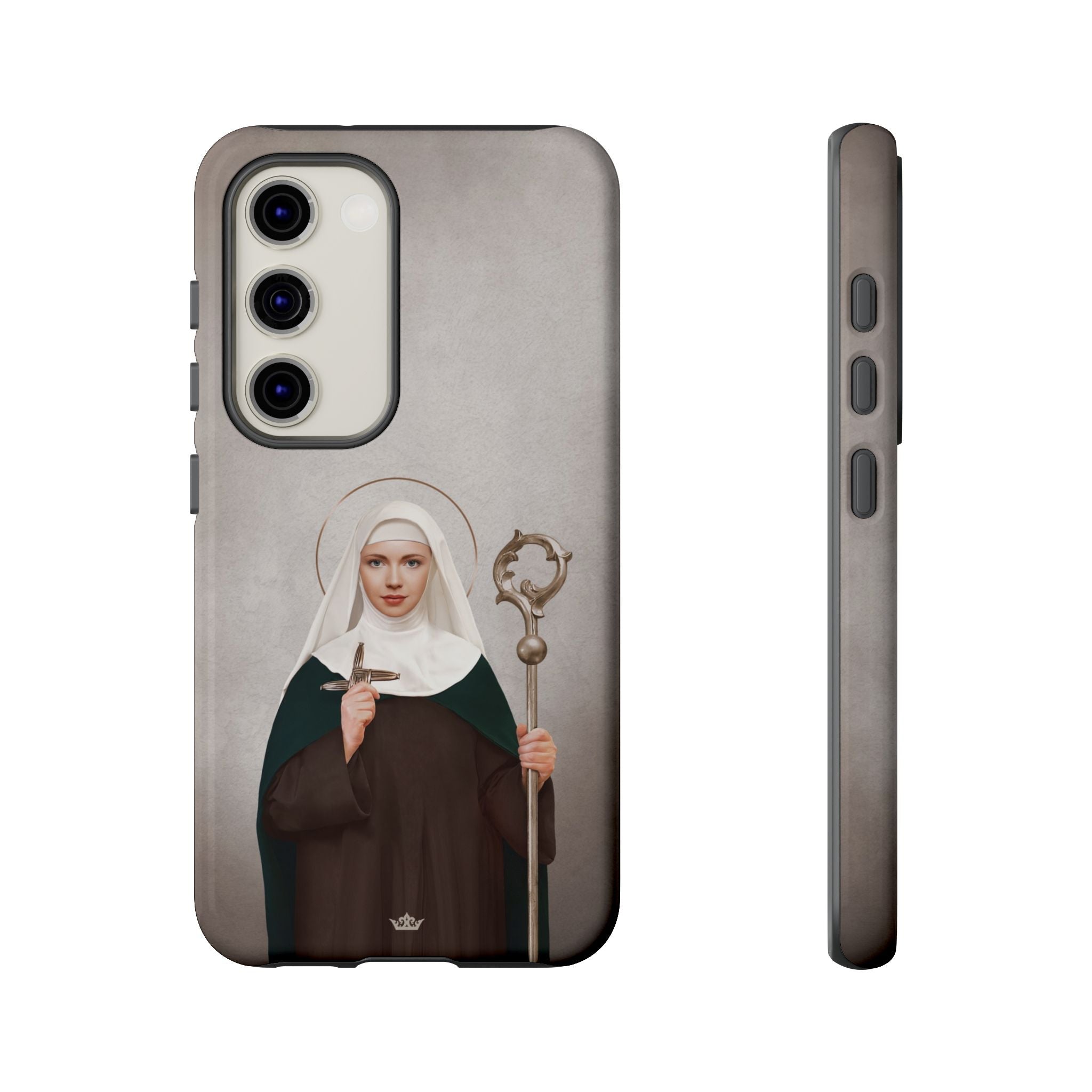
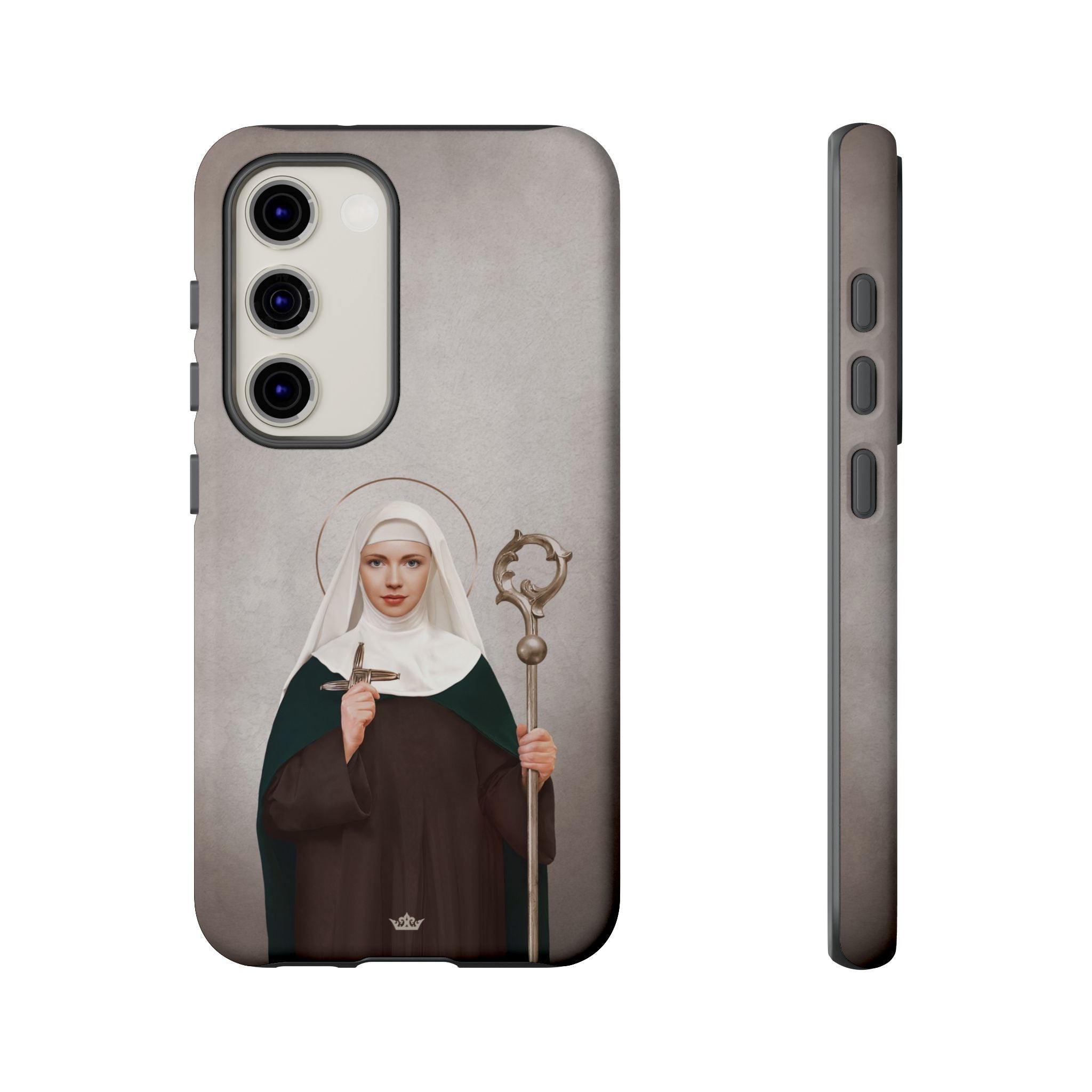
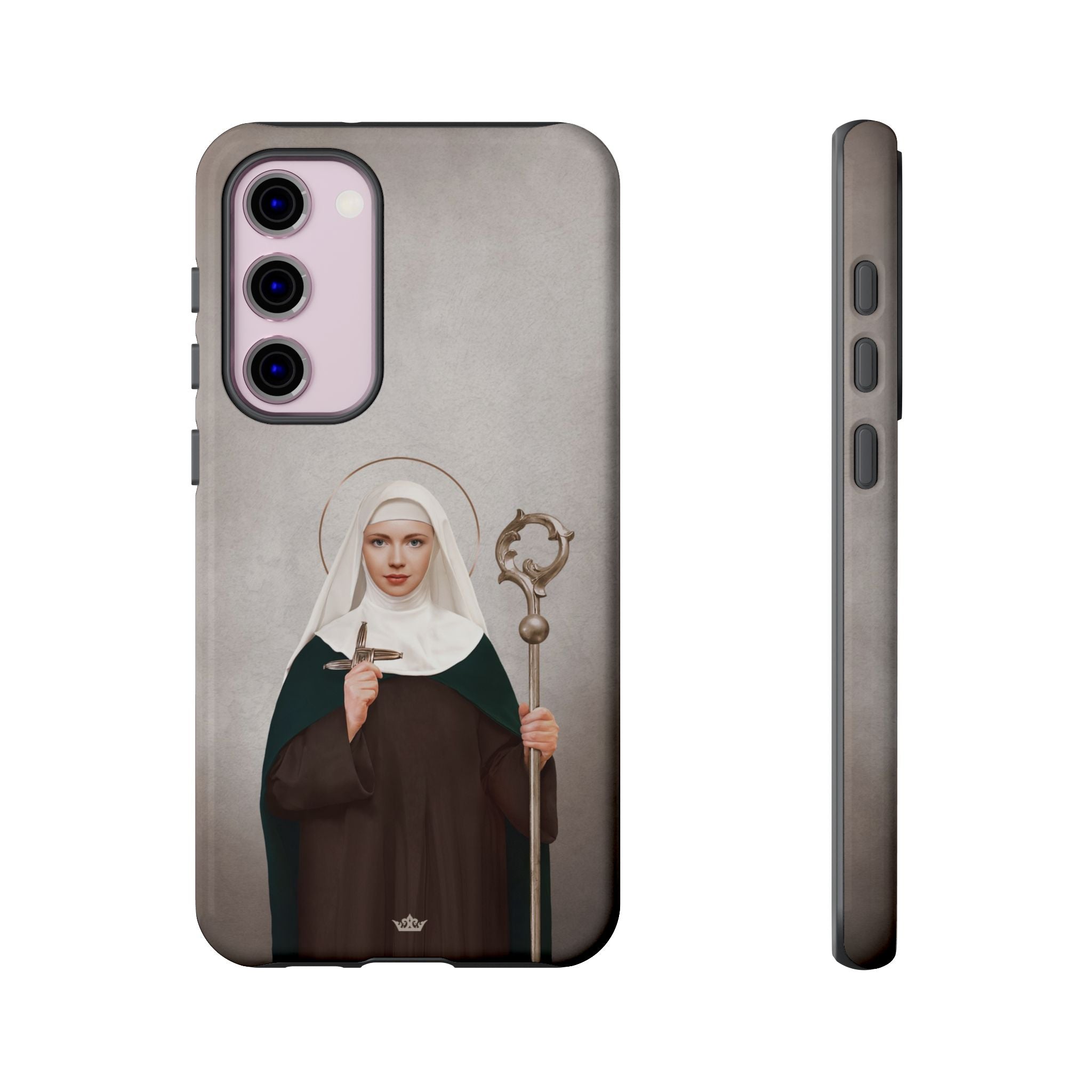
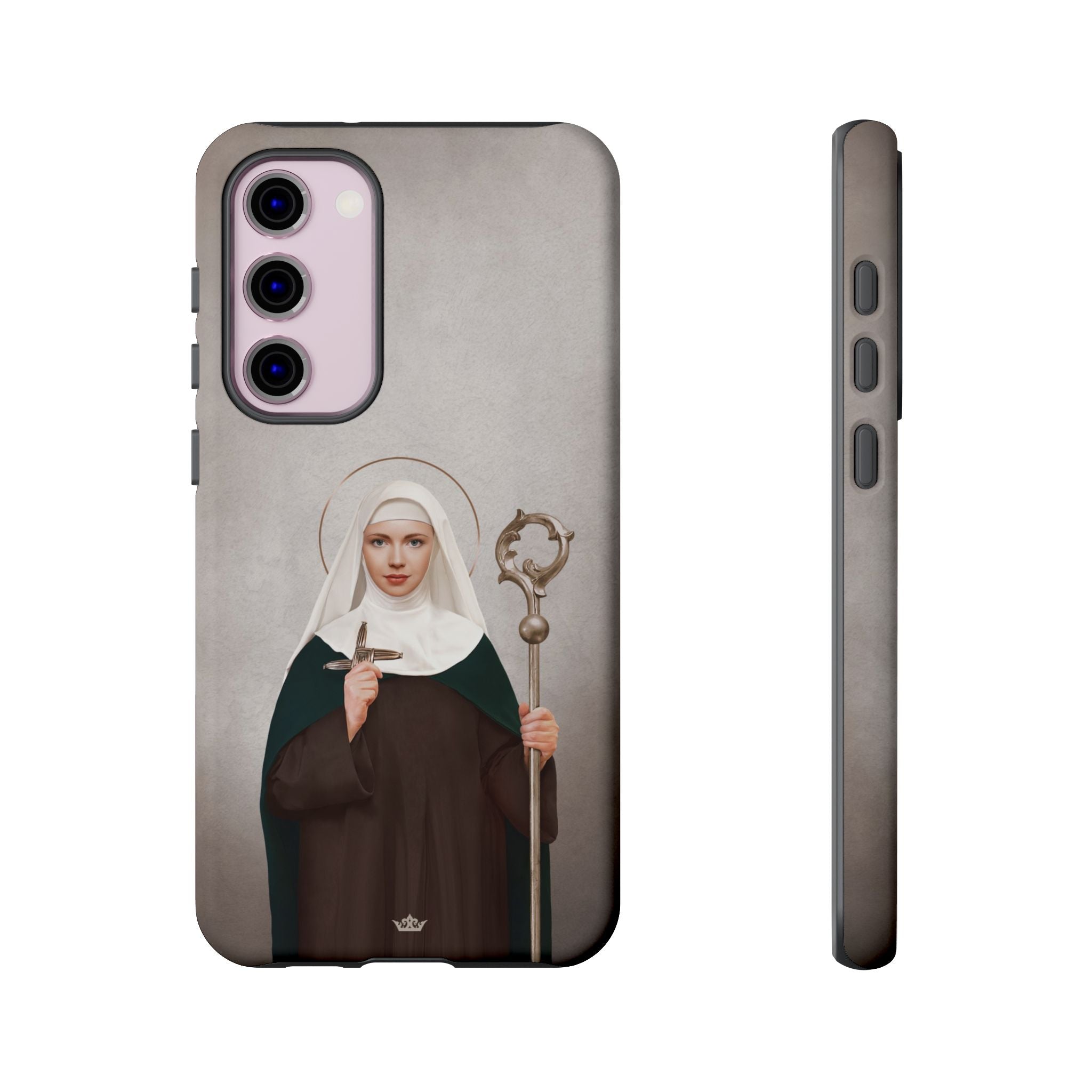
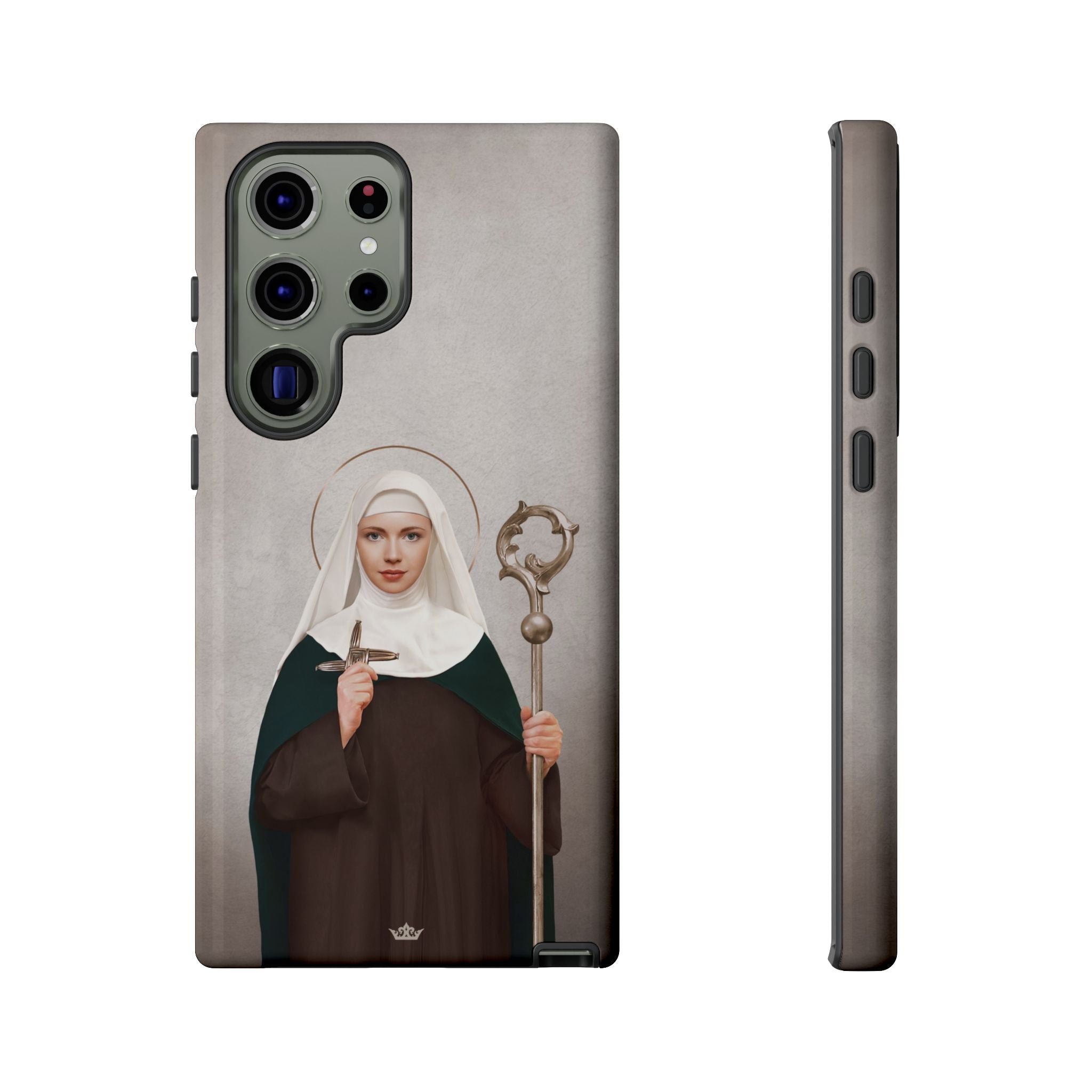
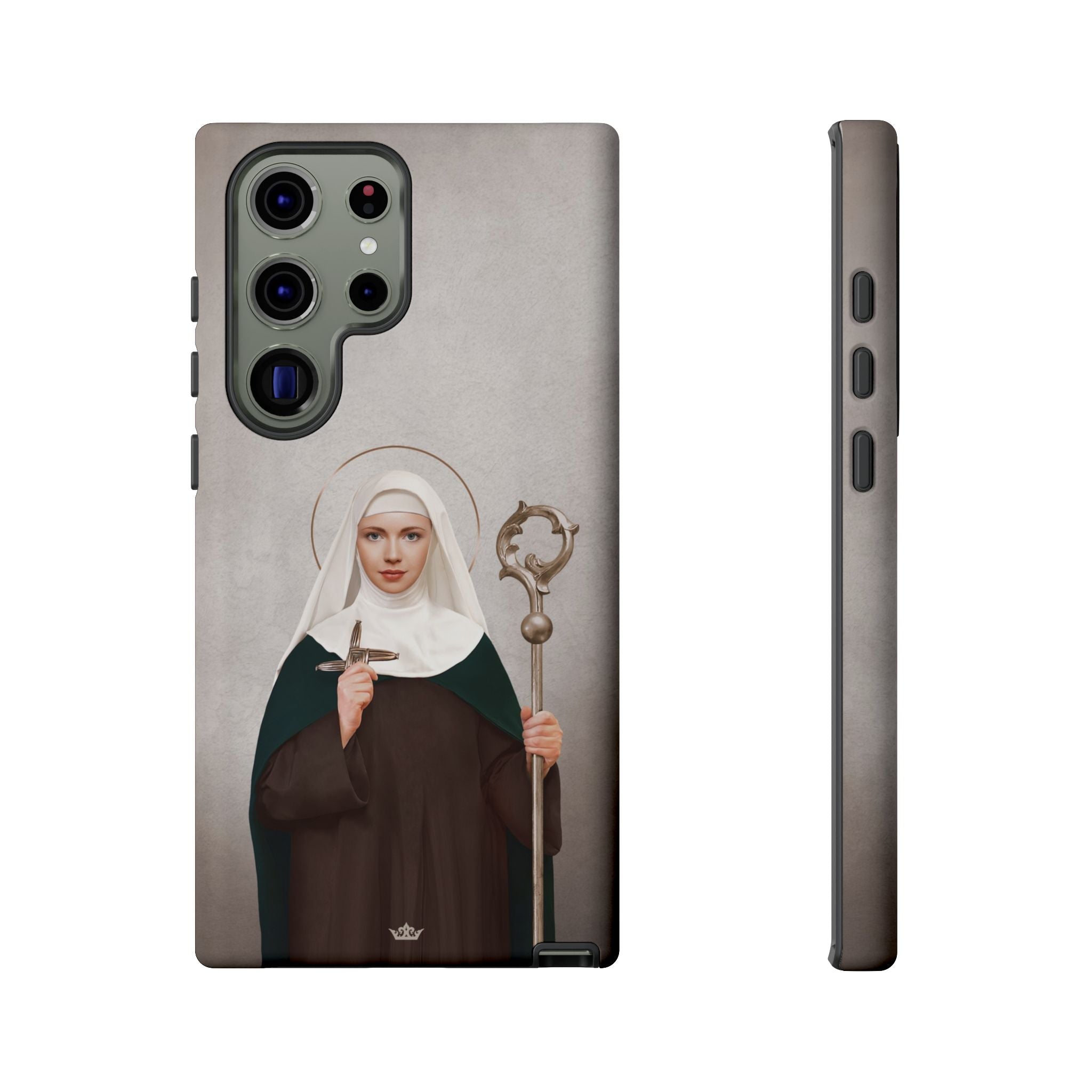
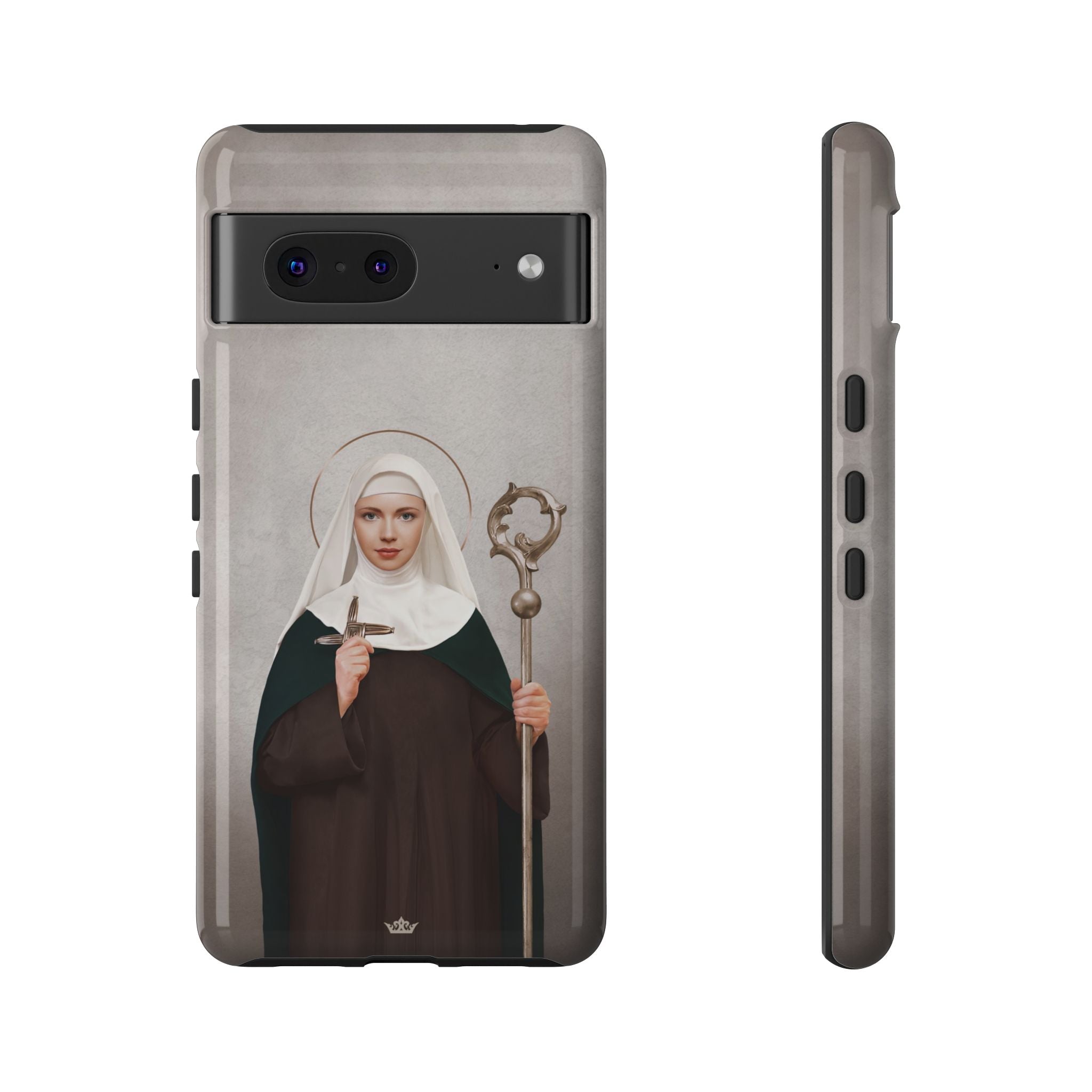
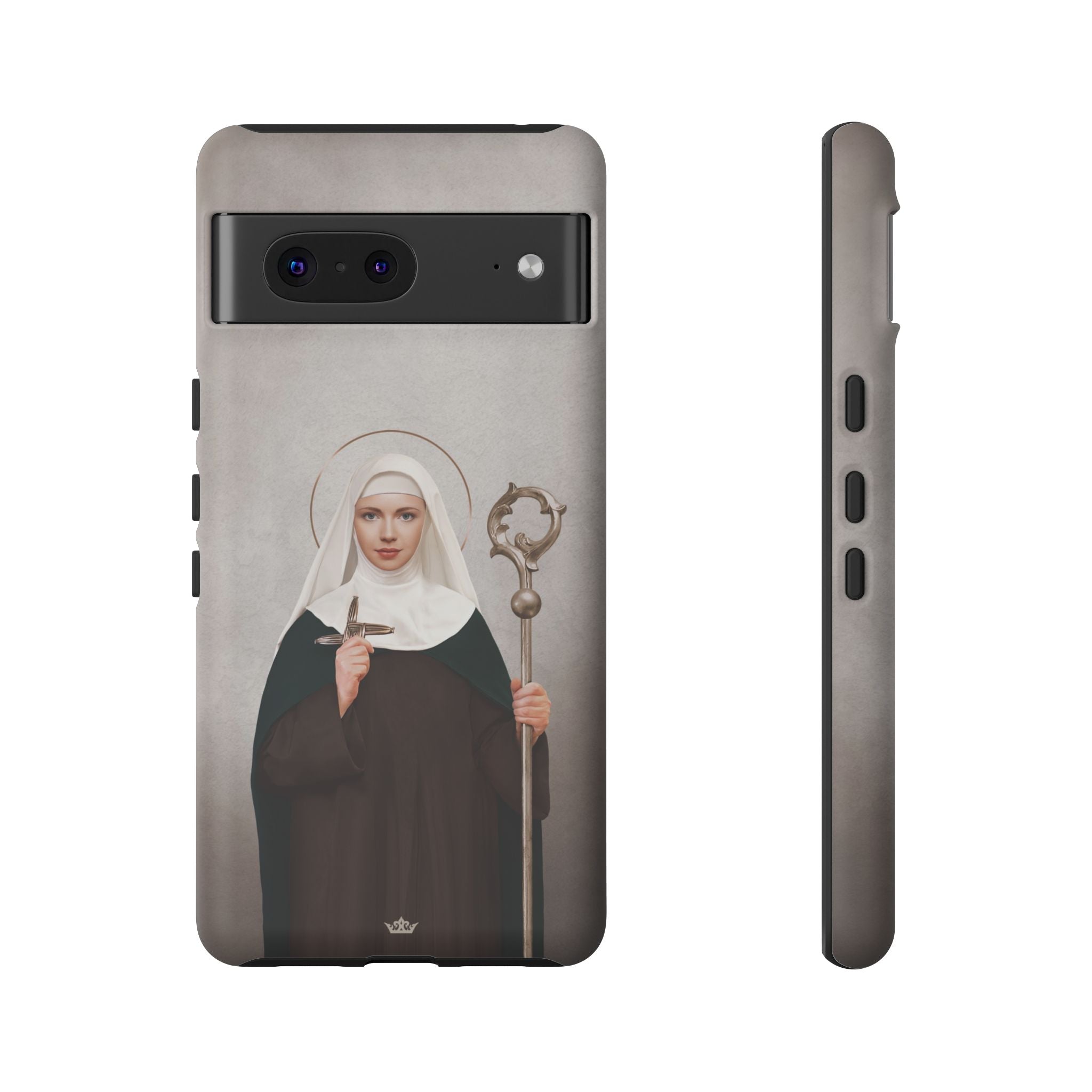
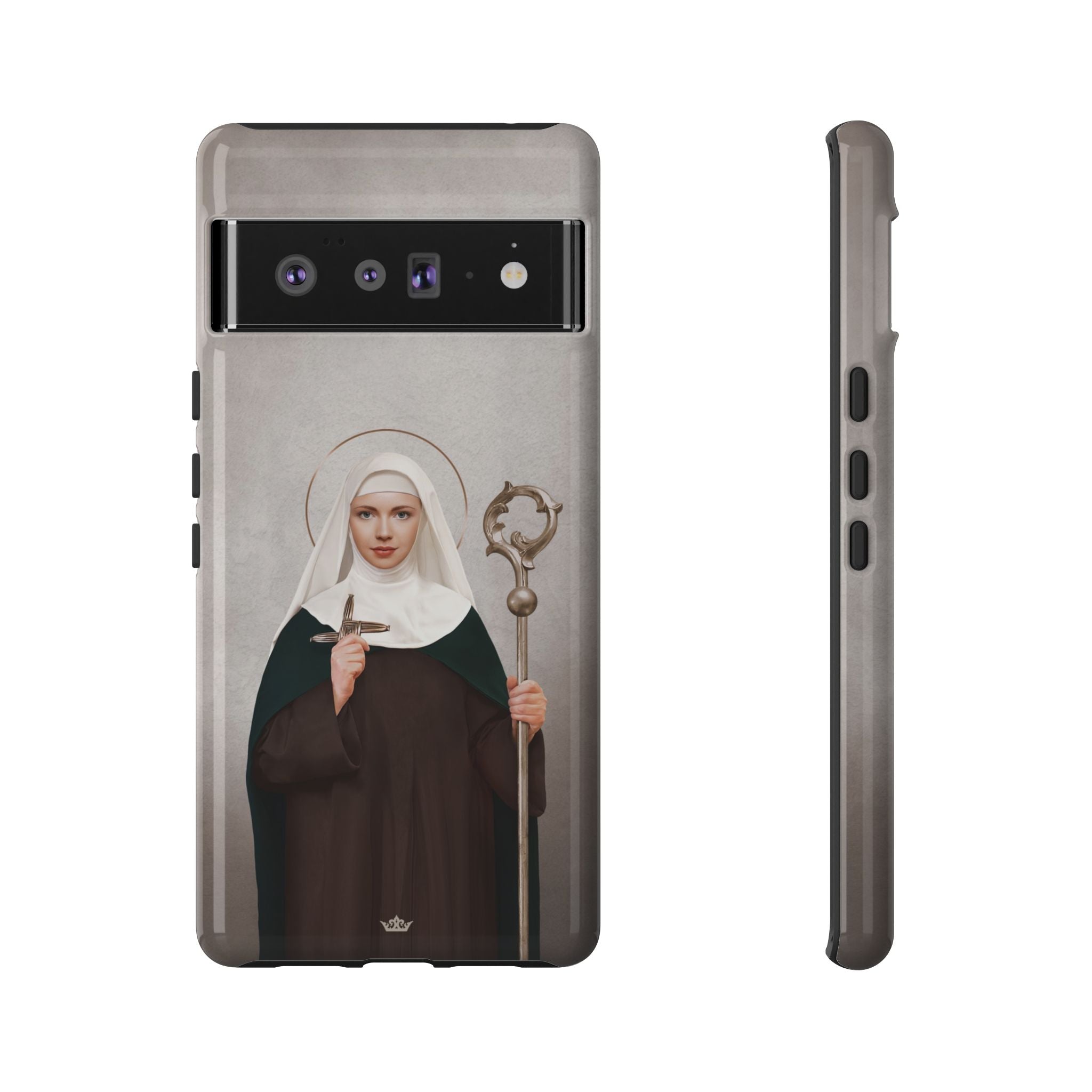
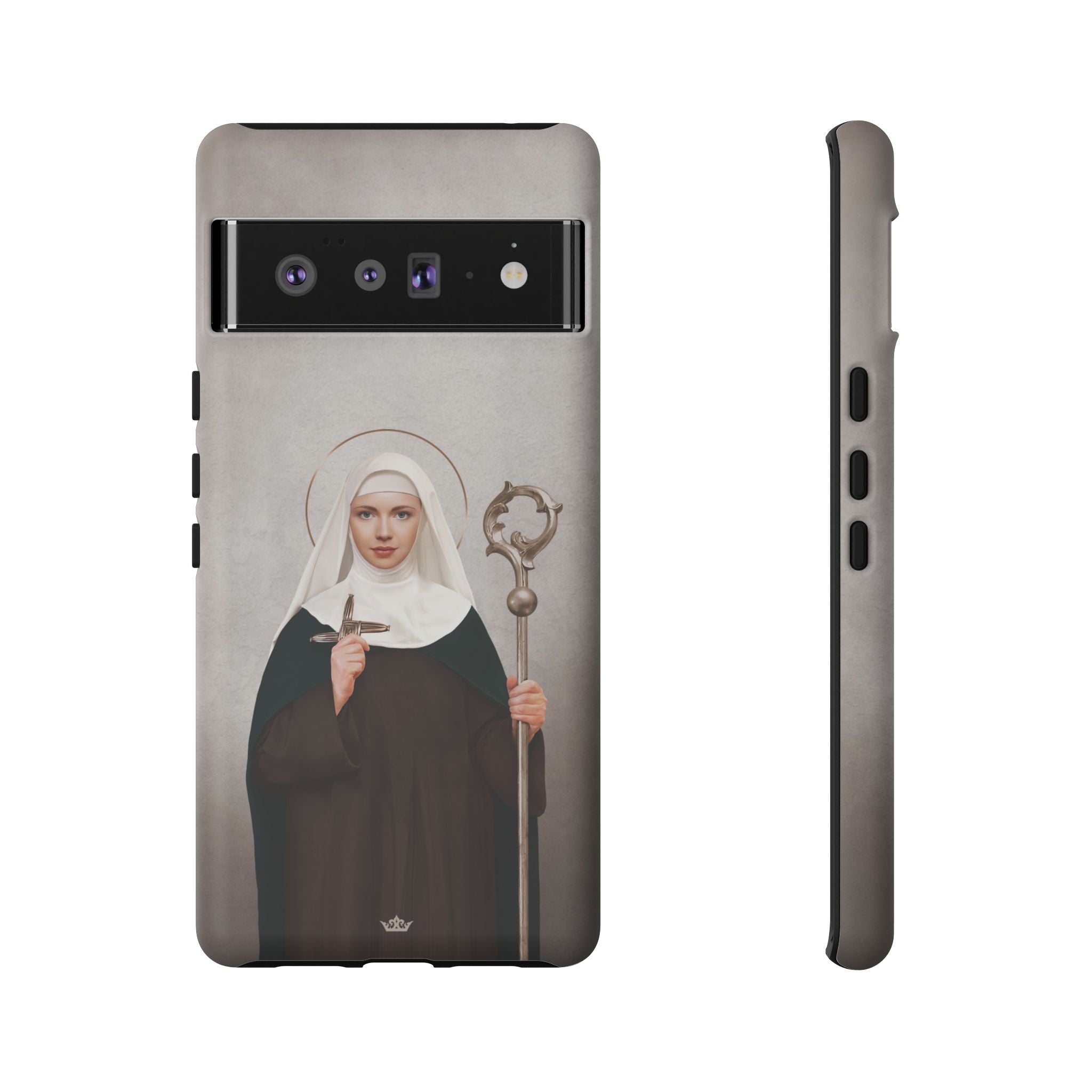
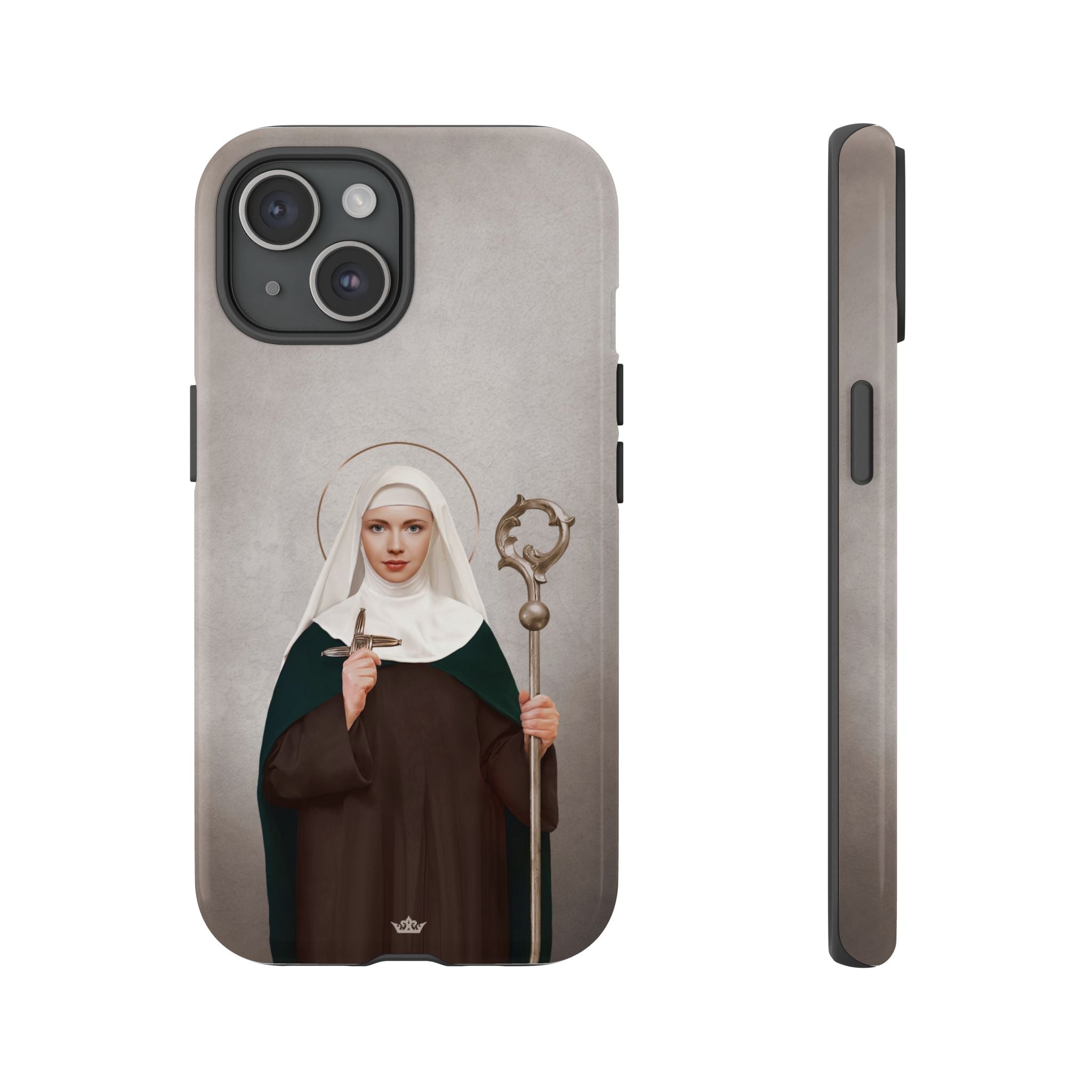
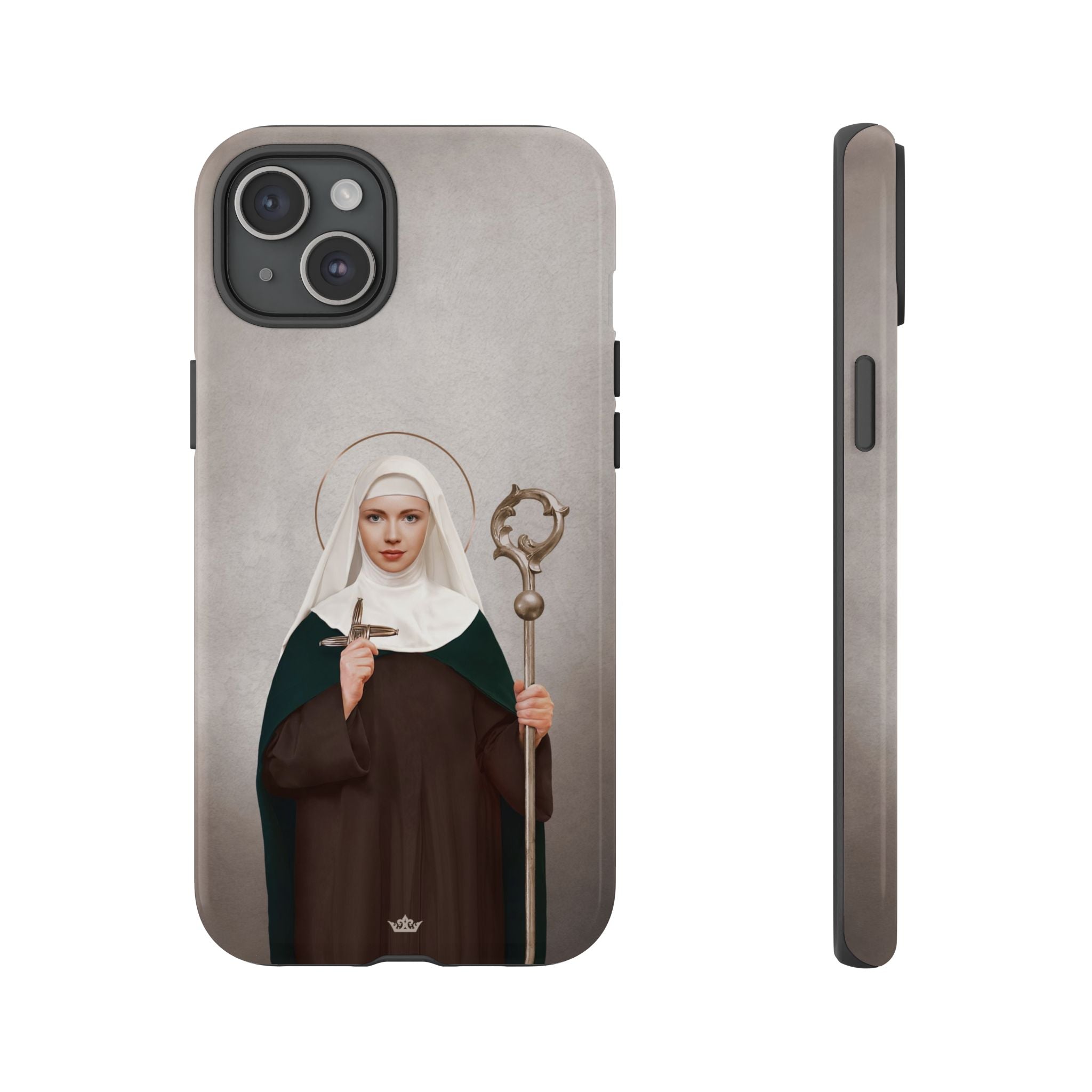
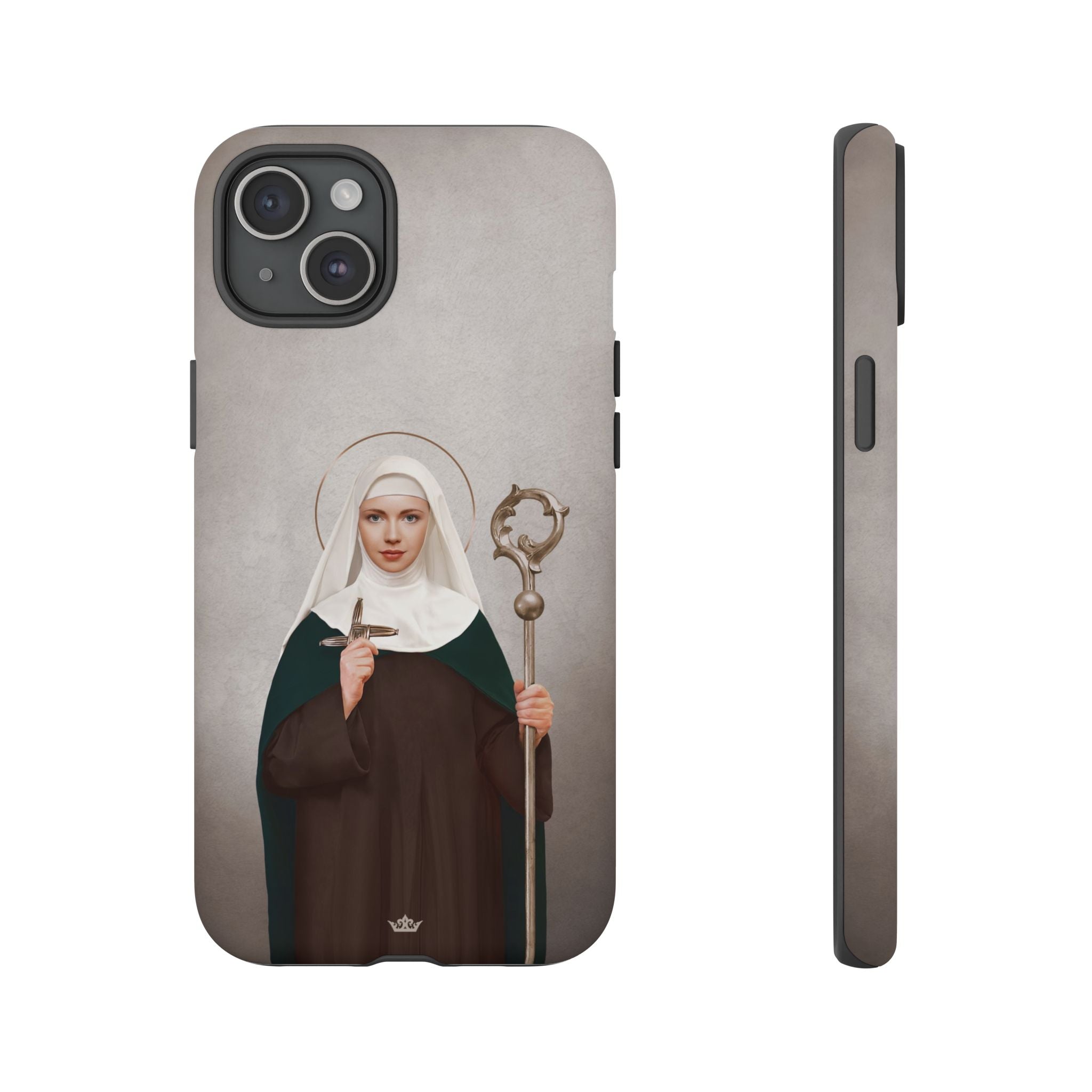
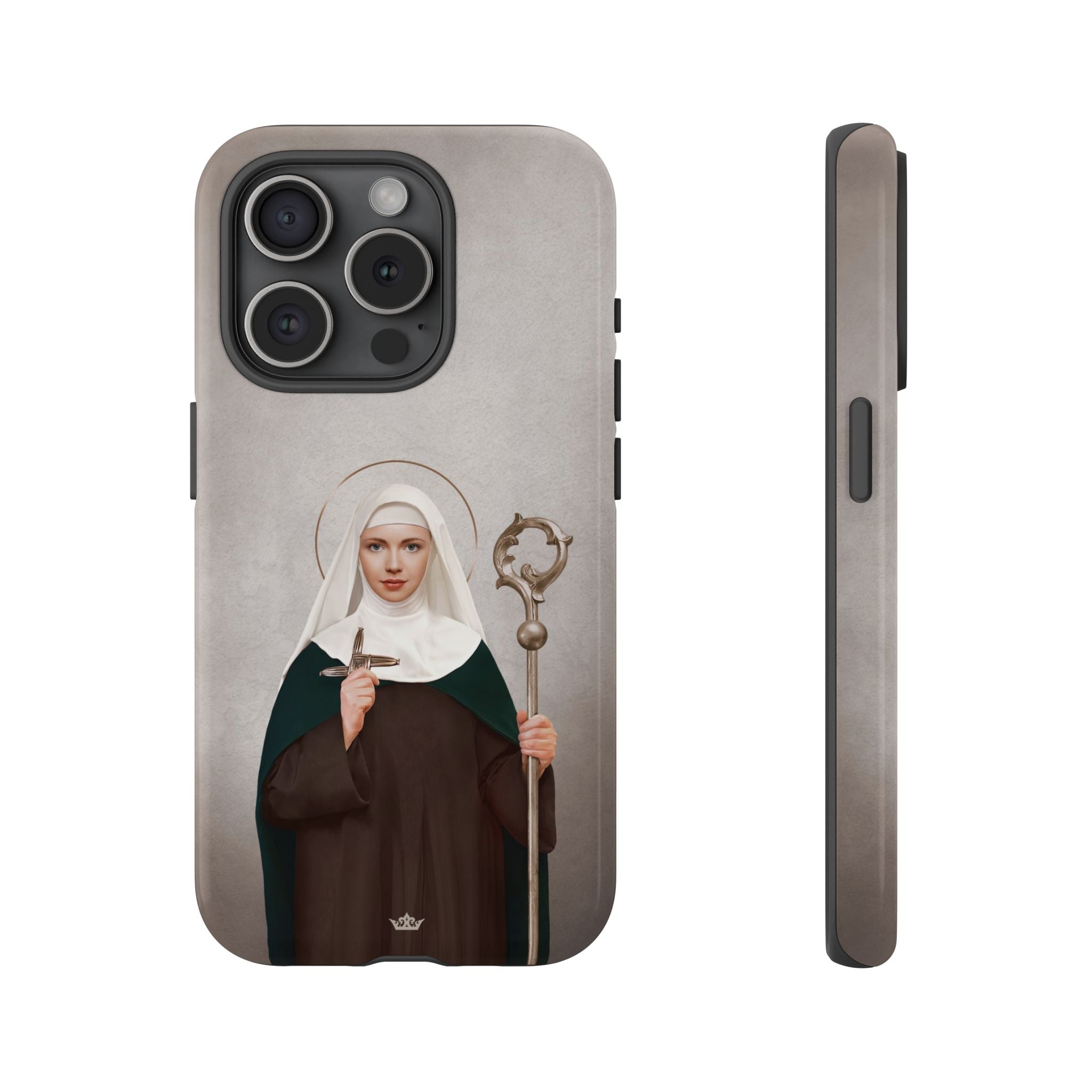
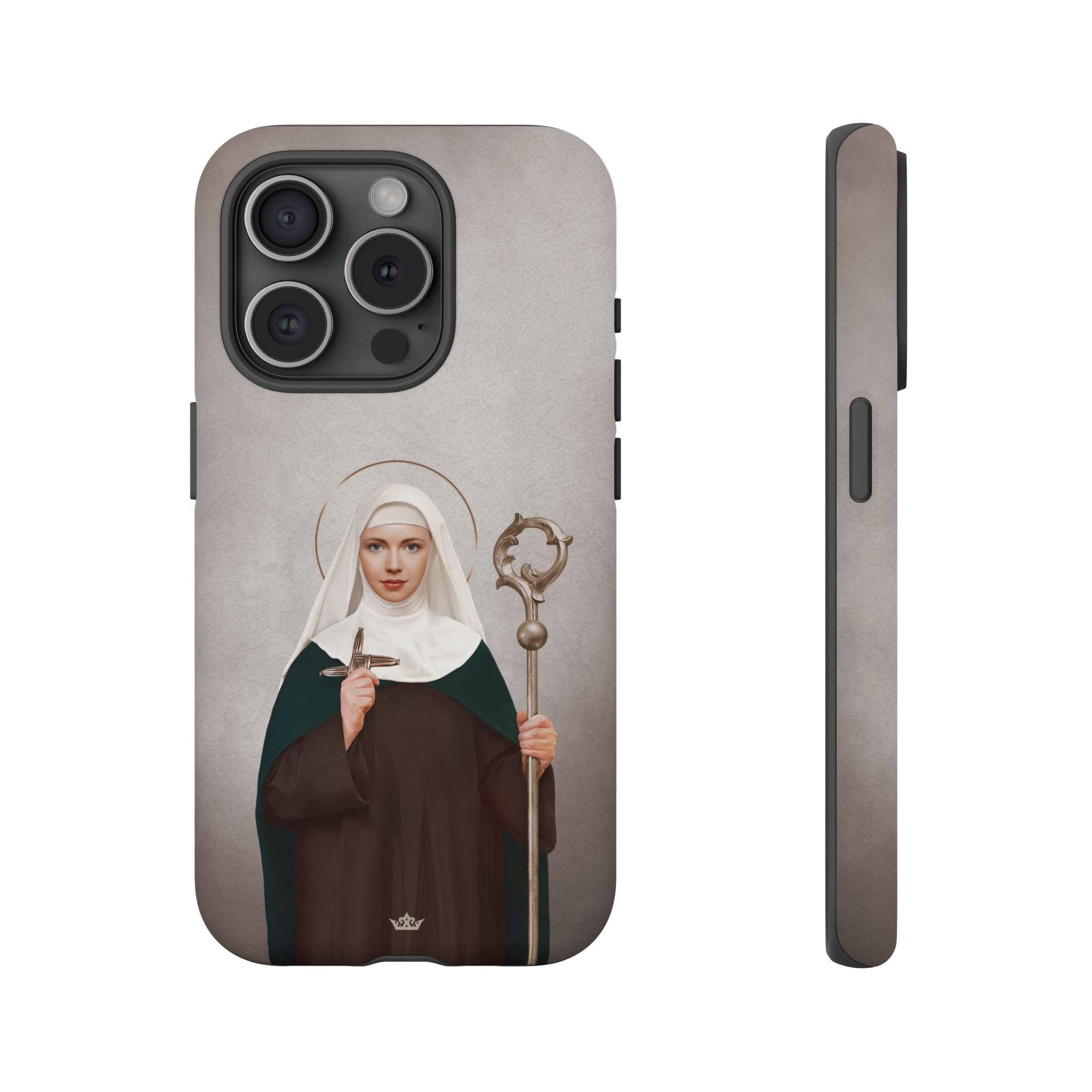
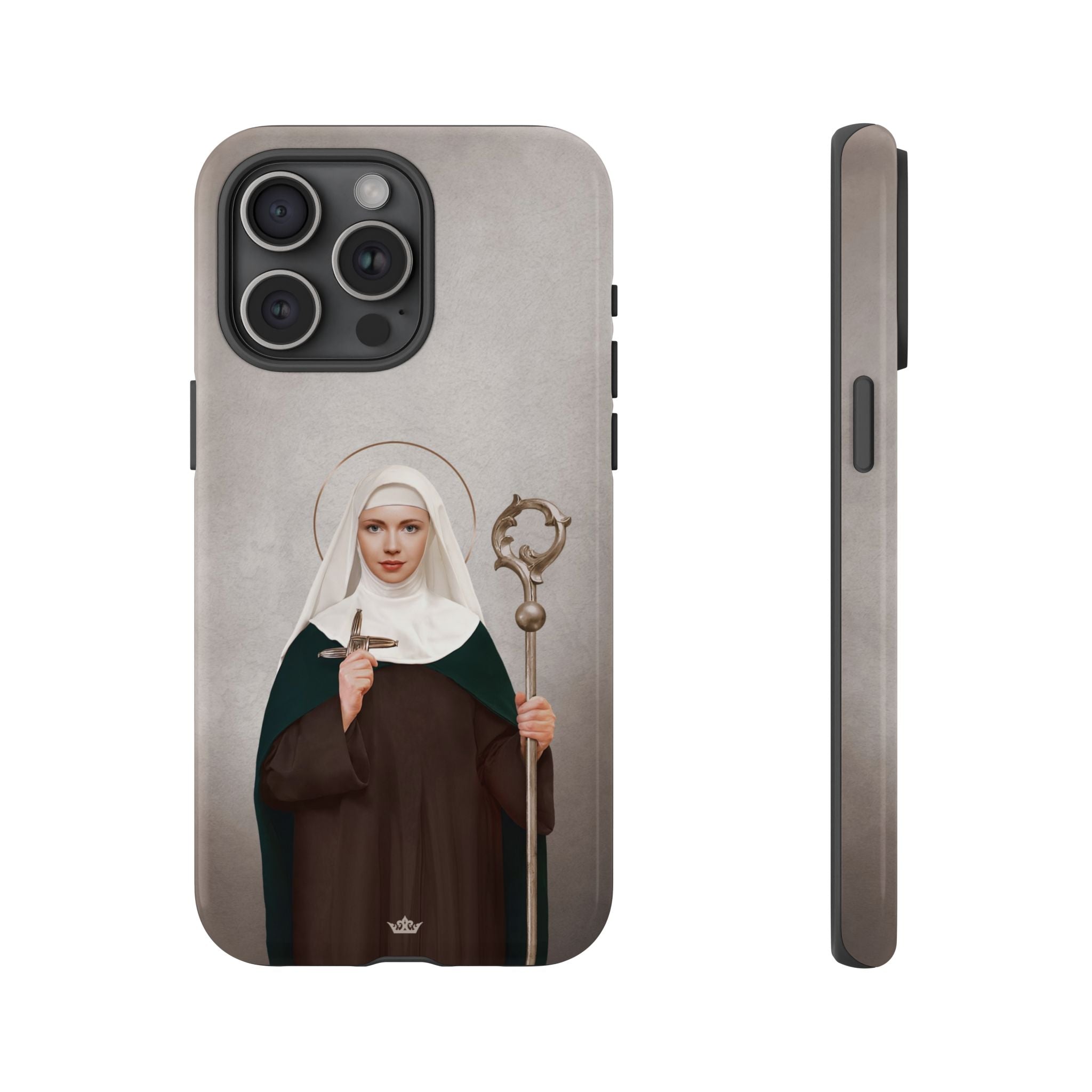
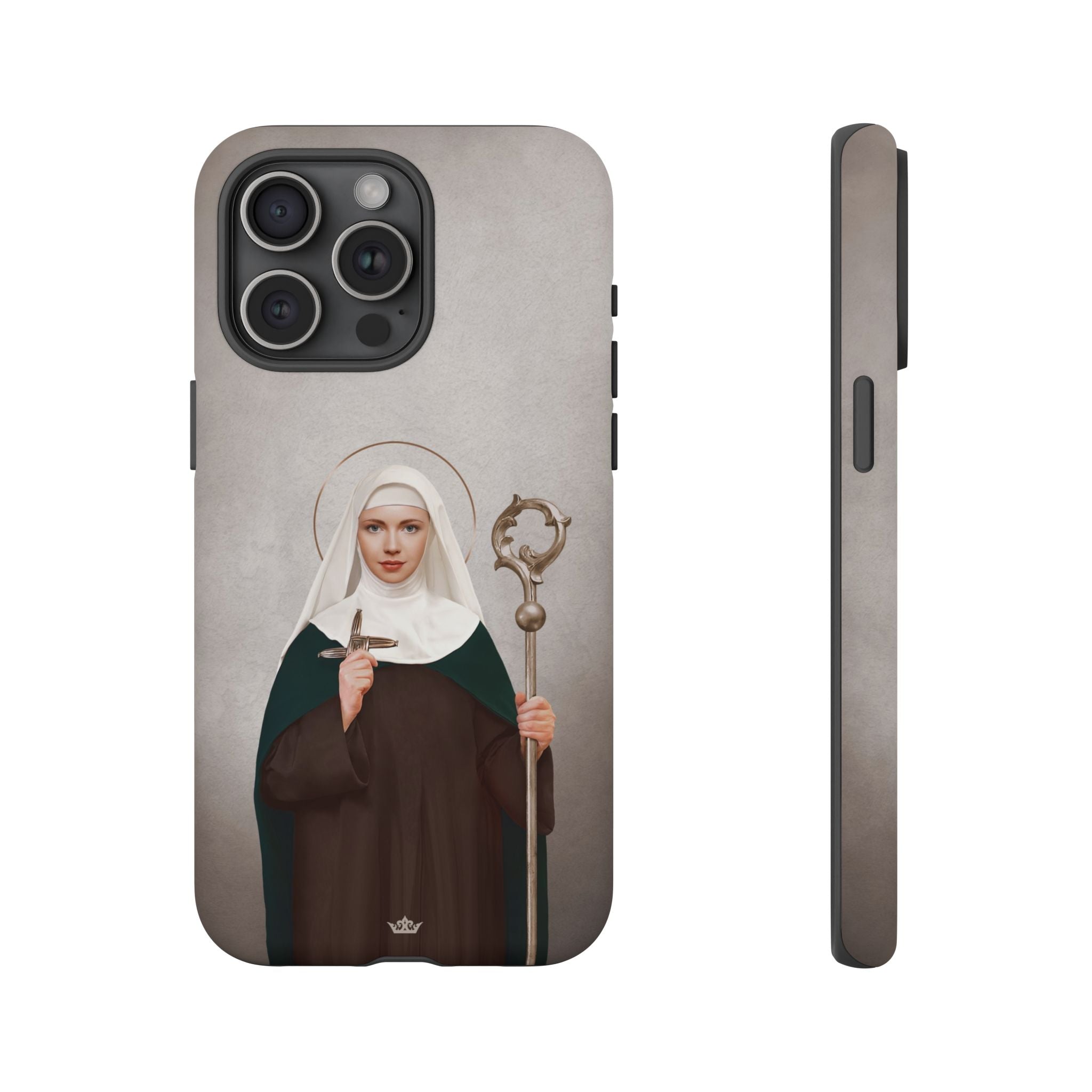
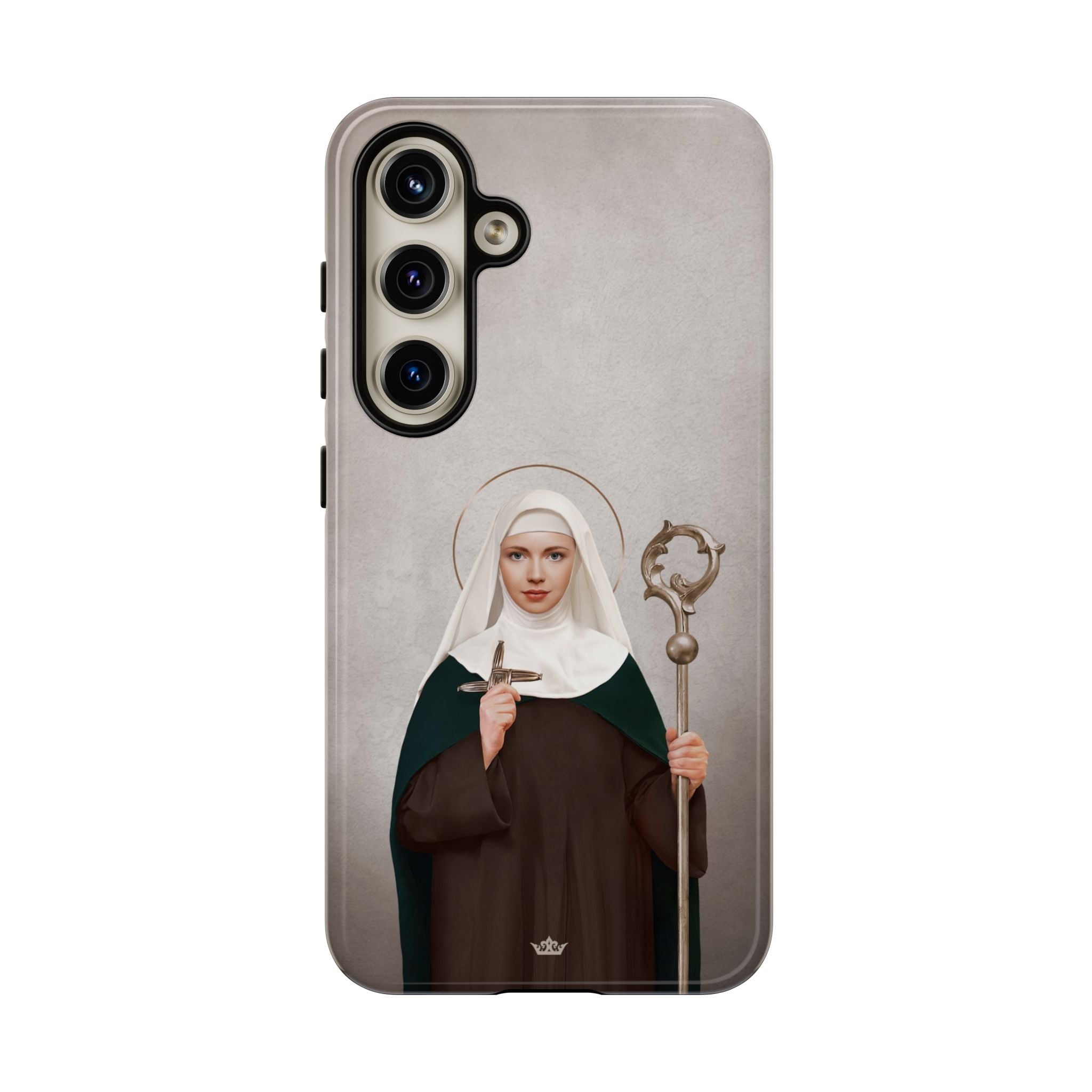
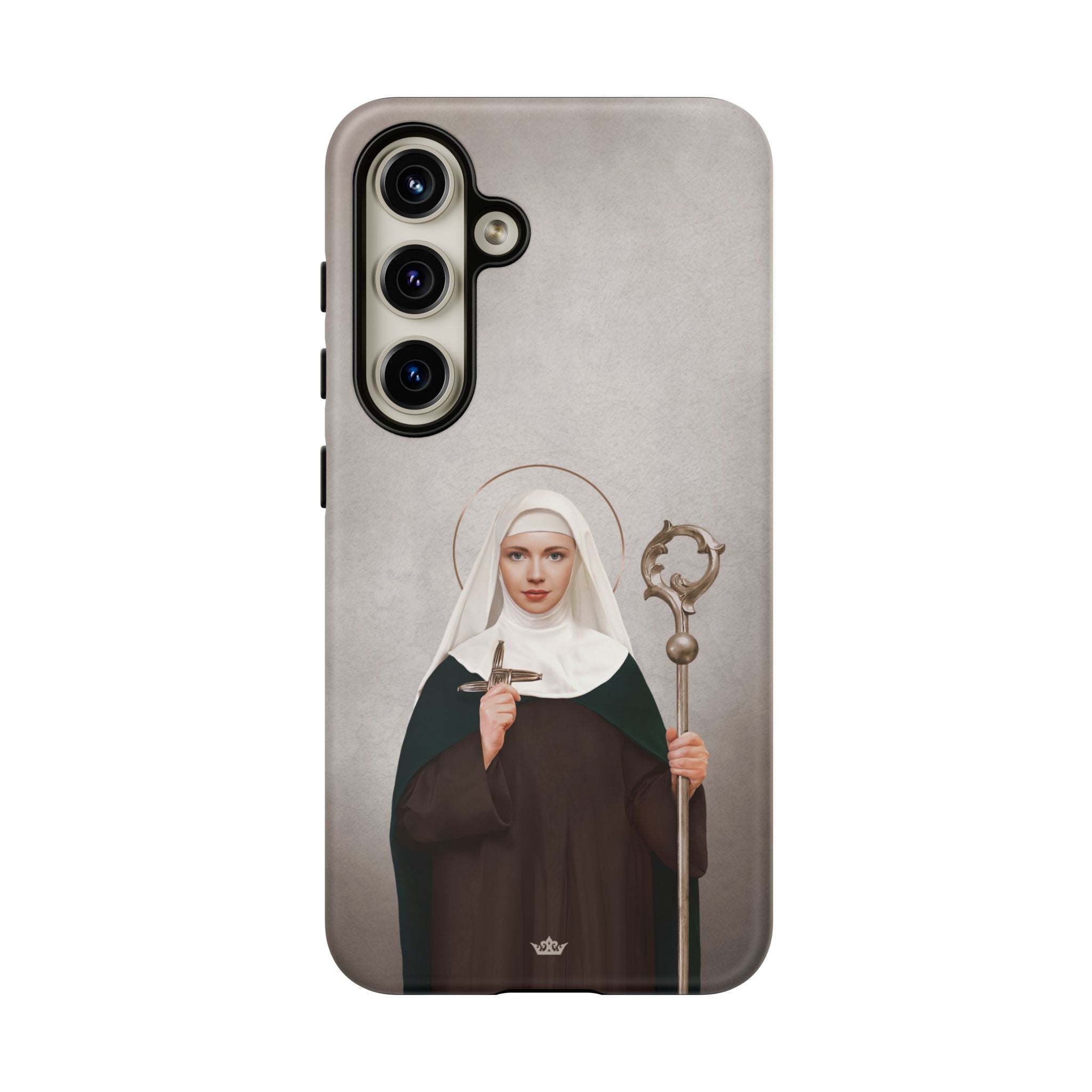
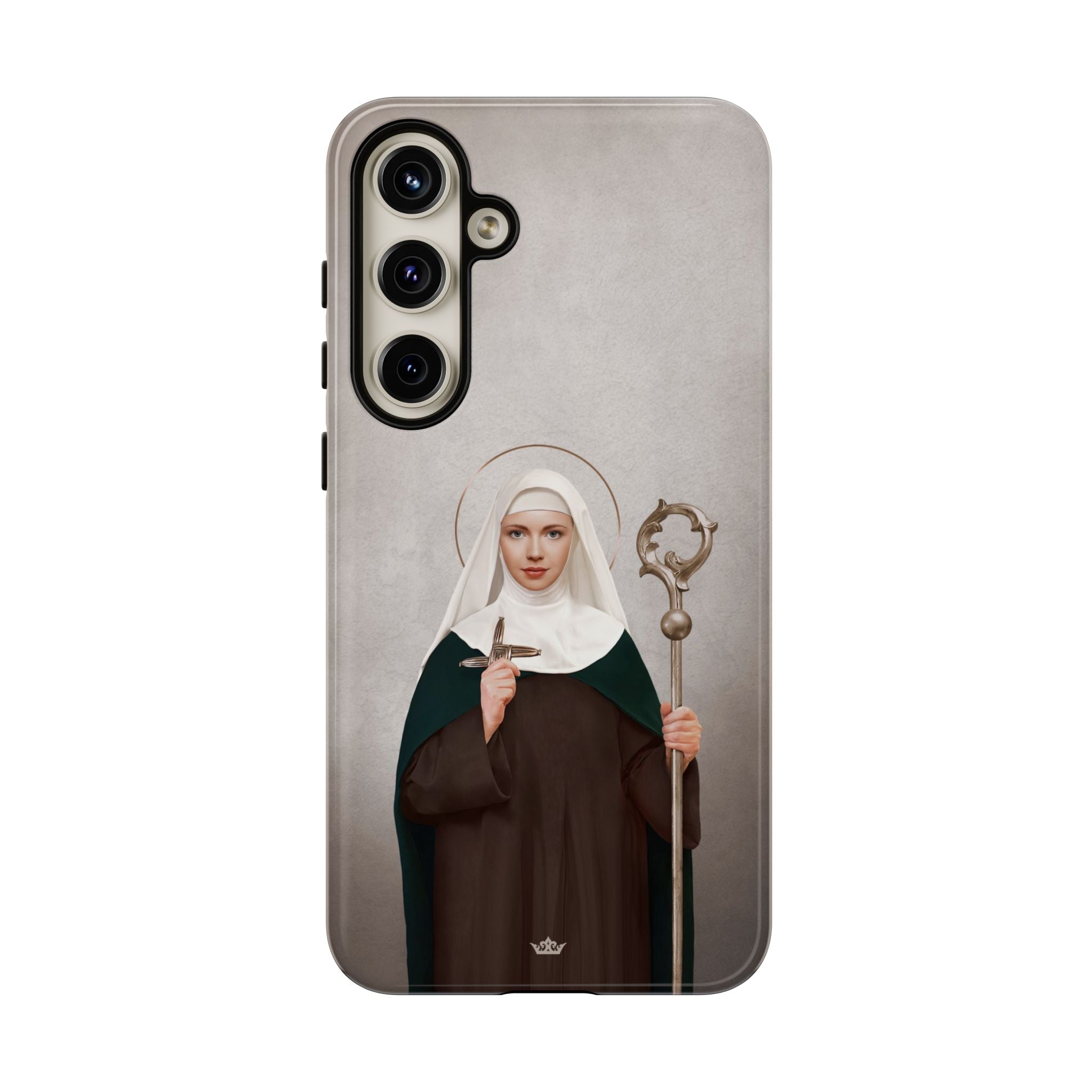
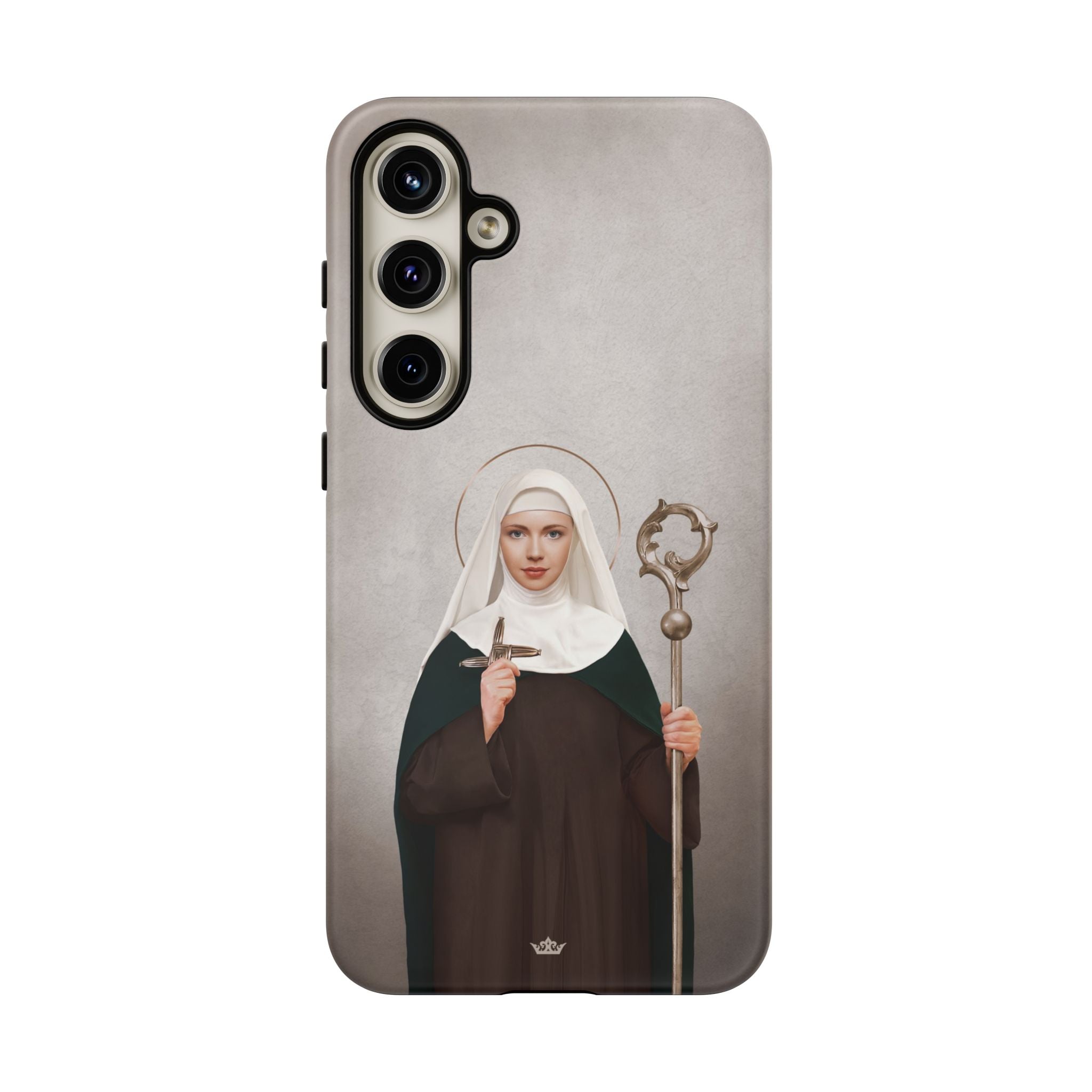
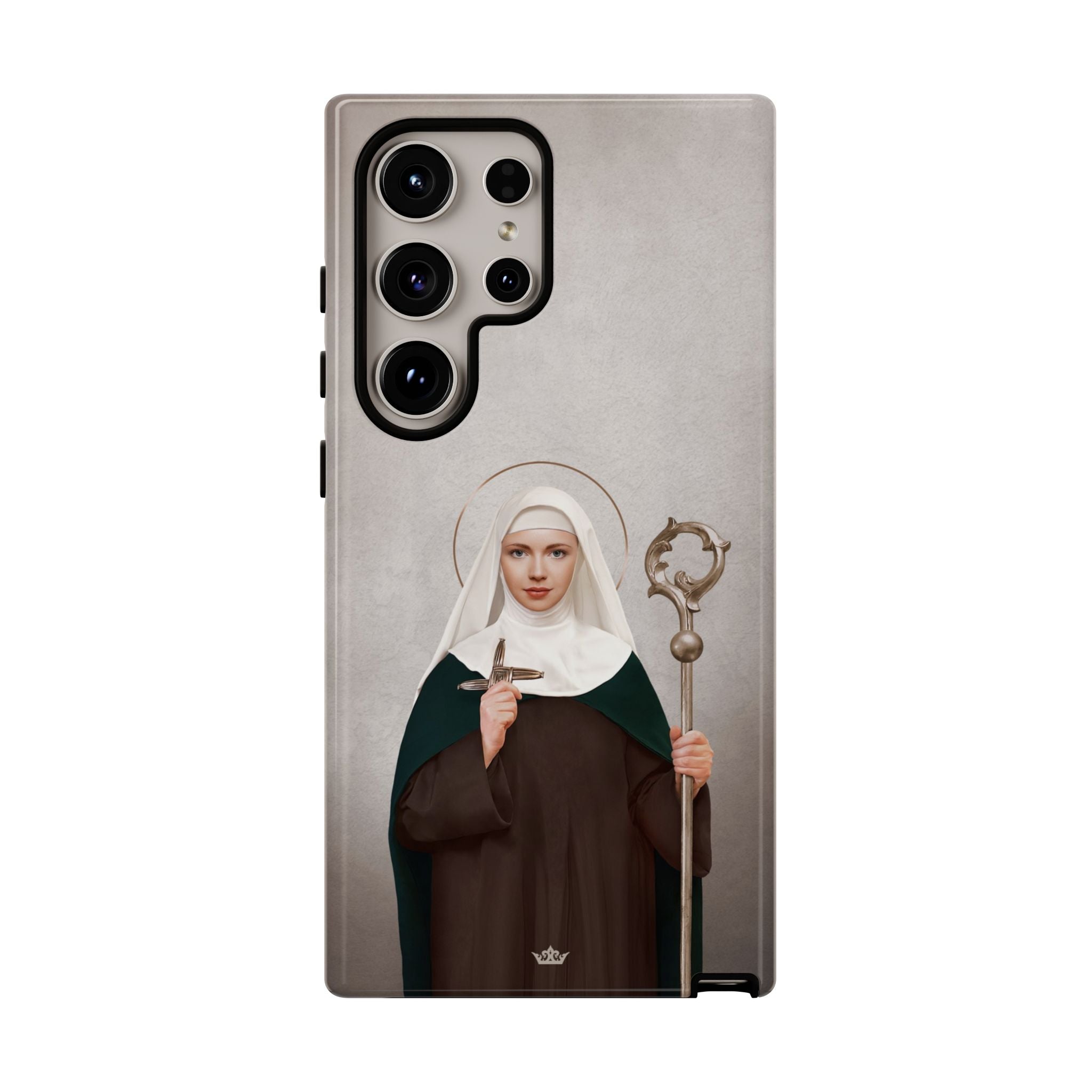
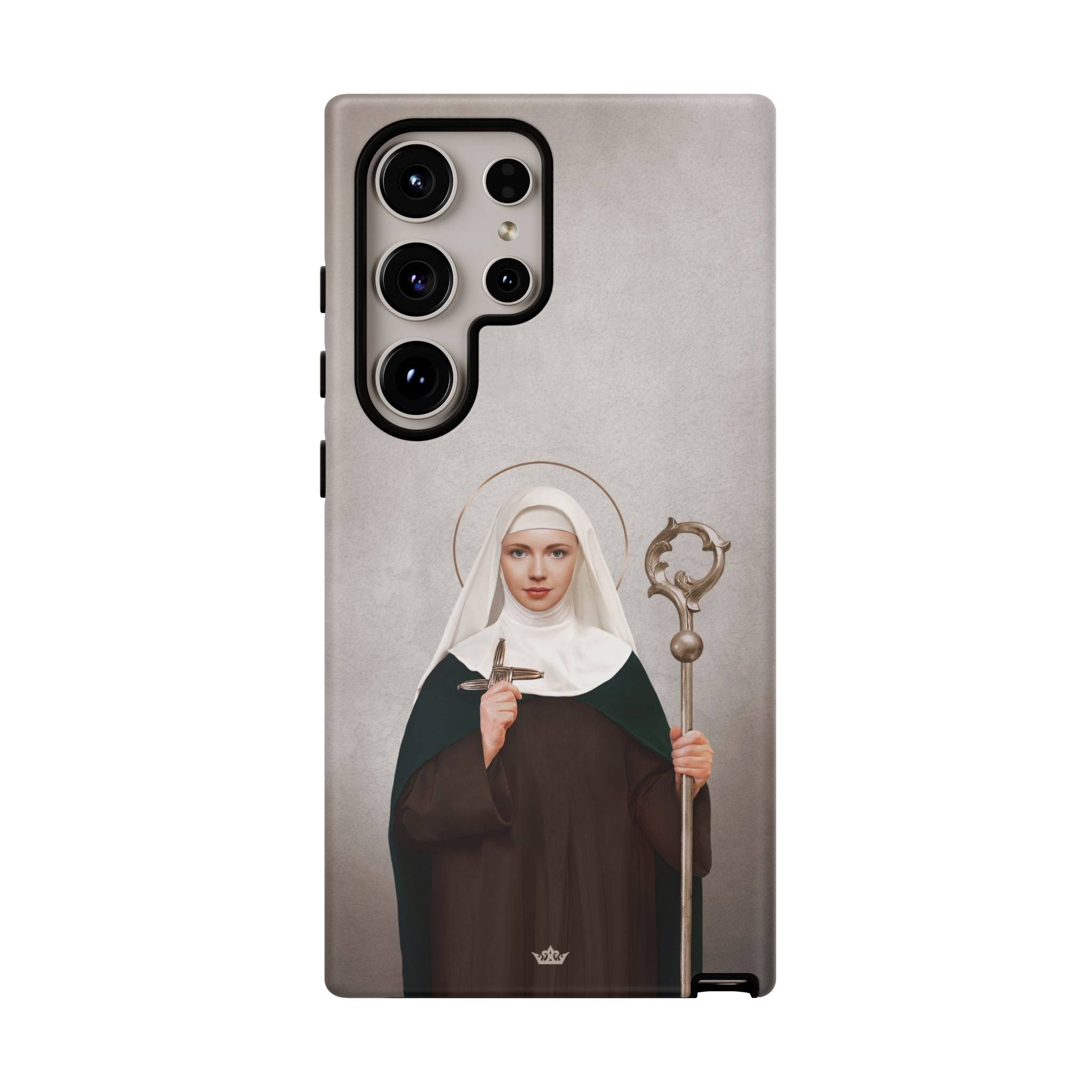
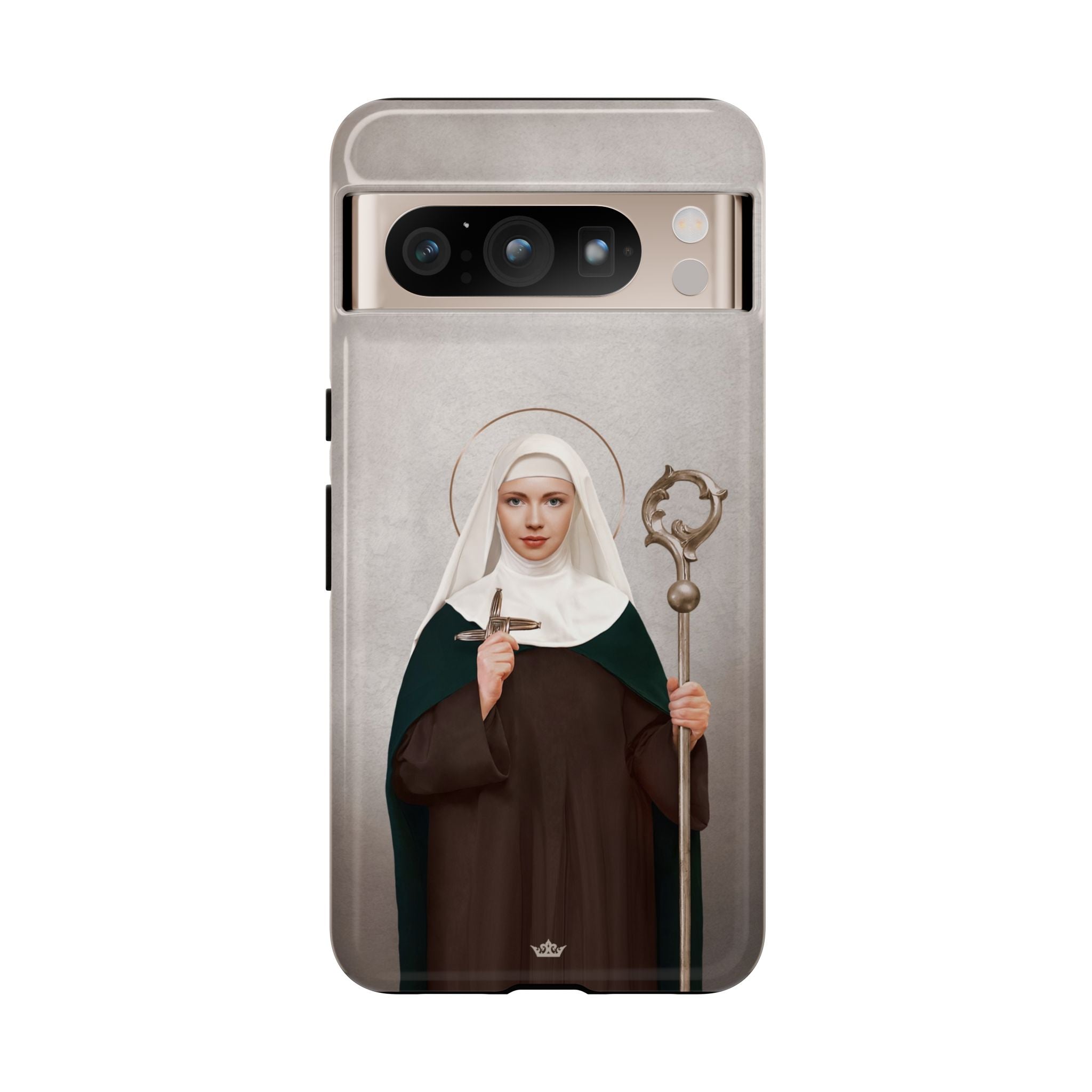
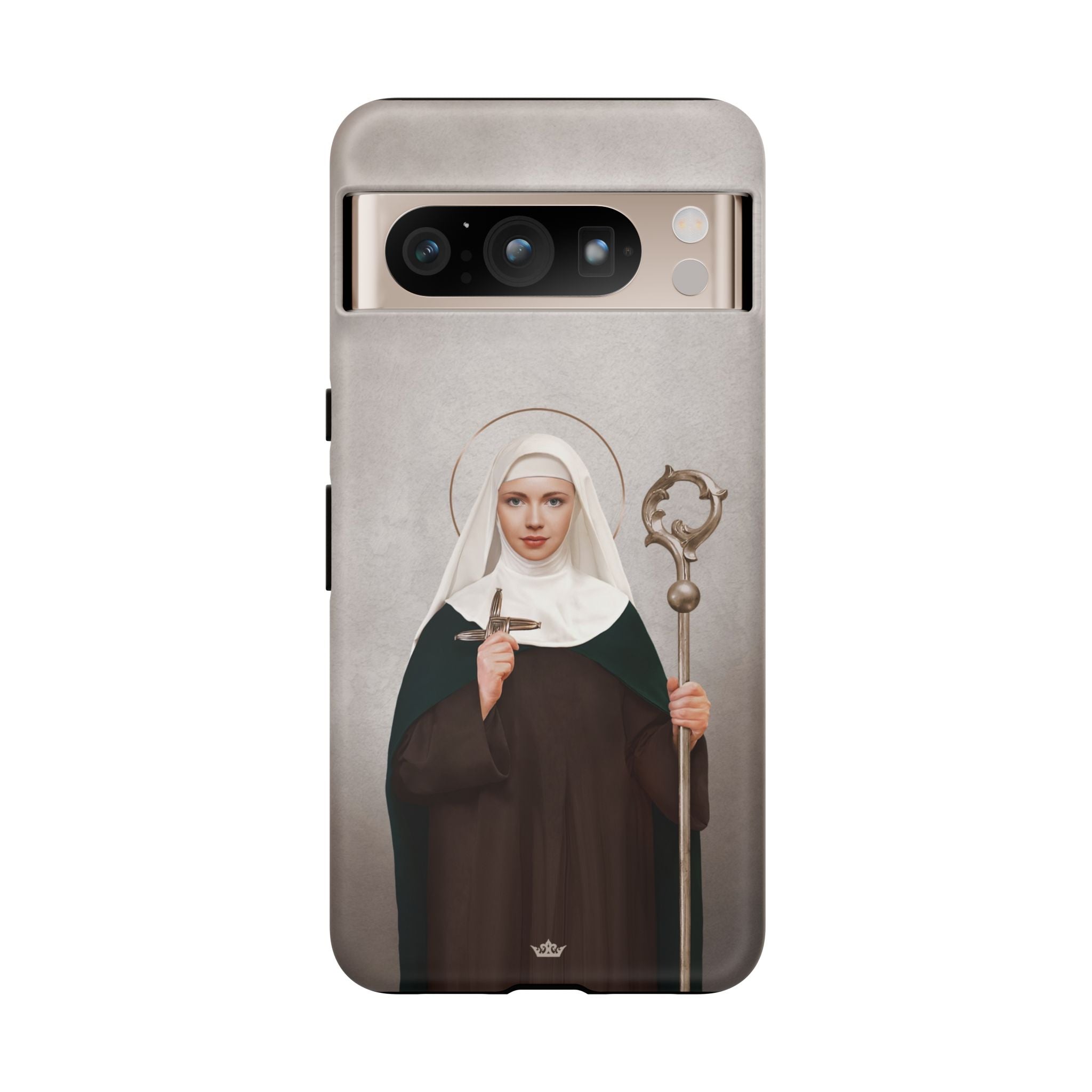
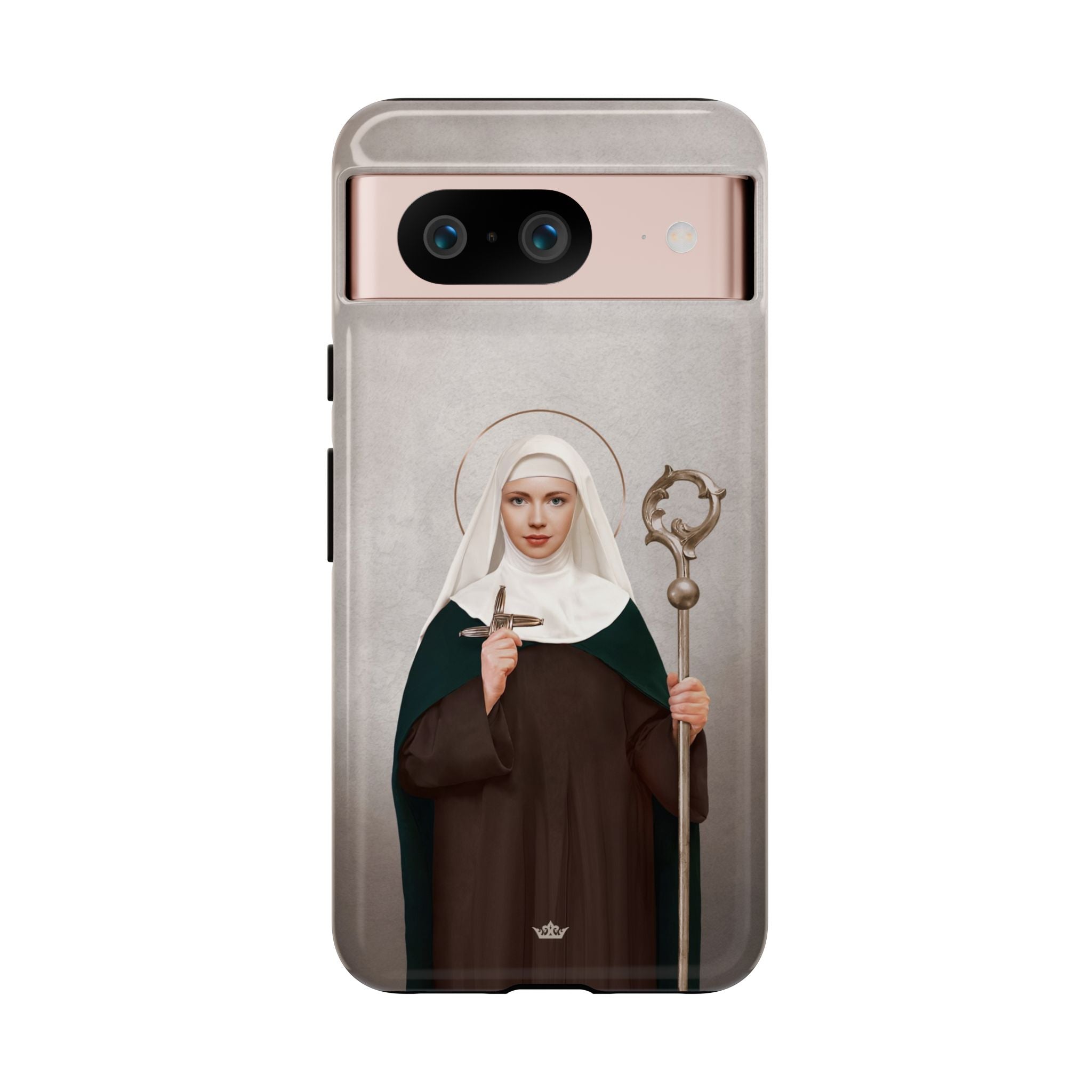
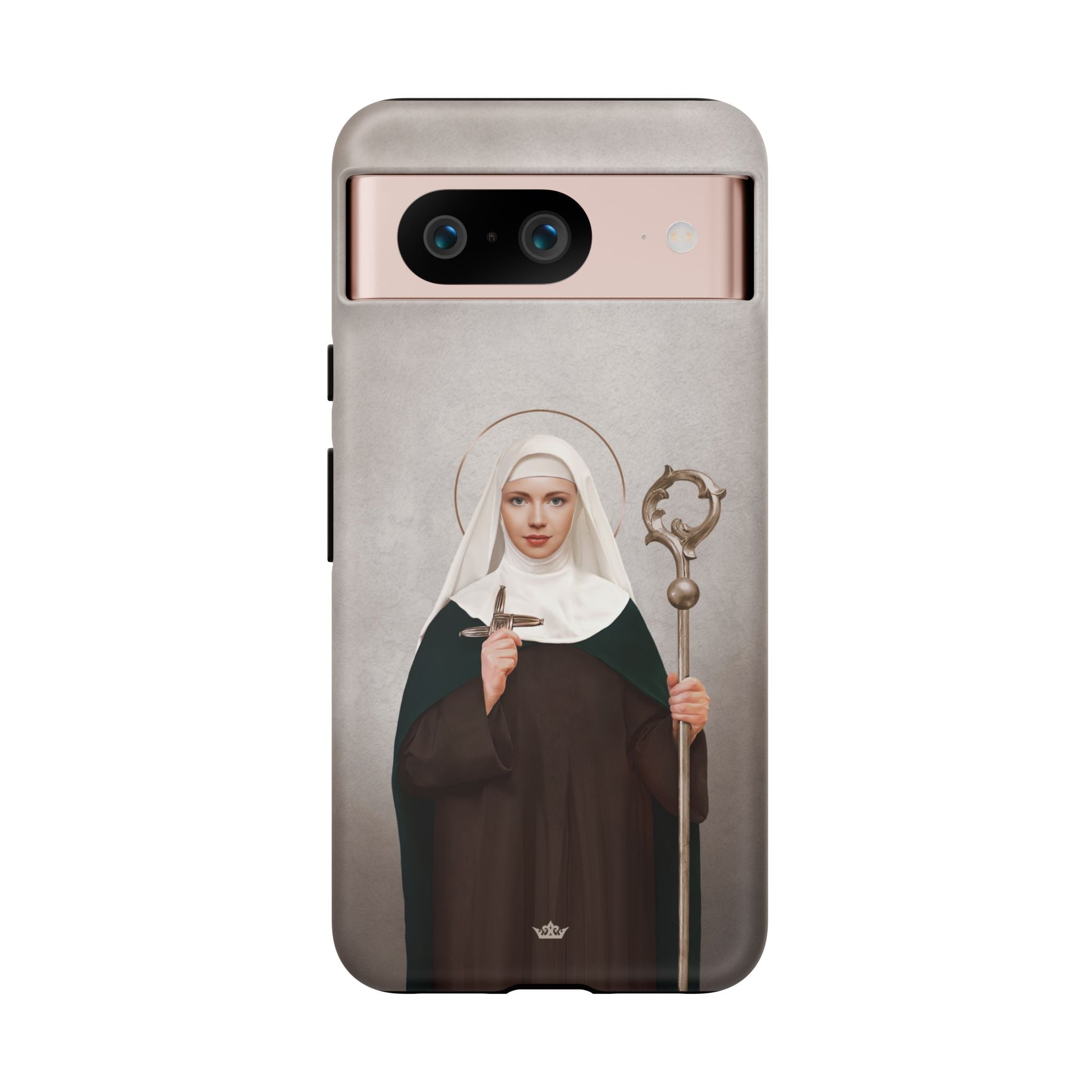
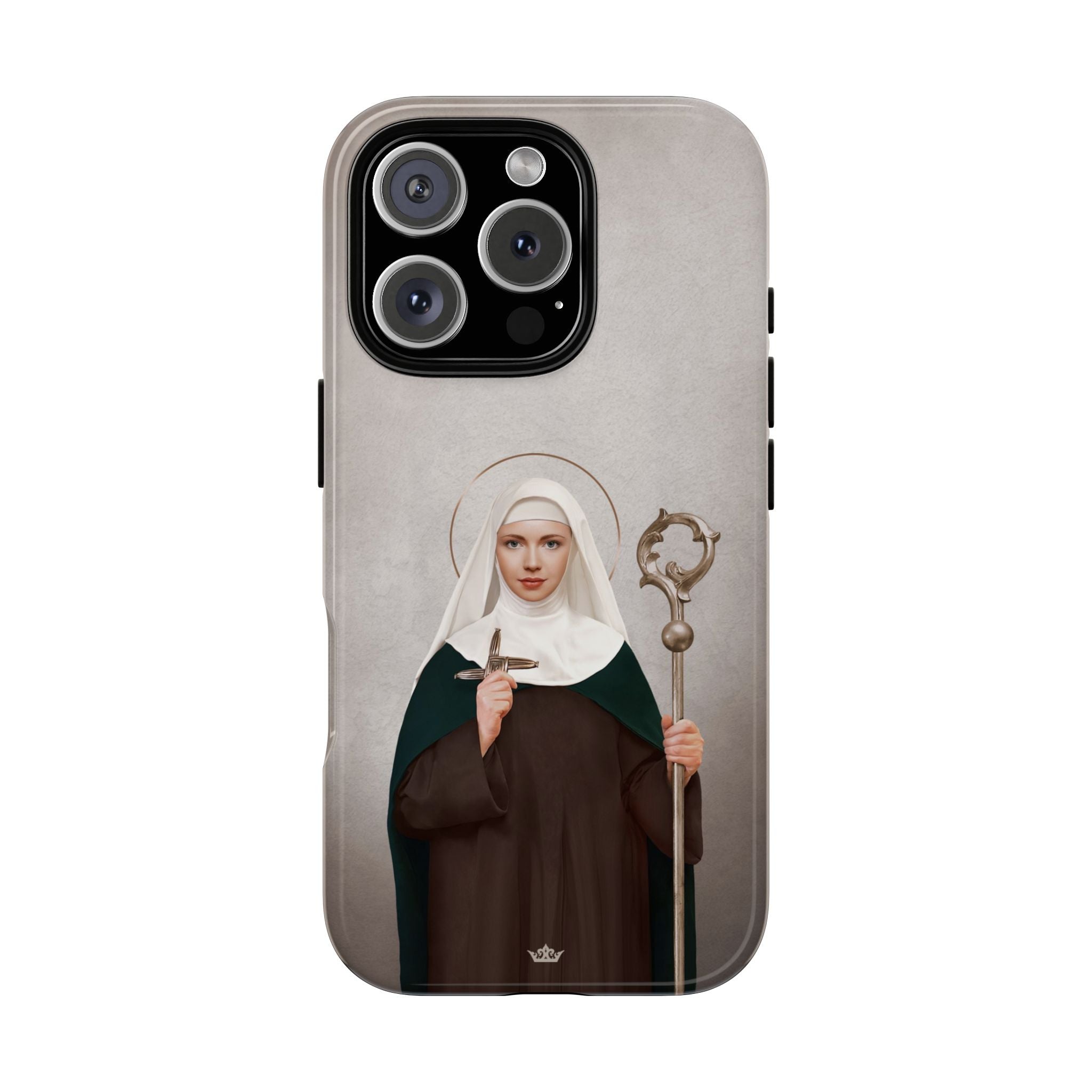
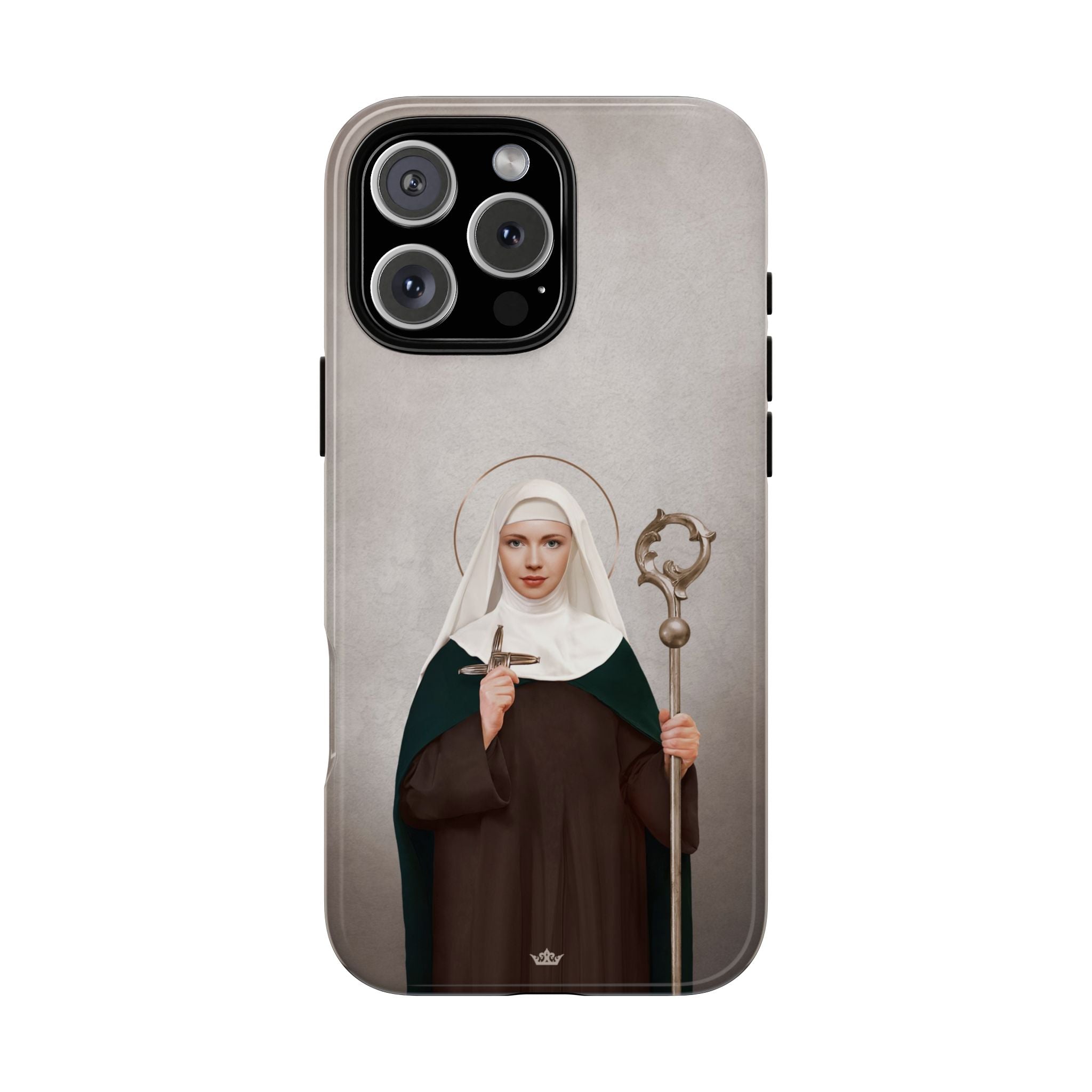
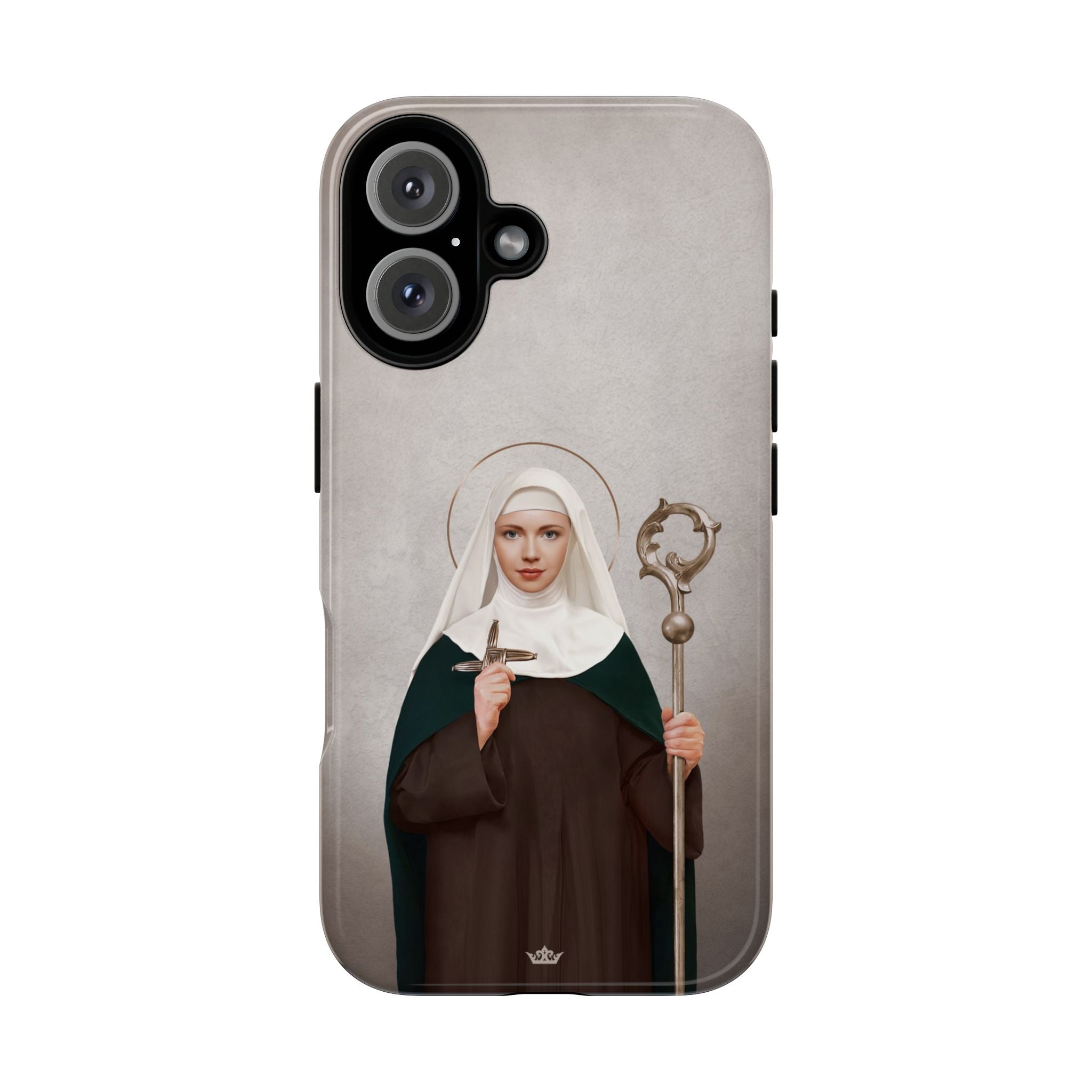
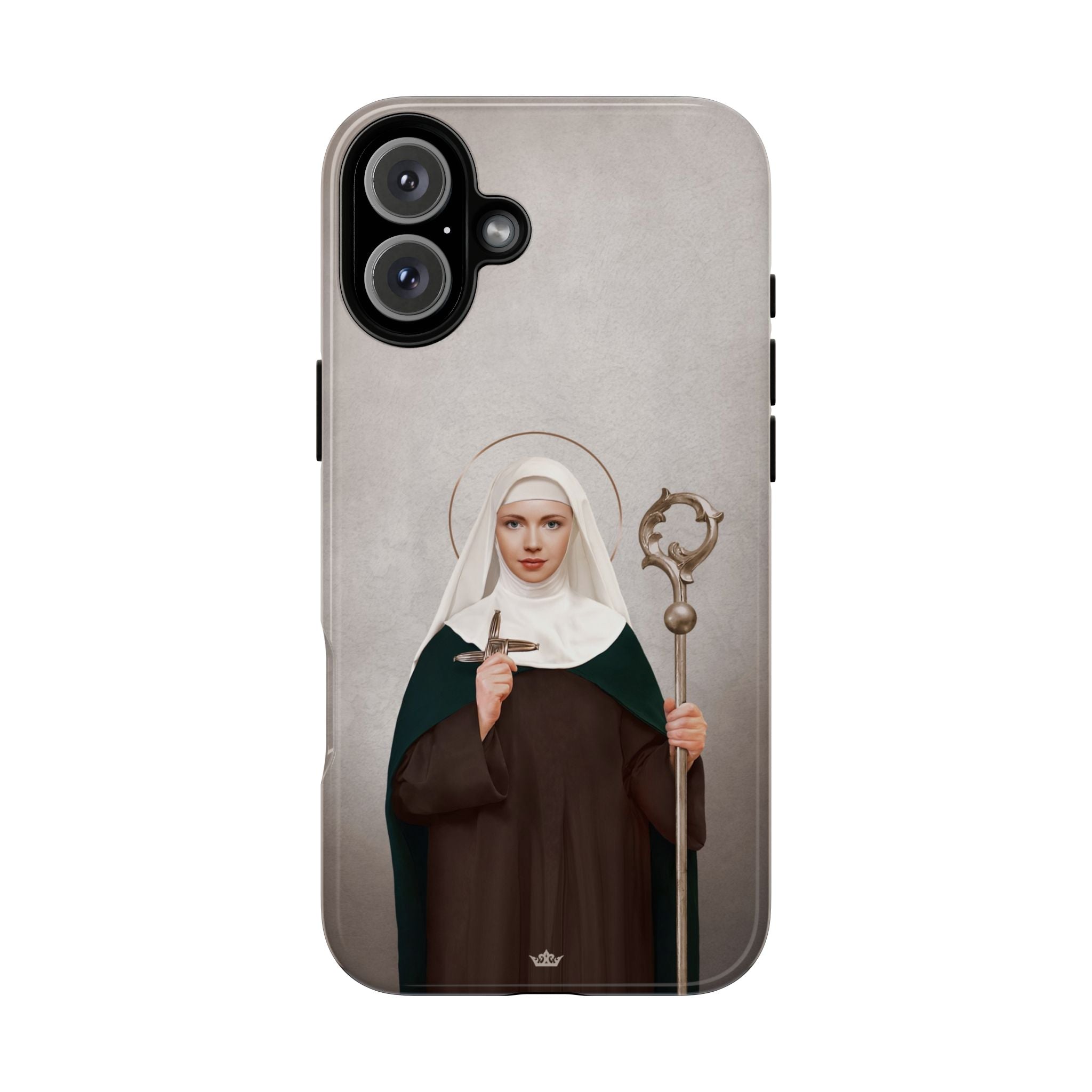
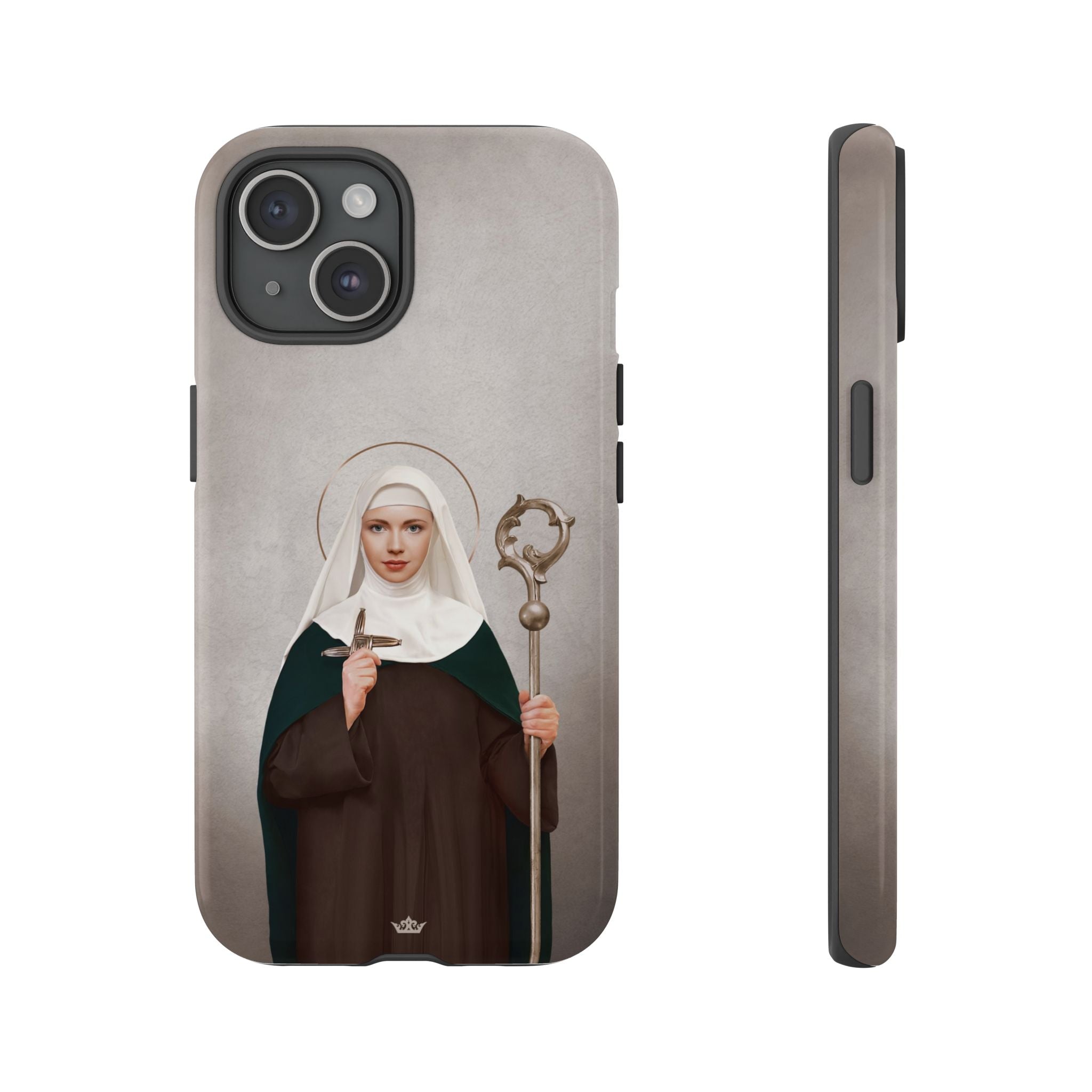
St. Brigid of Ireland Hard Phone Case (Light)
The St. Brigid of Ireland Hard Phone Case is a premium quality and durable impact resistant hard polycarbonate phone case with an inner thermoplastic polyurethane liner to protect your phone from bumps and drops while maintaining a slim, sleek profile. A beautiful accessory to carry and share your faith or a truly unique gift.
■ Exterior finishes: Glossy or Soft Touch Matte
■ Available for iPhone | Samsung | Google

This is a couture item which is custom made-on-demand. Our couture collections feature exclusive, custom designs with our signature crown somewhere within the design. Not sold in stores and you won’t find this anywhere else. EXCLUSIVELY AT VENXARA.
Shipping + Delivery
These custom made-on-demand Hard Phone Cases ship world-wide directly from our case-makers in Wisconsin, USA. Destination tracking is available for most countries. A tracking number will be emailed to you once your order has shipped.
Production Time: 3-6 days
Ship Time: 3-12 days
Please Note: During peak shopping seasons, production and ship time may take a little longer than normal. If you are buying this item as a gift, please order as early as possible. We don't want to disappoint you or the gift recipient with a potentially delayed order.
For countries where tracking numbers are not available, this item should arrive by regular post within 2-4 weeks. Orders that have not arrived within 45 days of order processing are eligible for a free reshipment or a refund.
Glossy vs. Matte Finish
These Hard Phone Cases are available in a Glossy or Matte exterior finish. Understanding the differences will hopefully help you in deciding which option to choose.
The Matte Finish is smooth, has very little glare and does not show fingerprints and smudges. It has a luxe look to it but it can be a little slick when carrying or holding.
The Glossy Finish does show fingerprints and smudges and because it's glossy, it has a slight glare. But the gloss finish makes it easier to grip and less likely to slip out of your hand when carrying or holding.
Both are equally durable with a superior print quality. Incredible cases regardless of which finish you choose.
About St. Brigid

ST. BRIGID
451 — 525
Feast Day February 1
Patron Saint of Kildare, Ireland, healers, poets, blacksmiths, livestock and dairy workers.
She is traditionally associated with the Cross of St. Brigid, a form of the cross made from reeds or straw that is placed in homes for blessing and protection.
Brigid was born out of wedlock, the daughter of a pagan Scottish King named Dubthach and a Christian slave woman named Broicsech. Dubthach sold the child's pregnant mother to a new master, but contracted for Brigid to be returned to him eventually. She was baptized as an infant and raised by her Catholic mother. She was well-formed in the faith before leaving Broicsech's slave-quarters, at around age 10, to live with Dubthach and his wife.
Within the new circumstances of Dubthach household, Brigid's faith found expression in feats of charity. From the abundance of her father's food and possessions, she gave generously to the poor. Dubthach became enraged, threatening to sell Brigid – who was not recognized as a full family member, but worked as a household servant – to the King of Leinster. While Dubthach and King of Leinster bargained, she gave a treasured sword of her father‘s to a leper. Dubthach was about to strike her when Brigid explained she had given the sword to God through the leper, because of its great value. The King, a Christian, forbade Dubthach to strike her saying, “Her merit before God is greater than ours.” The King understood Brigid's acts of charity and convinced Dubthach to grant his daughter her freedom.
Released from servitude, Brigid was expected to marry. But she had other plans, which involved serving God in consecrated life. She disfigured her own face, marring her extraordinary beauty in order to dissuade suitors. Understanding he could not change her mind, Dubthach granted Brigid permission to pursue her plan, and material means by which to do so. Thus did a pagan nobleman, through this gift to his illegitimate daughter, play an unintentional but immense part in God's plan for Ireland.
While consecrated religious life was part of the Irish Church before Brigid's time, it had not yet developed the systematic character seen in other parts of the Christian world. Among women, vows of celibacy were often lived out in an impromptu manner, in the circumstances of everyday life or with the aid of particular benefactors. Brigid, with an initial group of seven companions, is credited with organizing communal consecrated religious life for women in Ireland.
Bishop Mel of Ardagh – St. Patrick's nephew, and later “St. Mel” – accepted Brigid's profession as a nun. The disfigurement she had inflicted on her face disappeared that day, and her beauty returned.
Around the time of St. Mel’s death, Brigid's community got an offer to resettle. Their destination is known today as Kildare - “Church of the Oak” - after the main monastery she founded there.
Brigid's life as a nun was rooted in prayer, but it also involved substantial manual labor: clothmaking, dairy farming, and raising sheep. In Ireland, as in many other regions of the Christian world, this communal combination of work and prayer attracted vast numbers of people during the sixth century. Kildare, however, was unique as the only known Irish “double monastery”: it included a separately-housed men's community, led by the bishop Saint Conleth.
Brigid traveled widely founding new houses and building up a uniquely Irish form of monasticism. When she was not traveling, many pilgrims – including prominent clergy, and some future saints – made their way to Kildare, seeking the advice of the abbess.
Under Brigid's leadership, Kildare played a major role in the successful Christianization of Ireland. Brigid died in 525 at the age of 74. She is said to have received the last sacraments from a priest, Saint Ninnidh, whose vocation she had encouraged.
Choose options

































































































